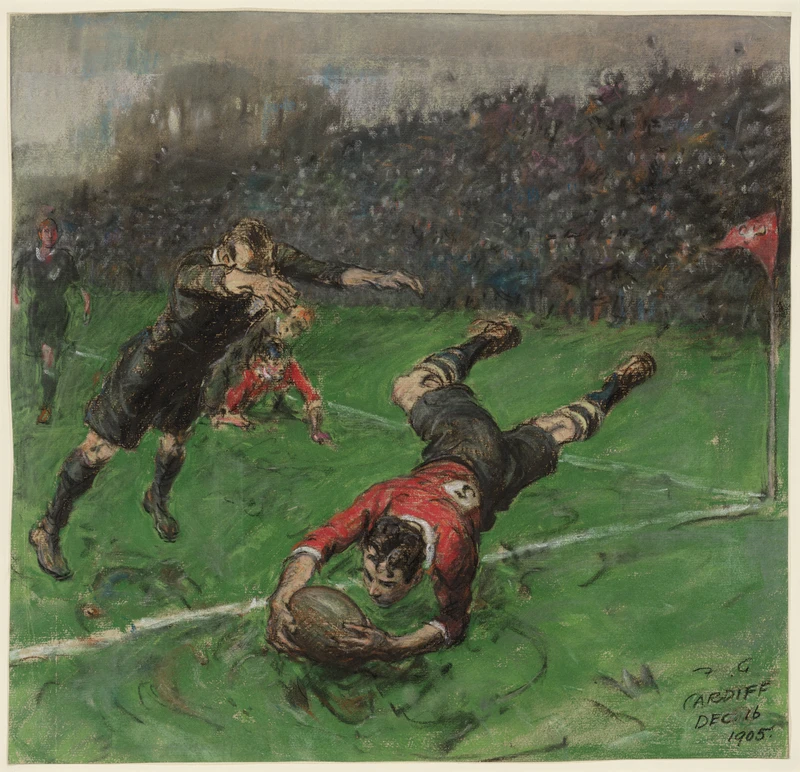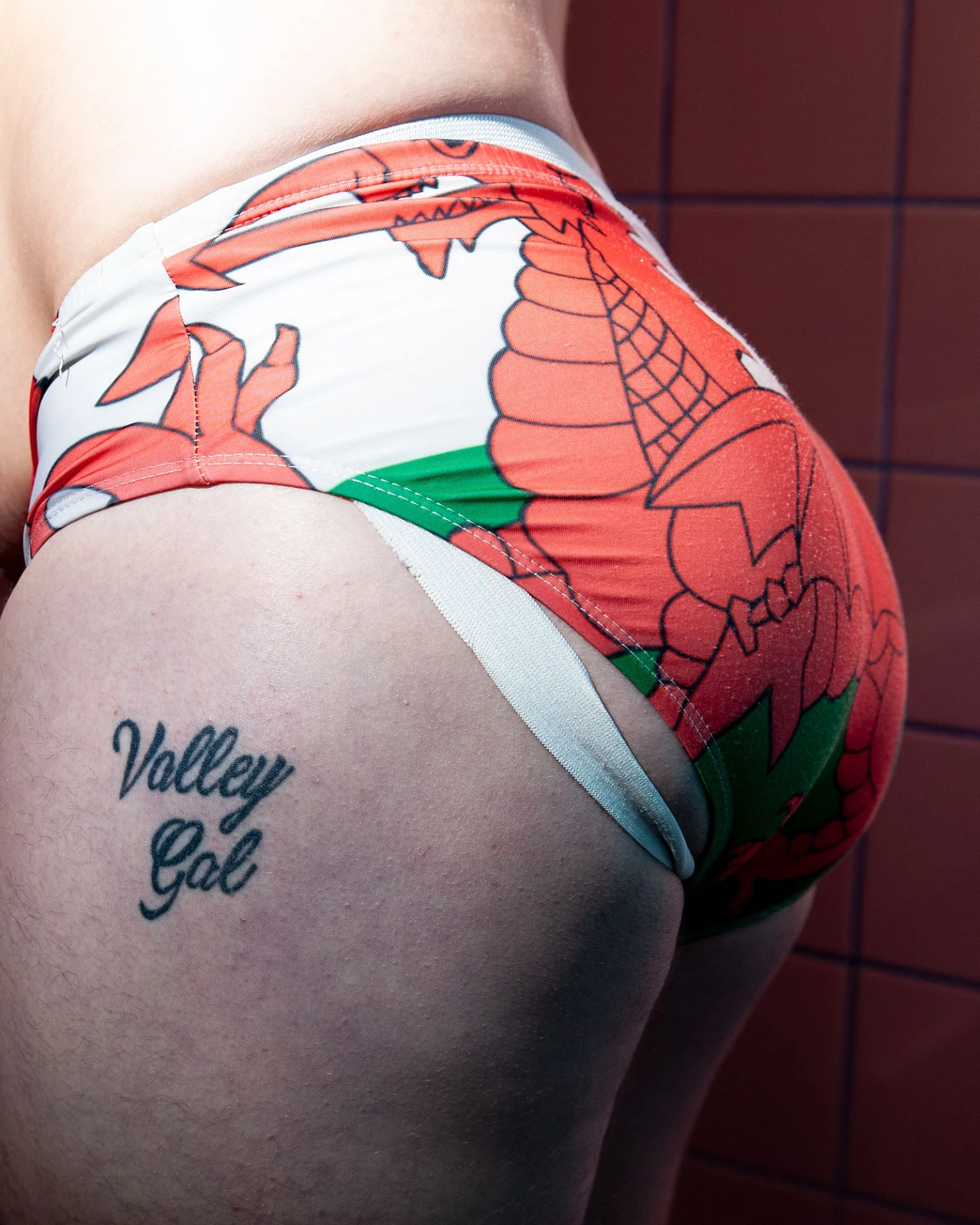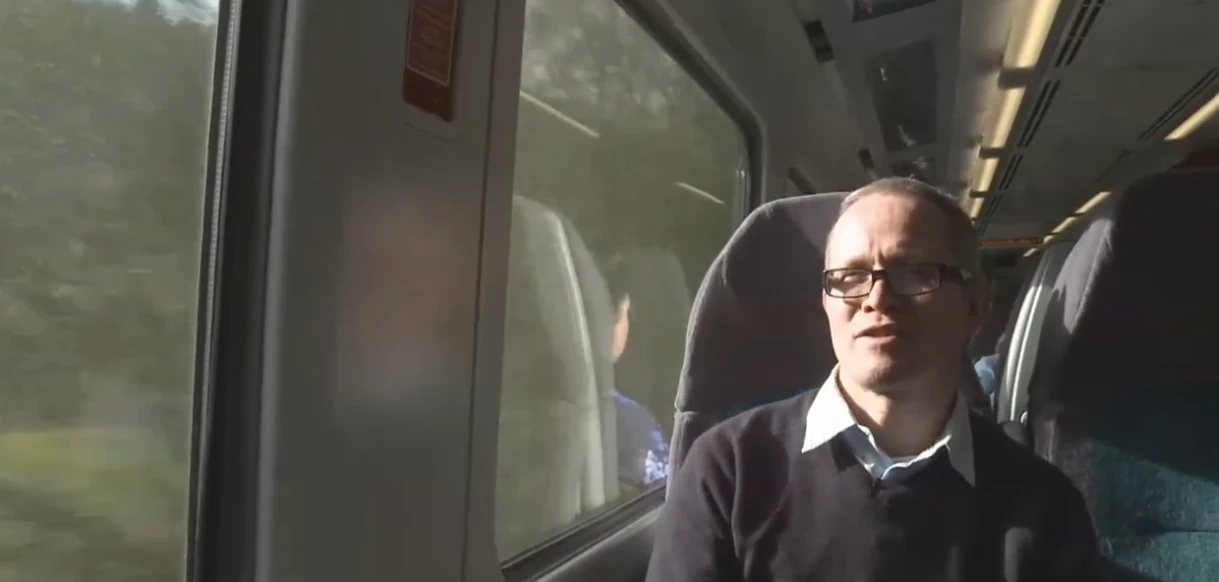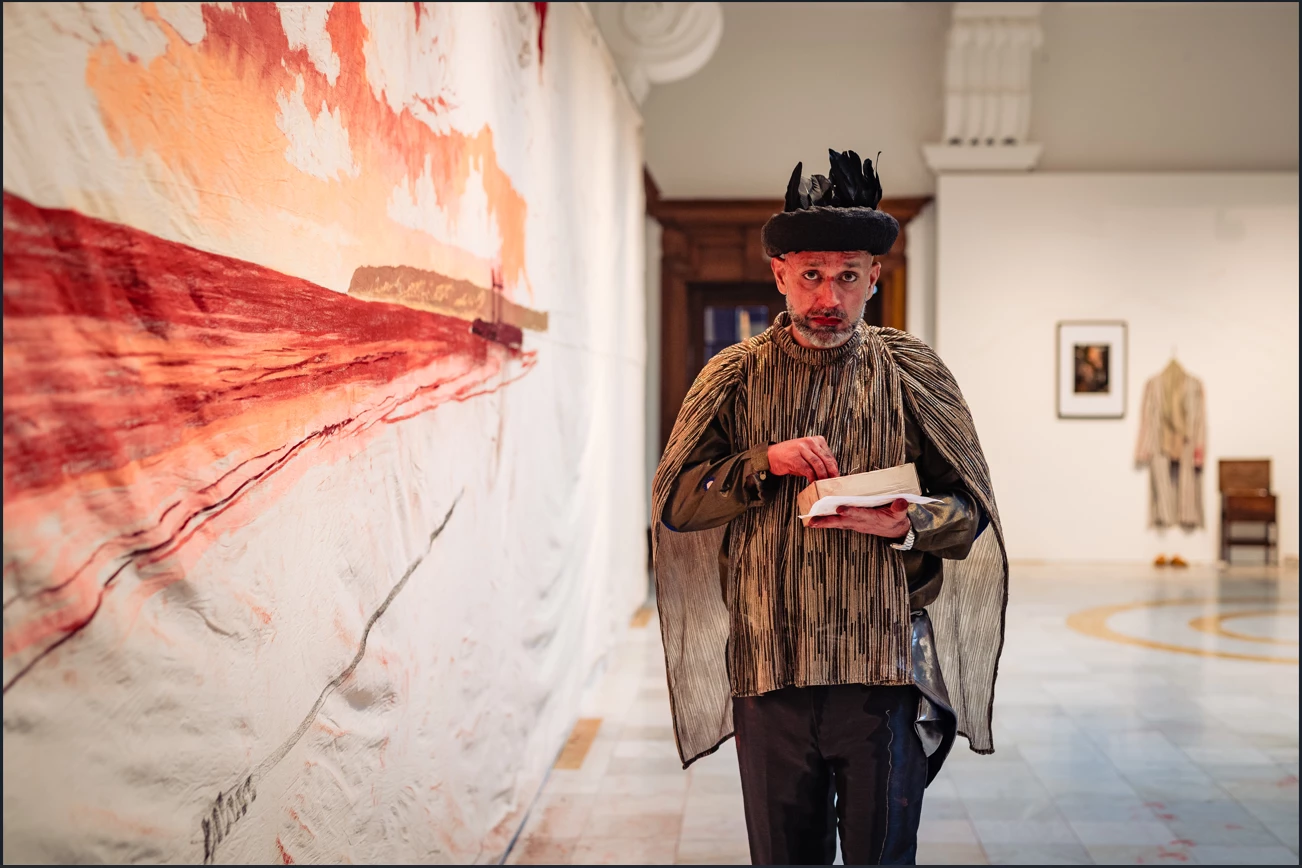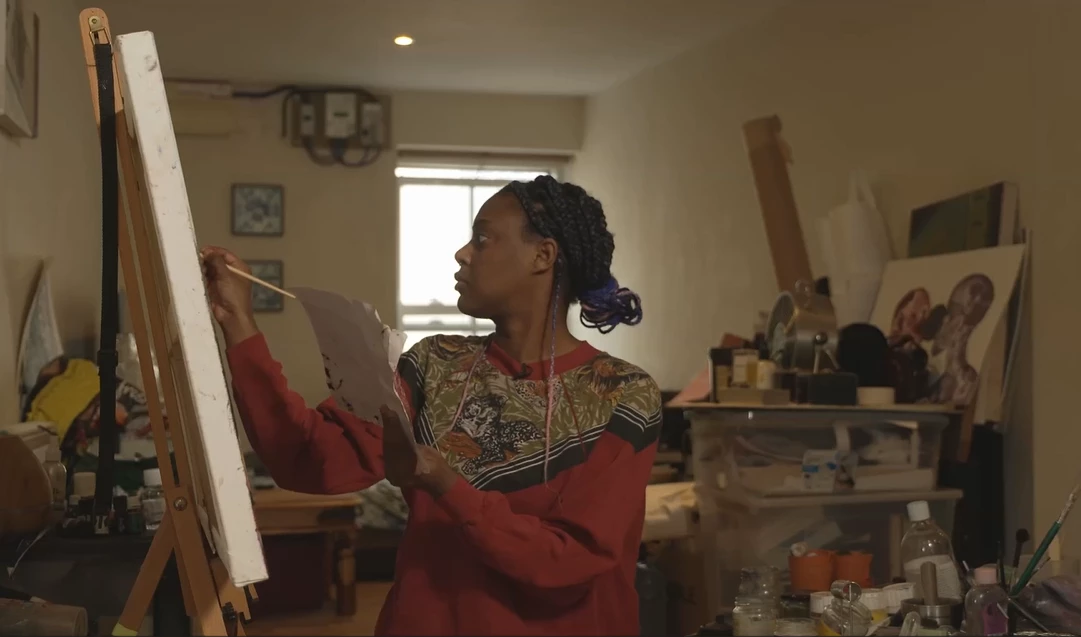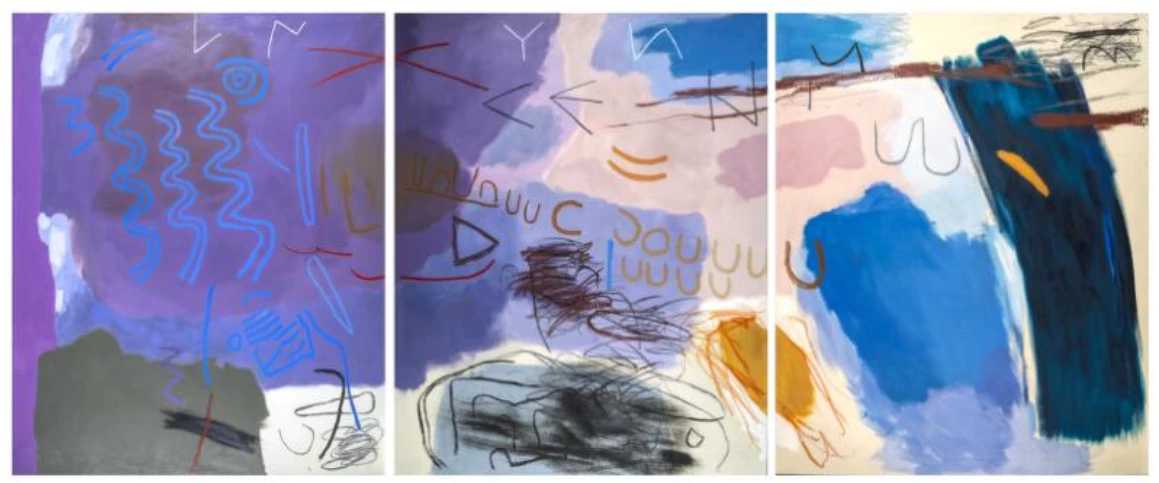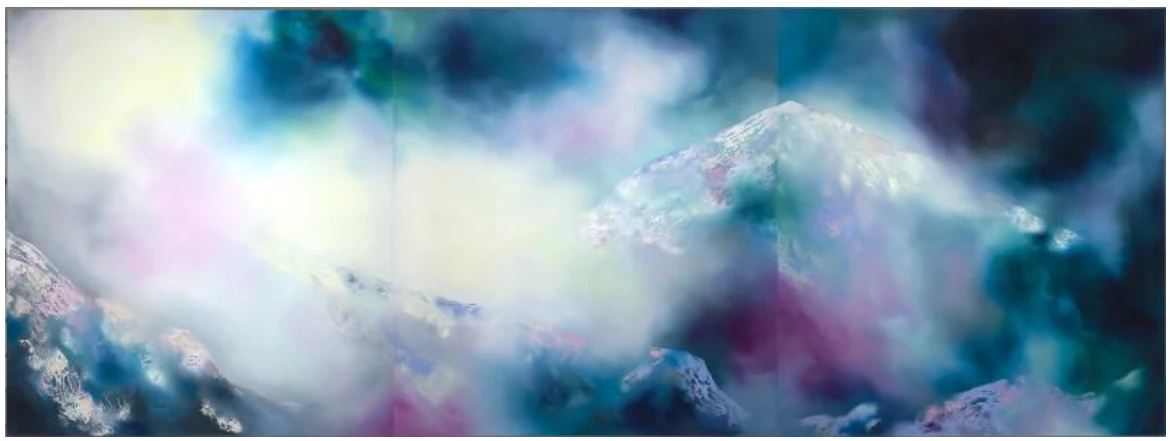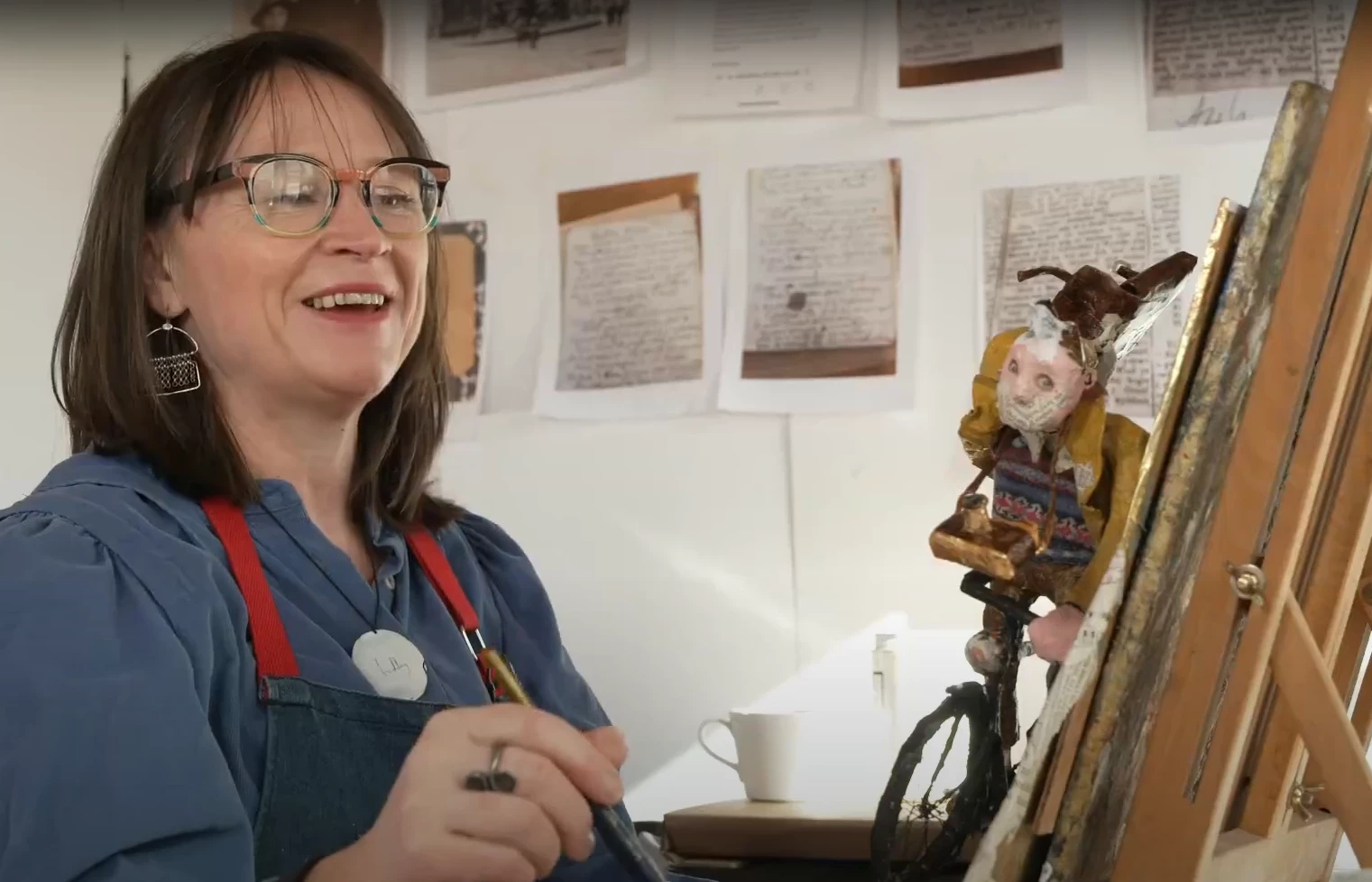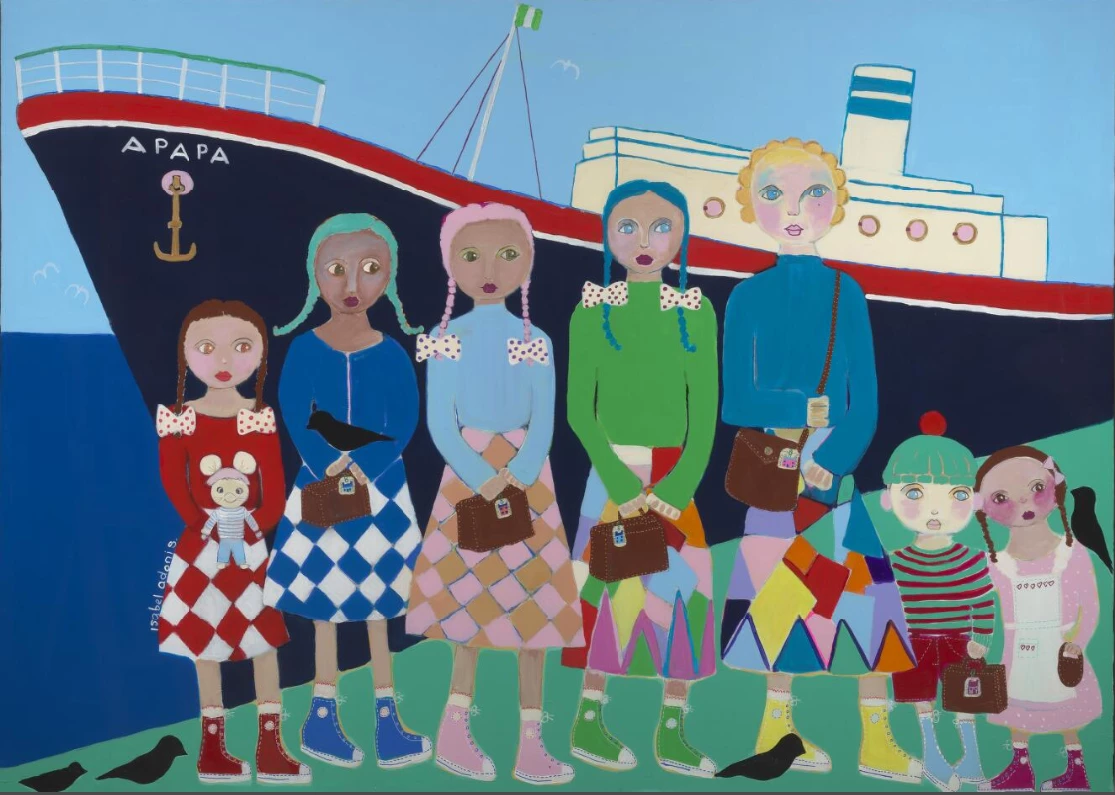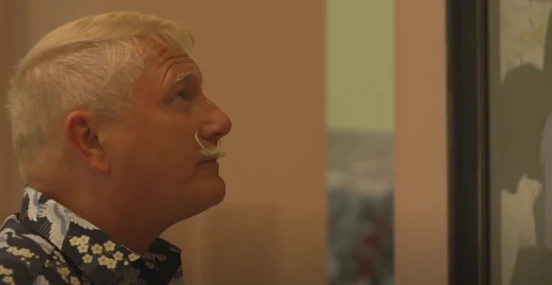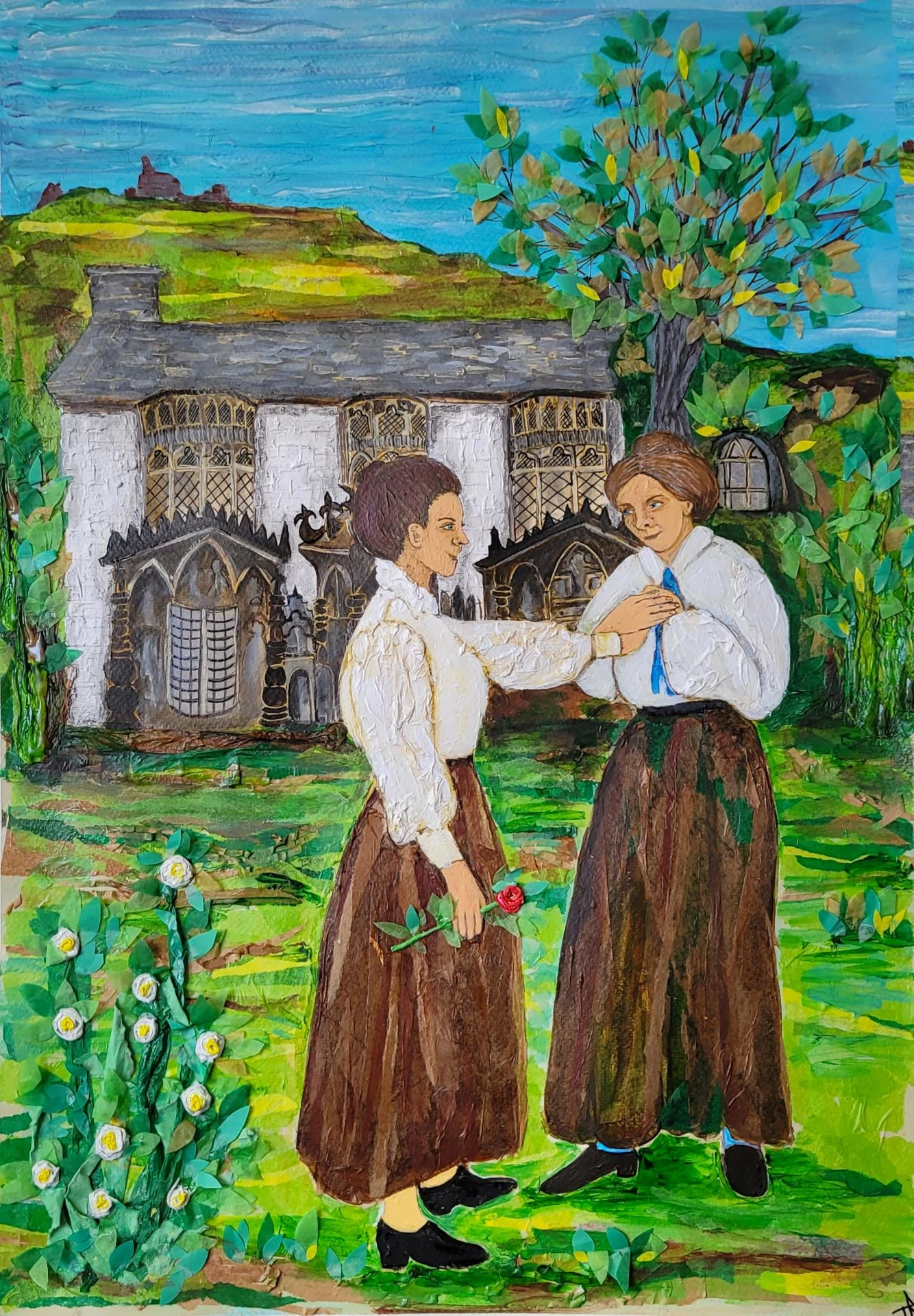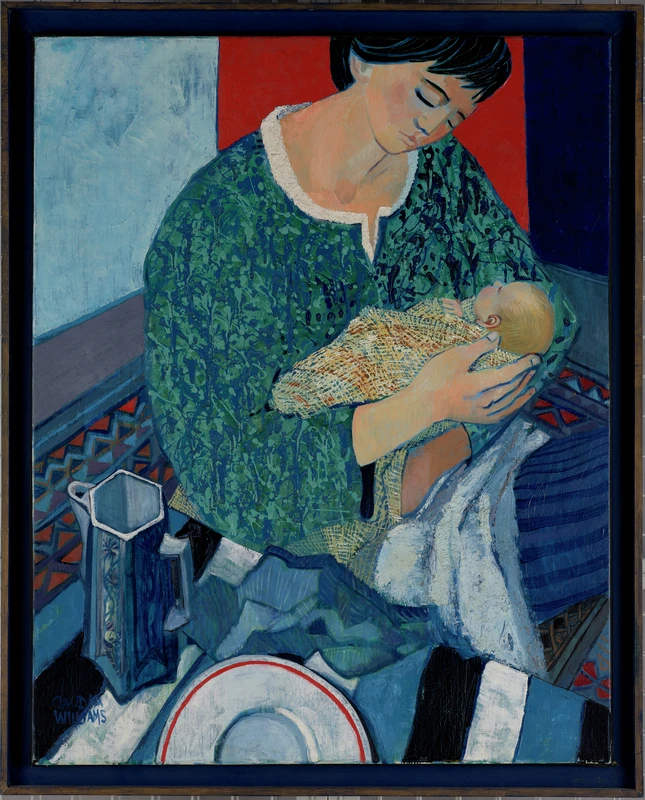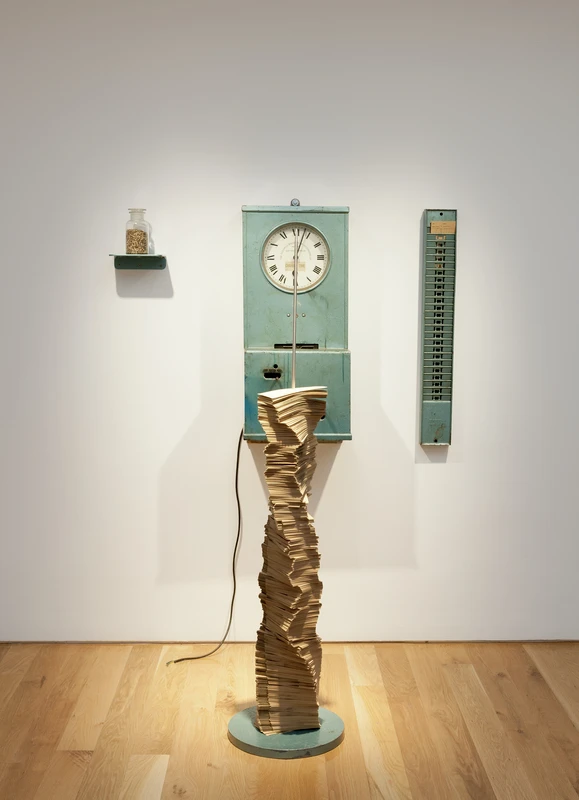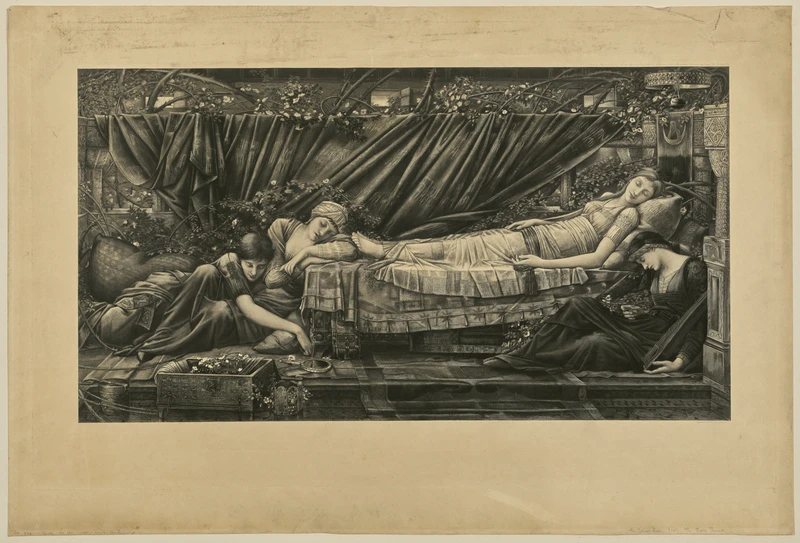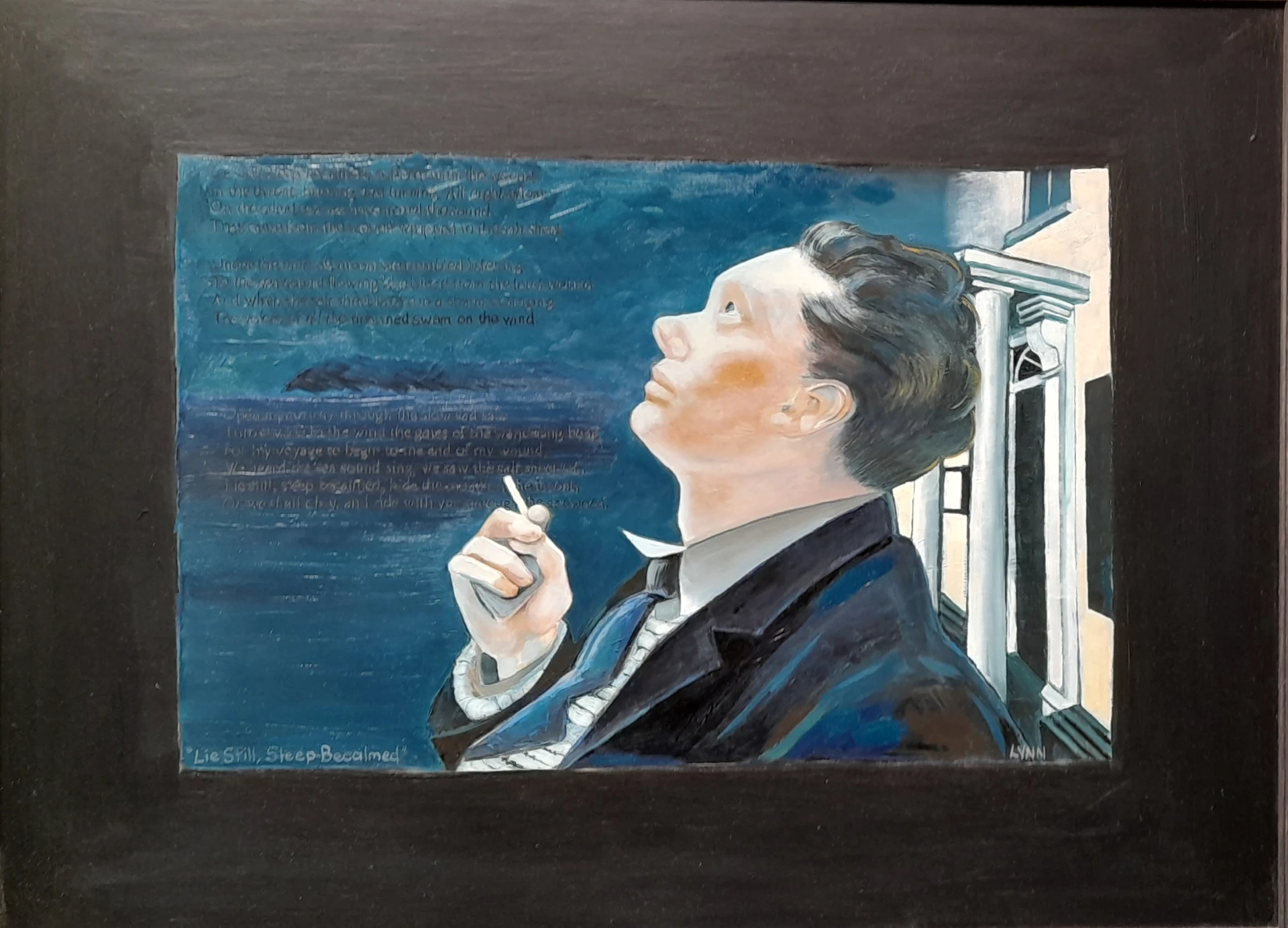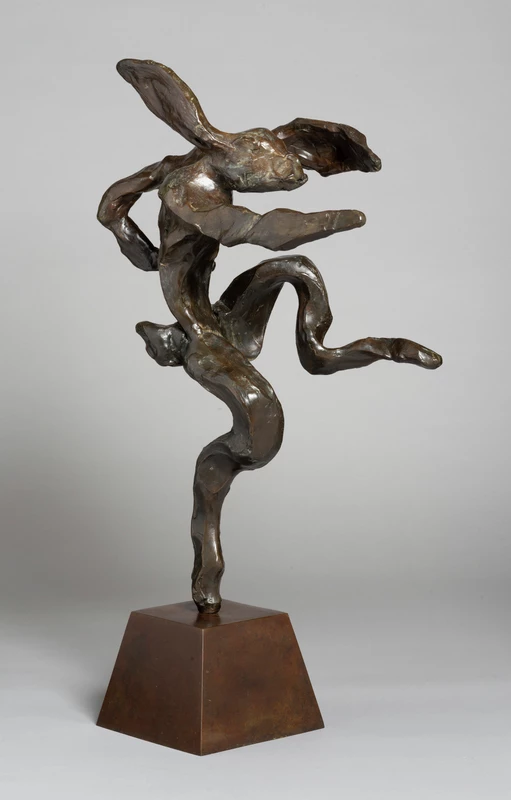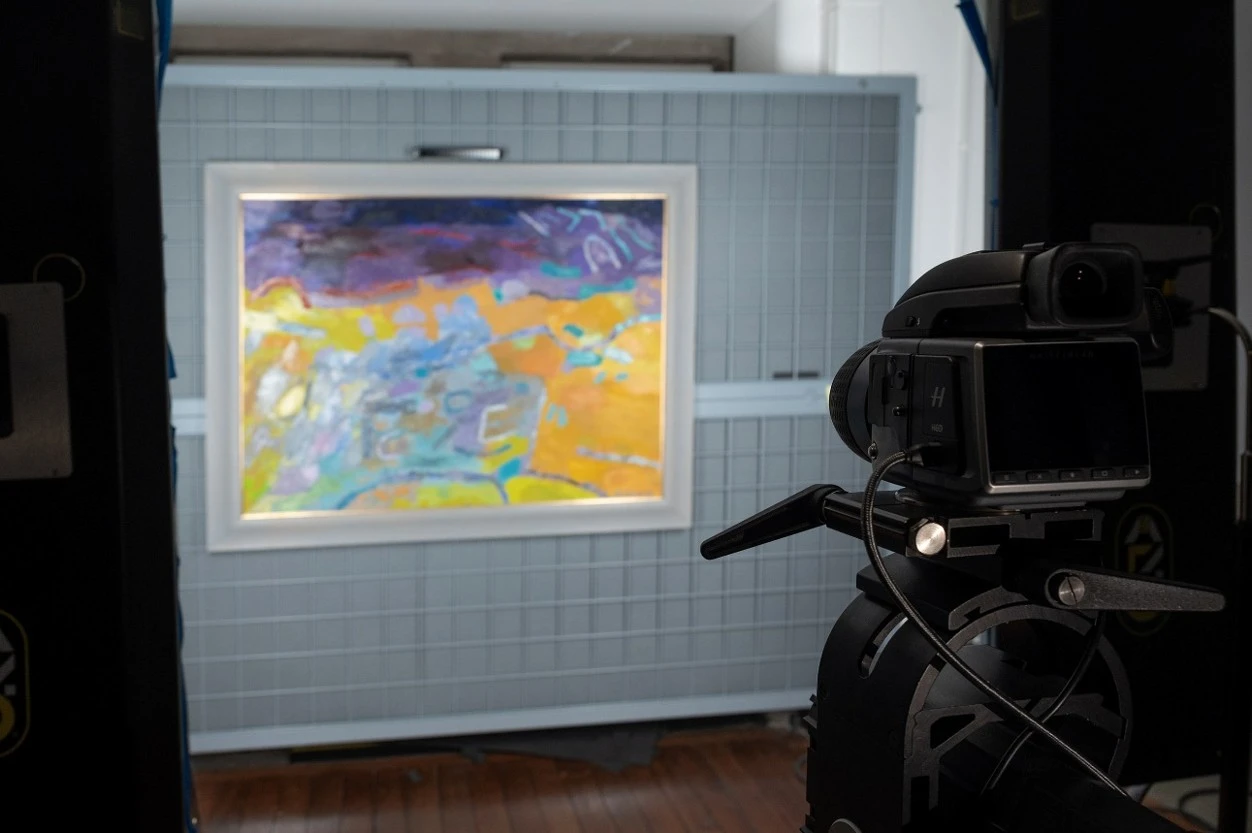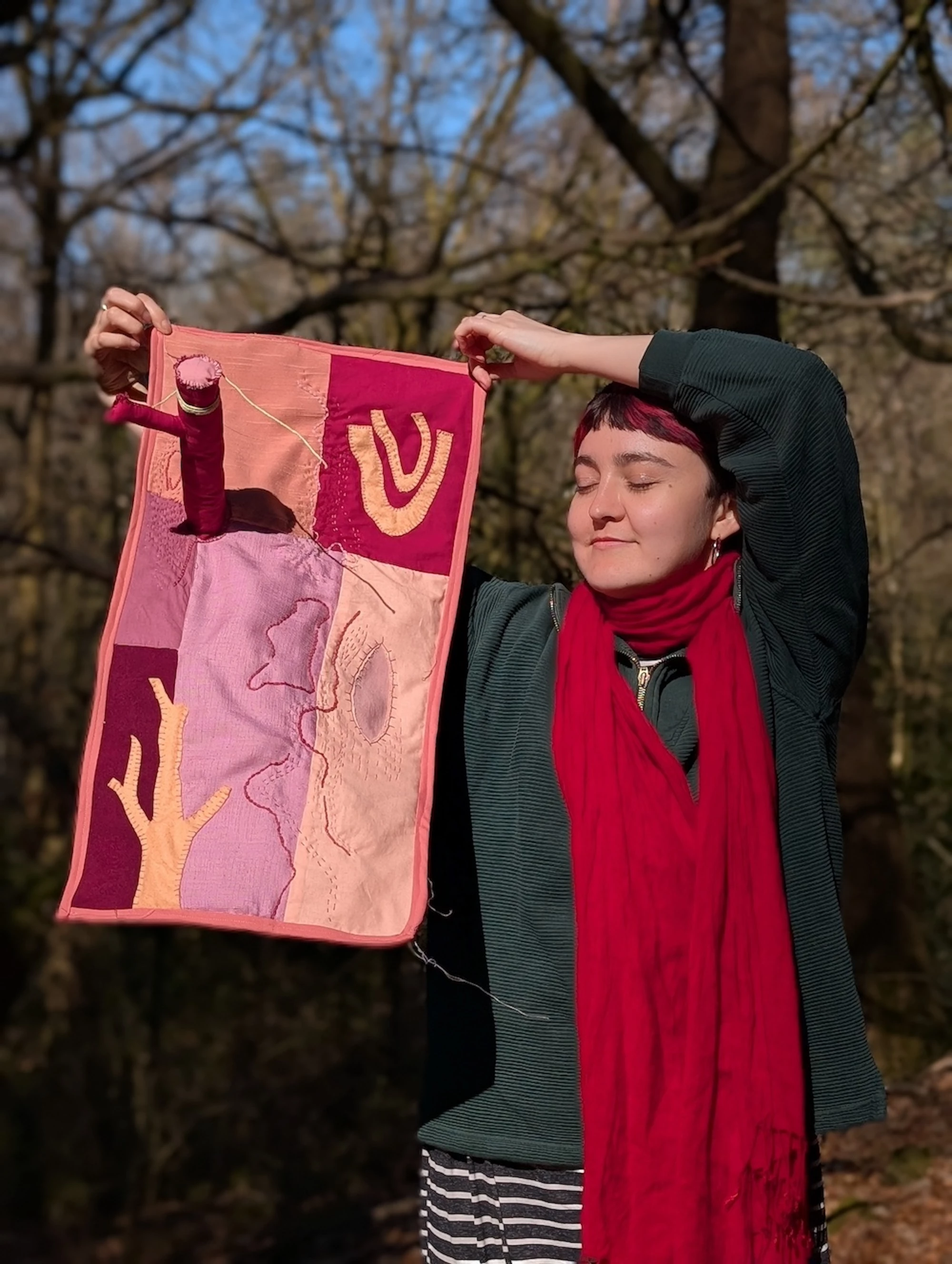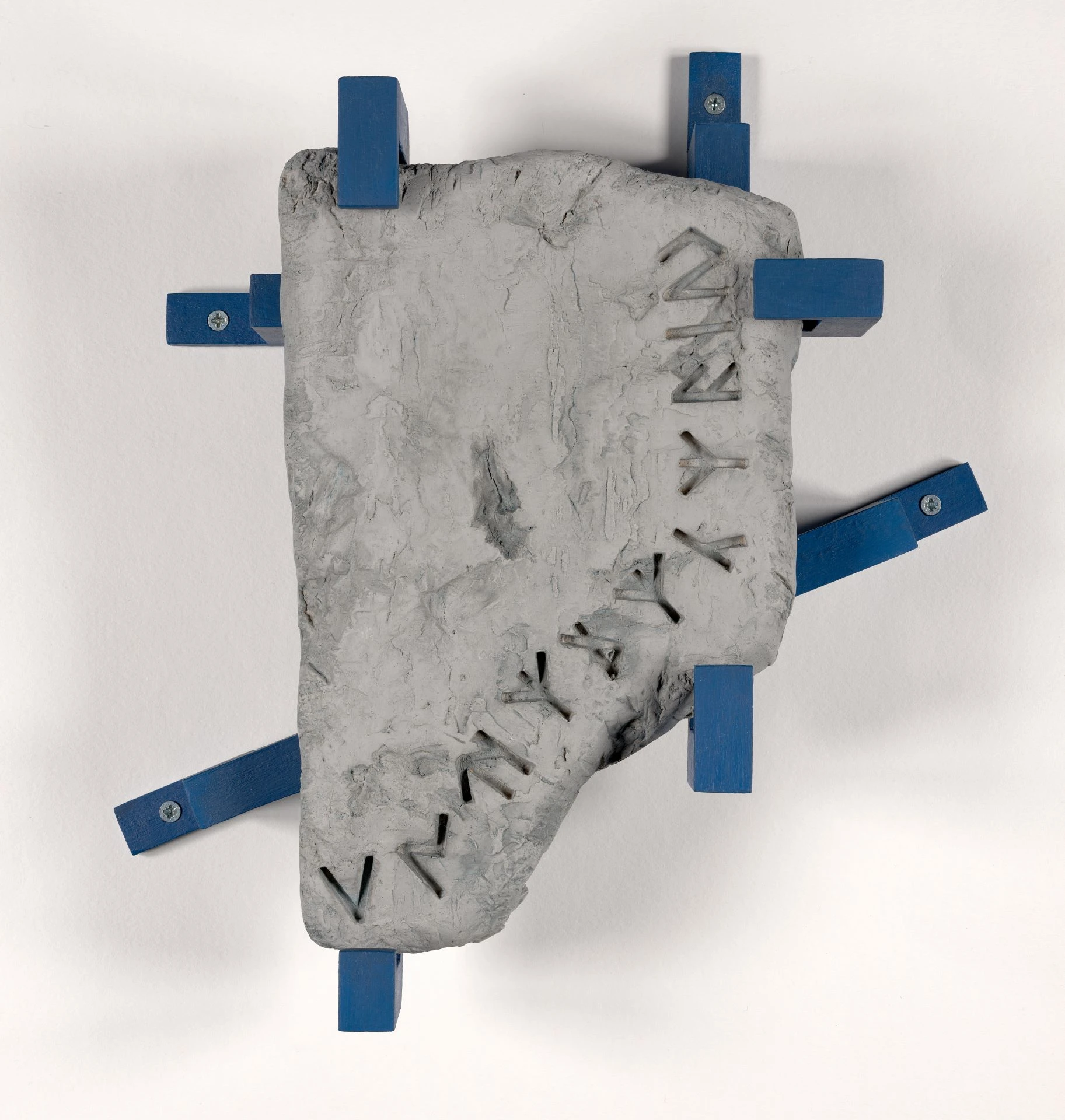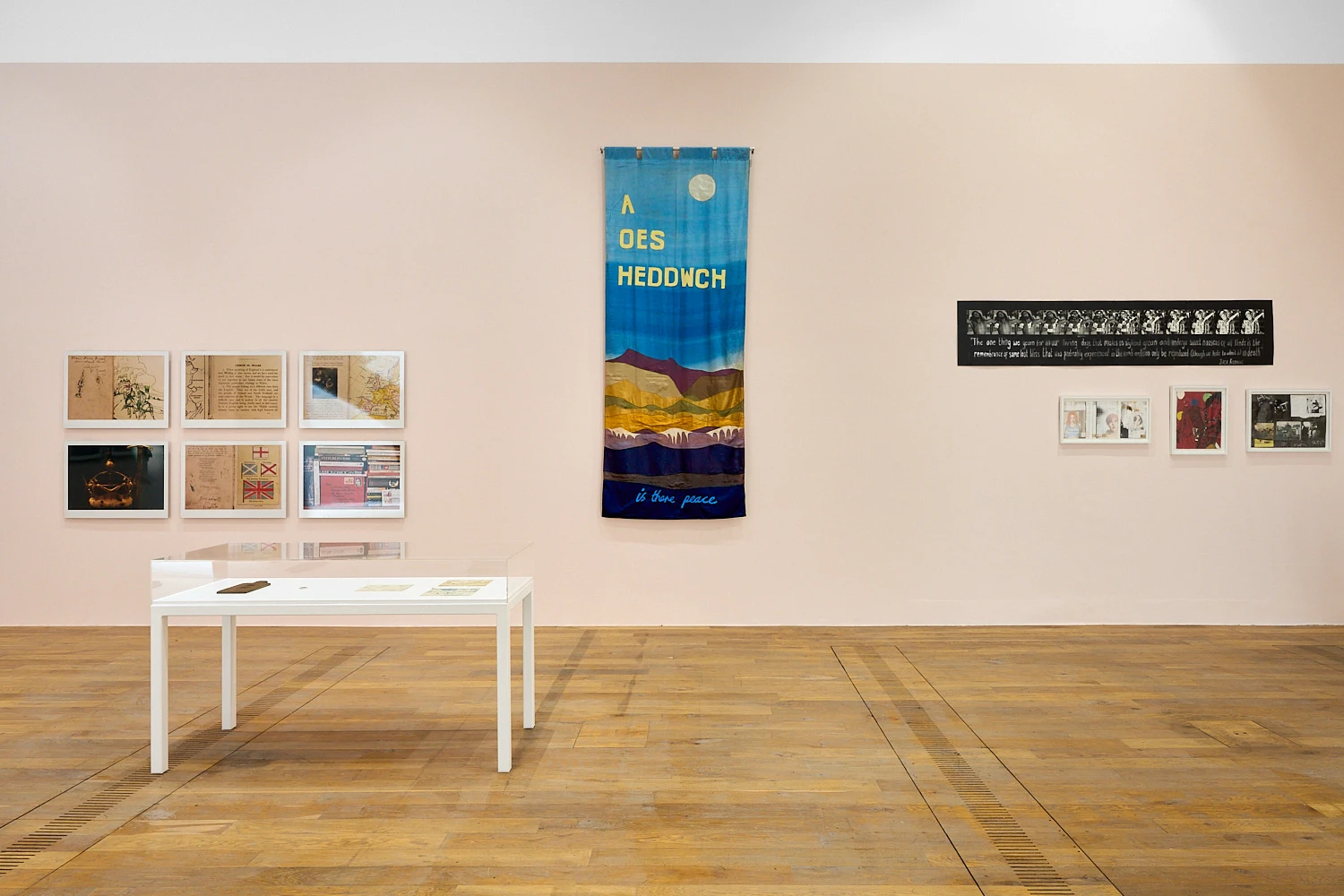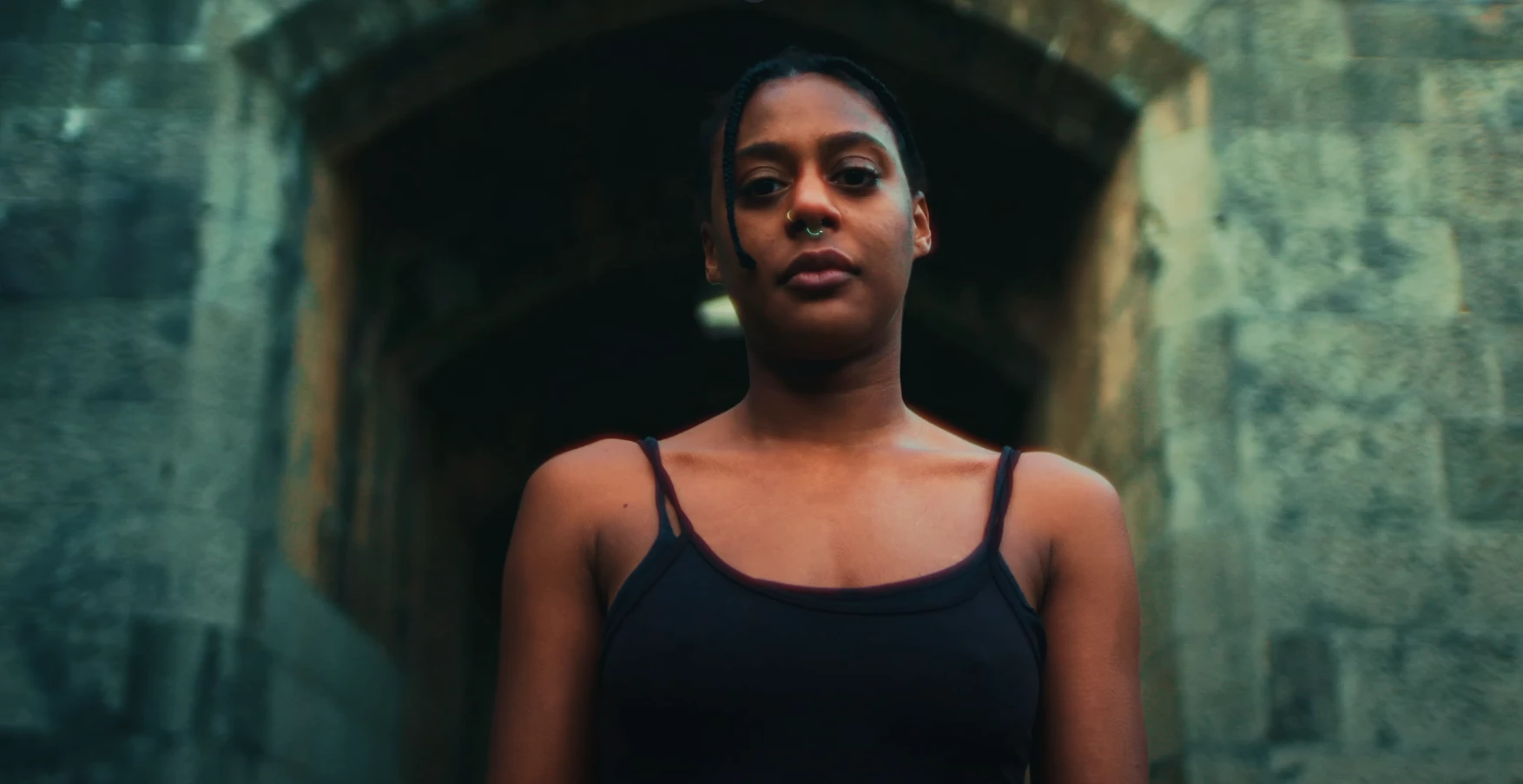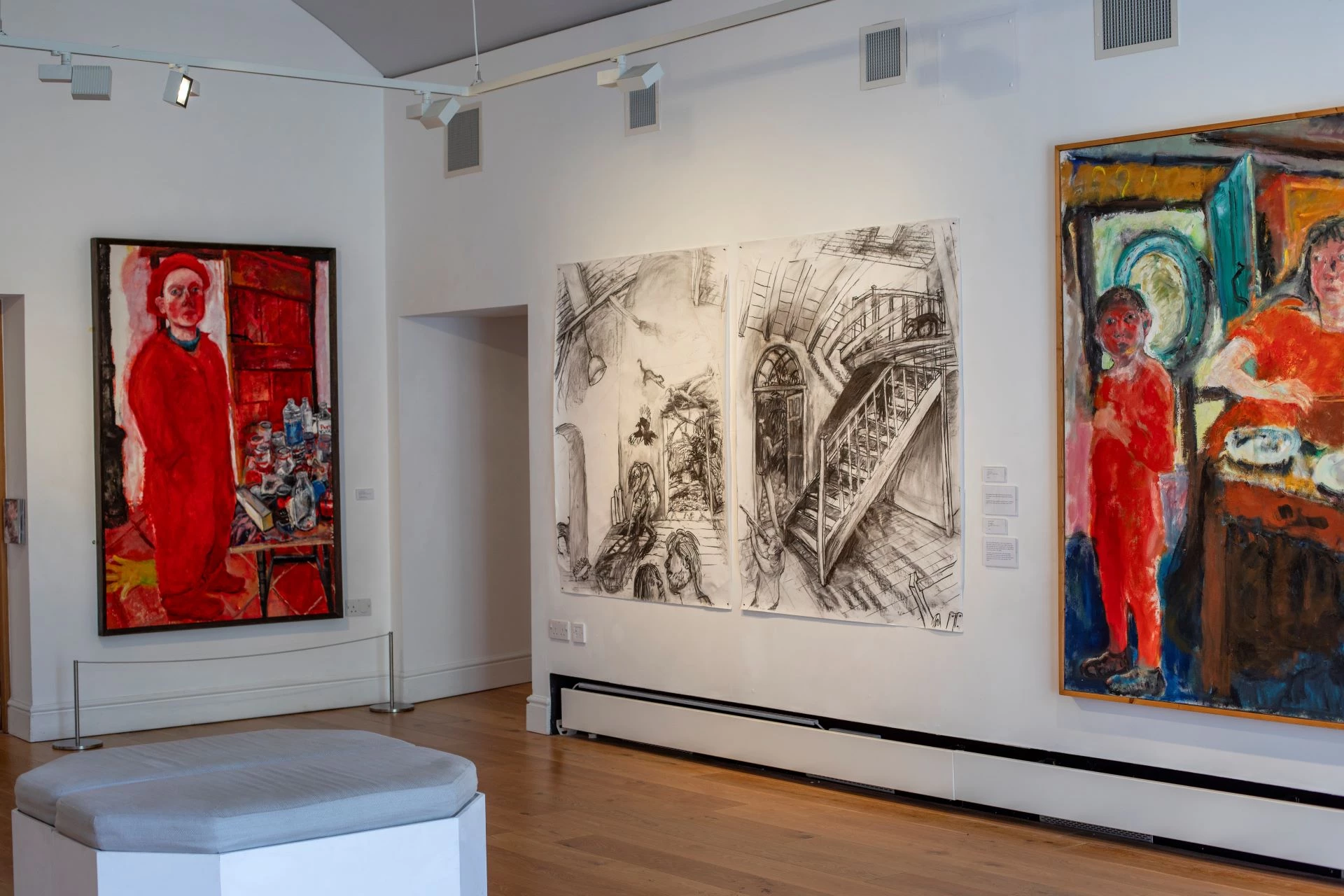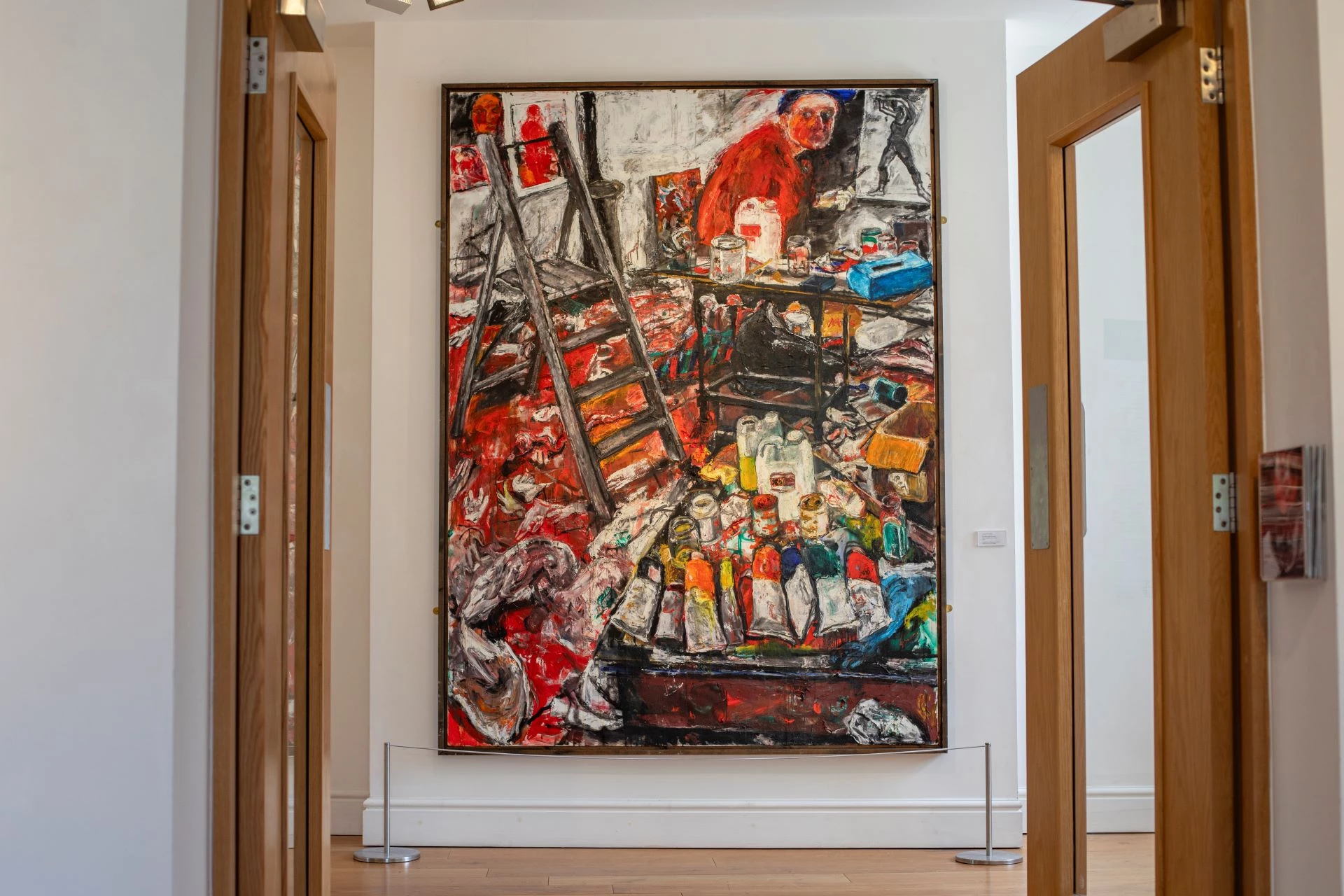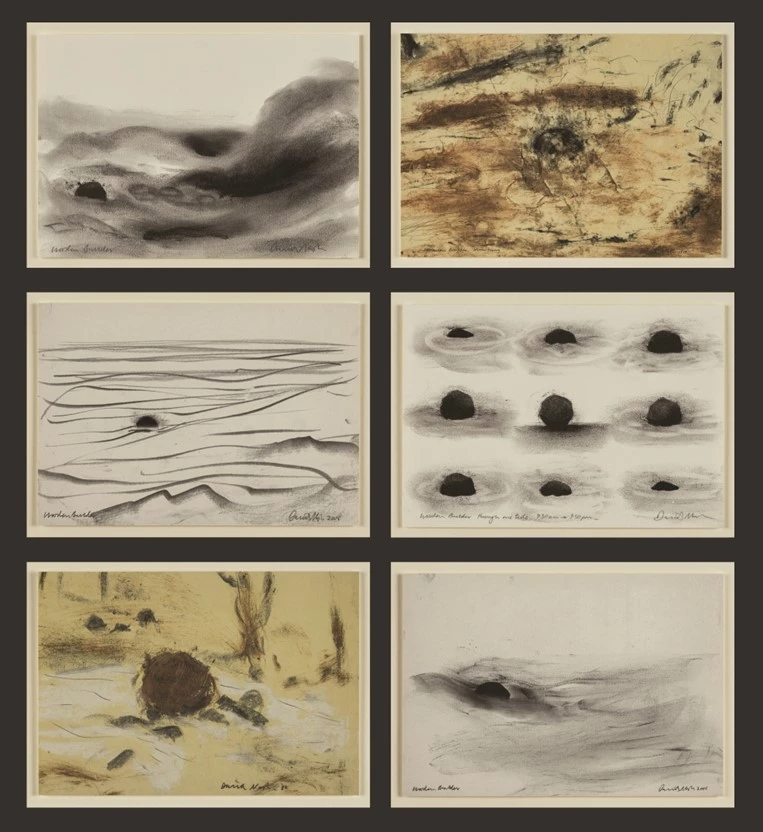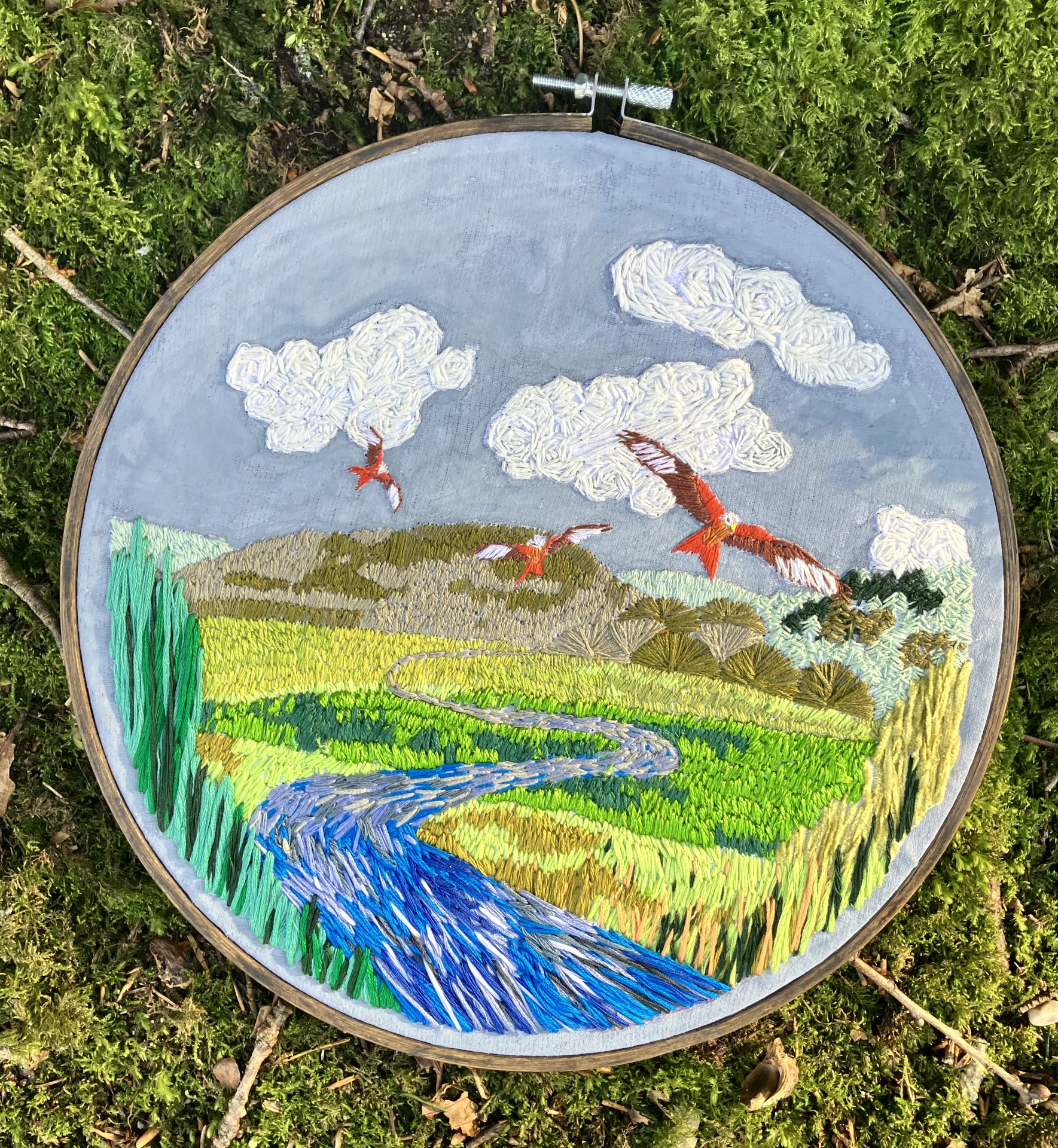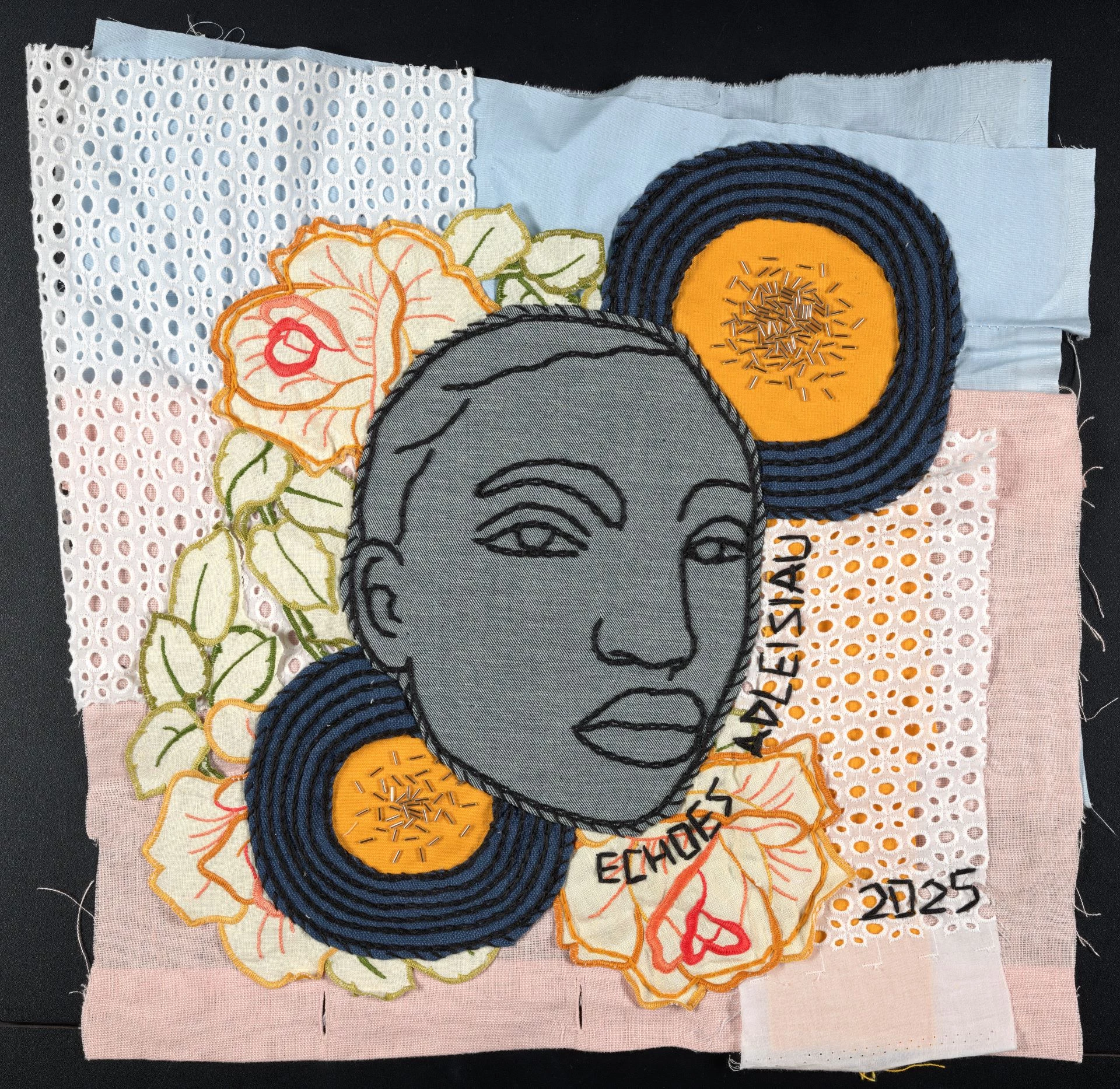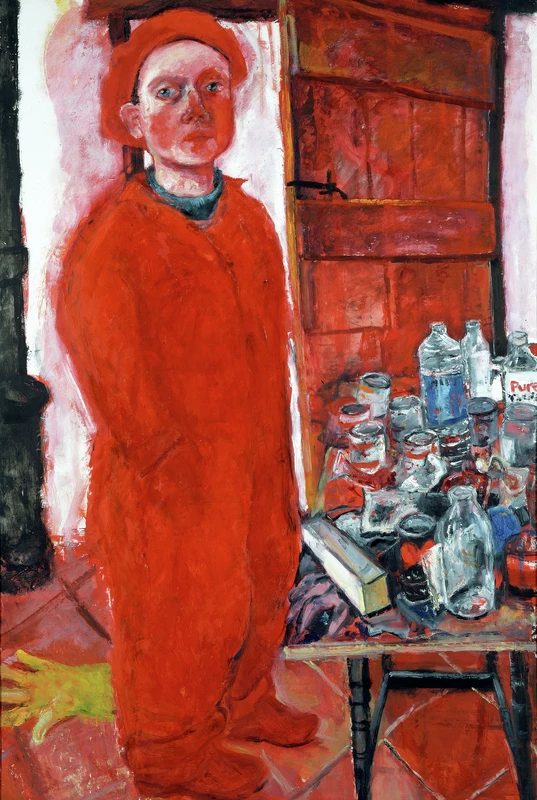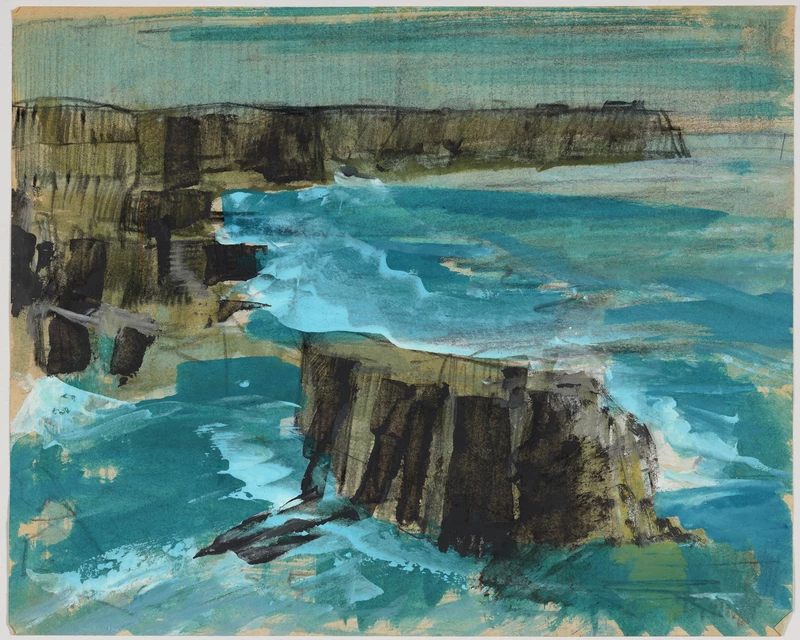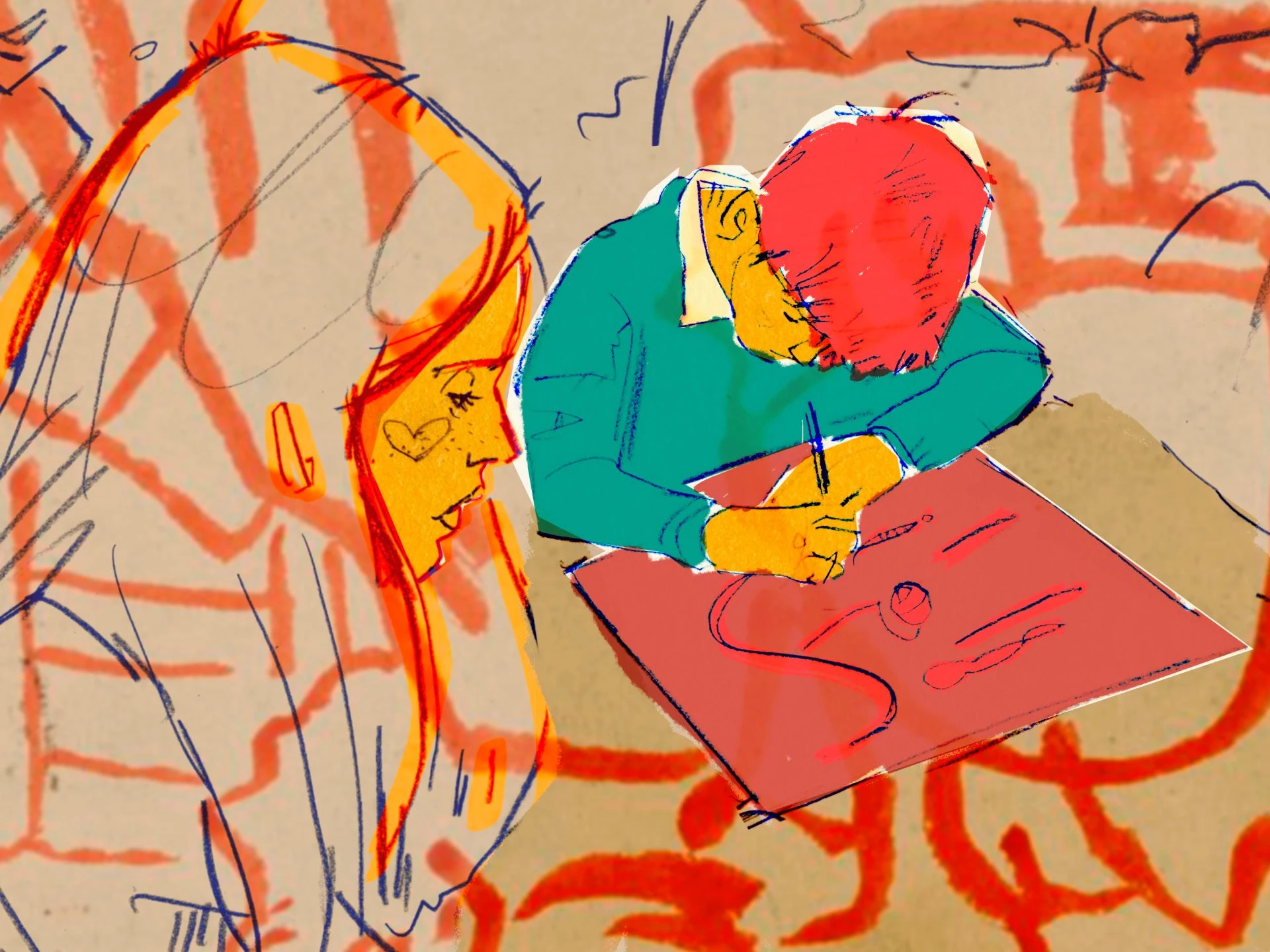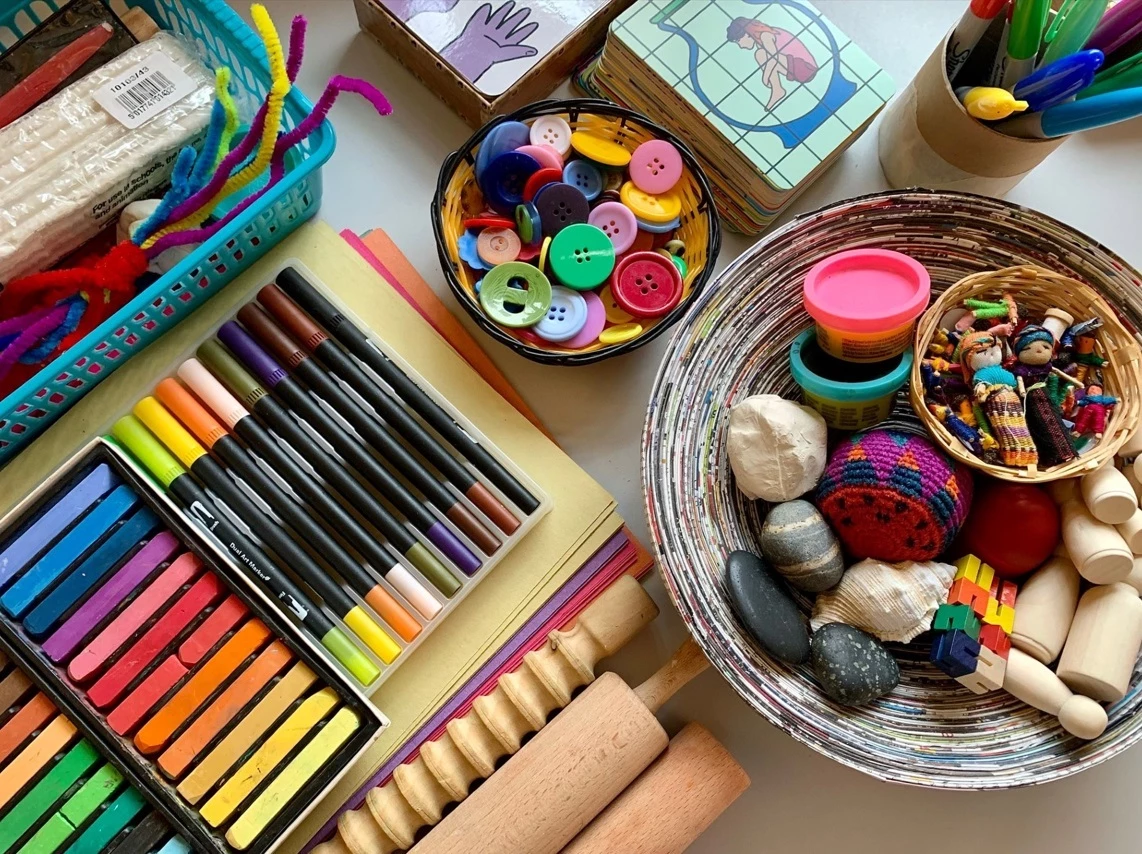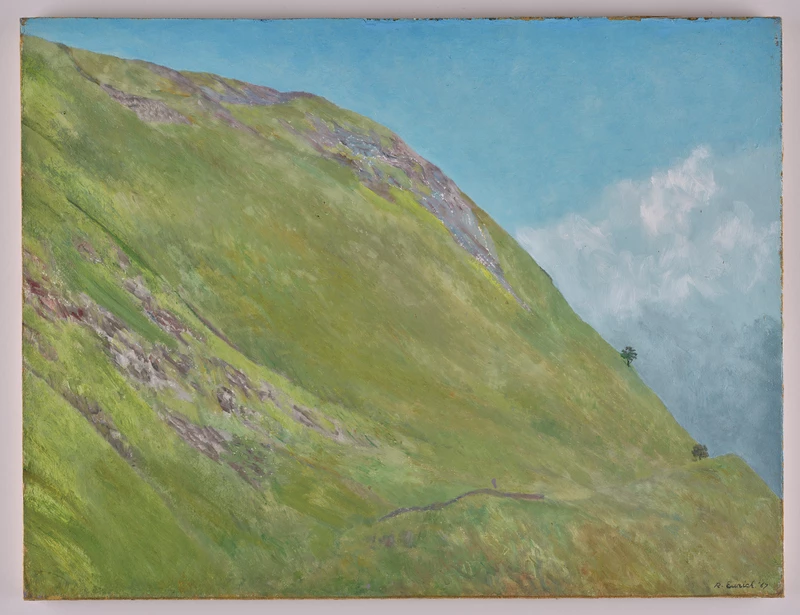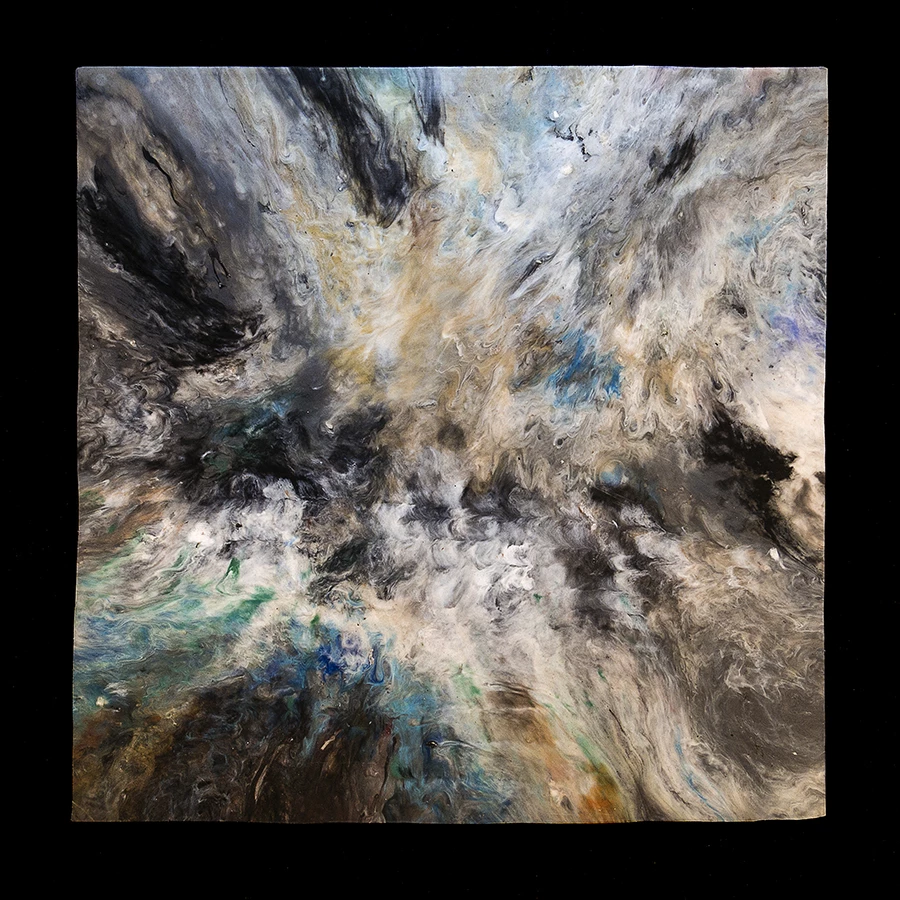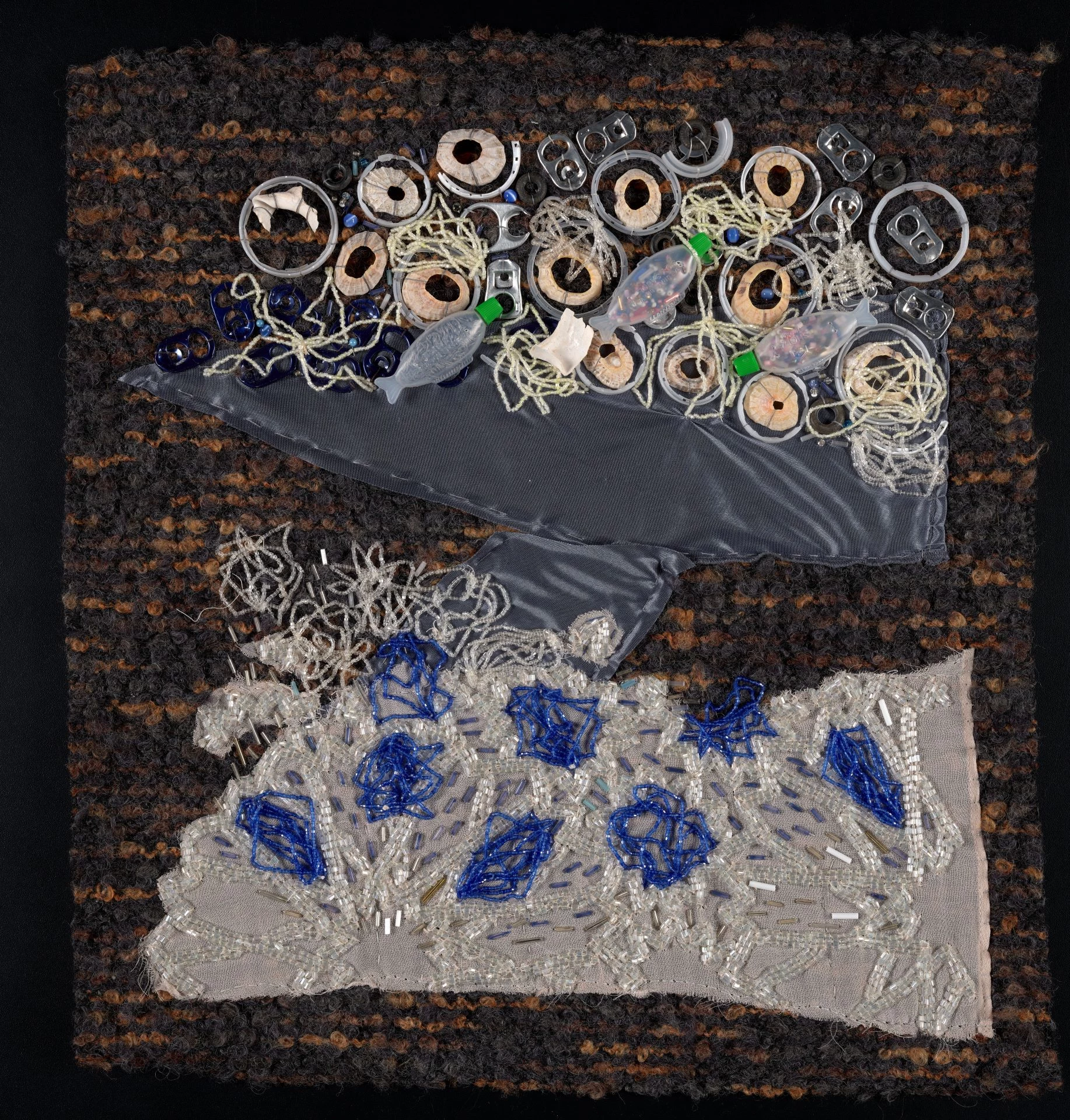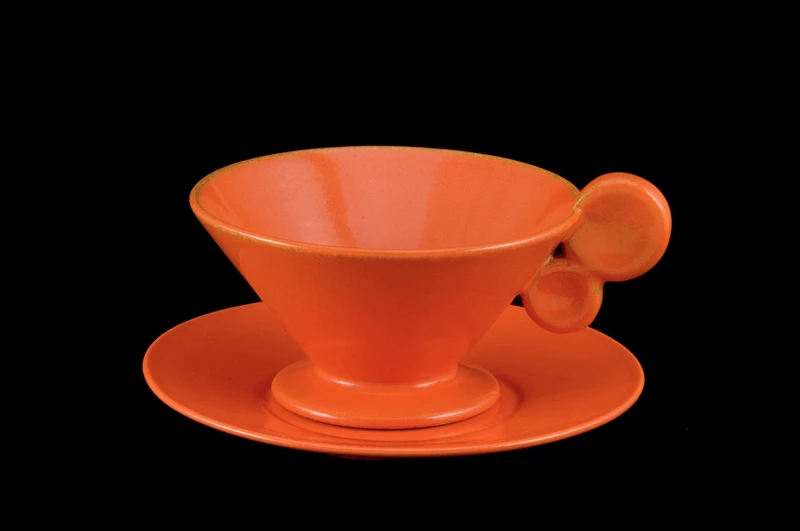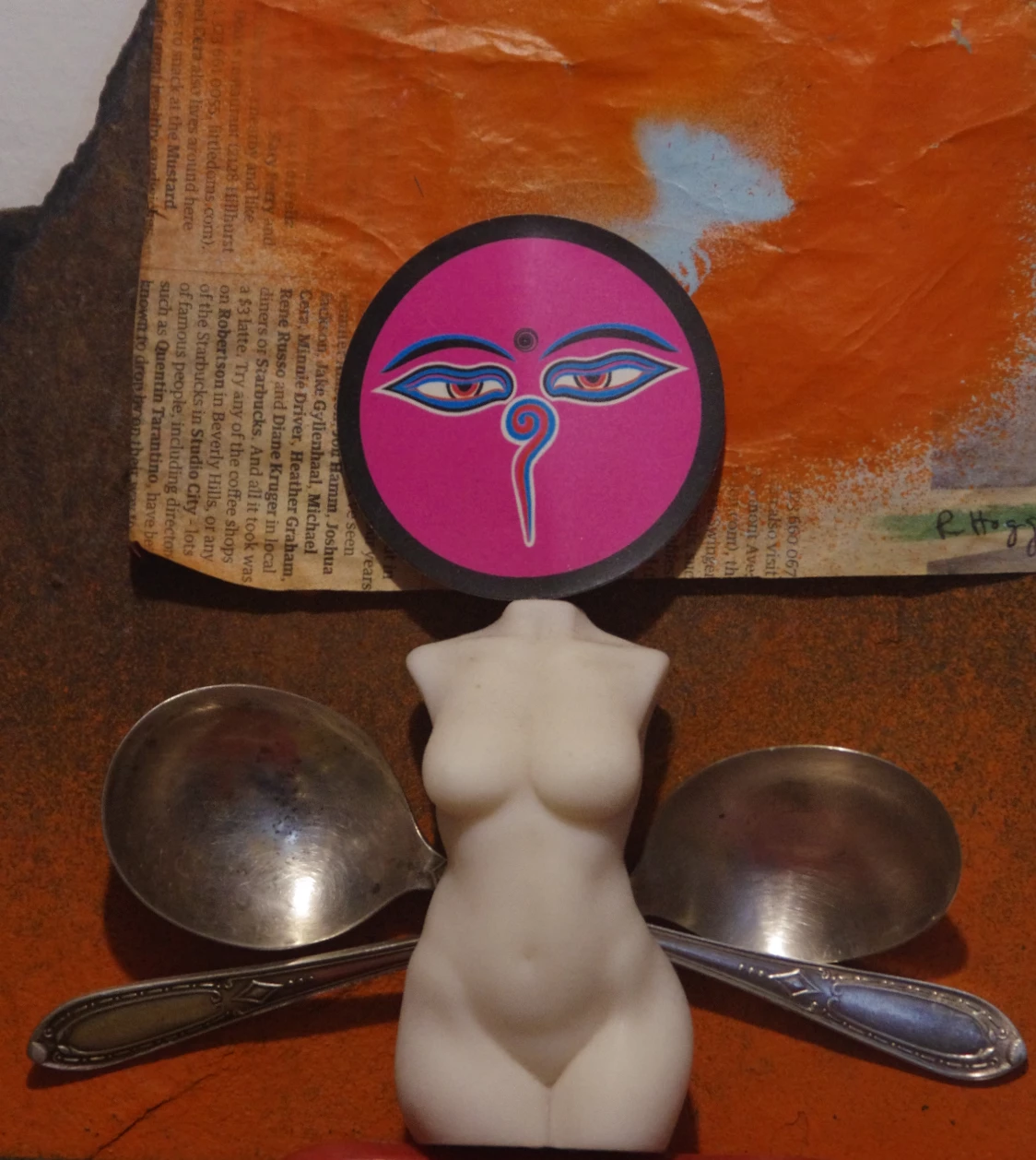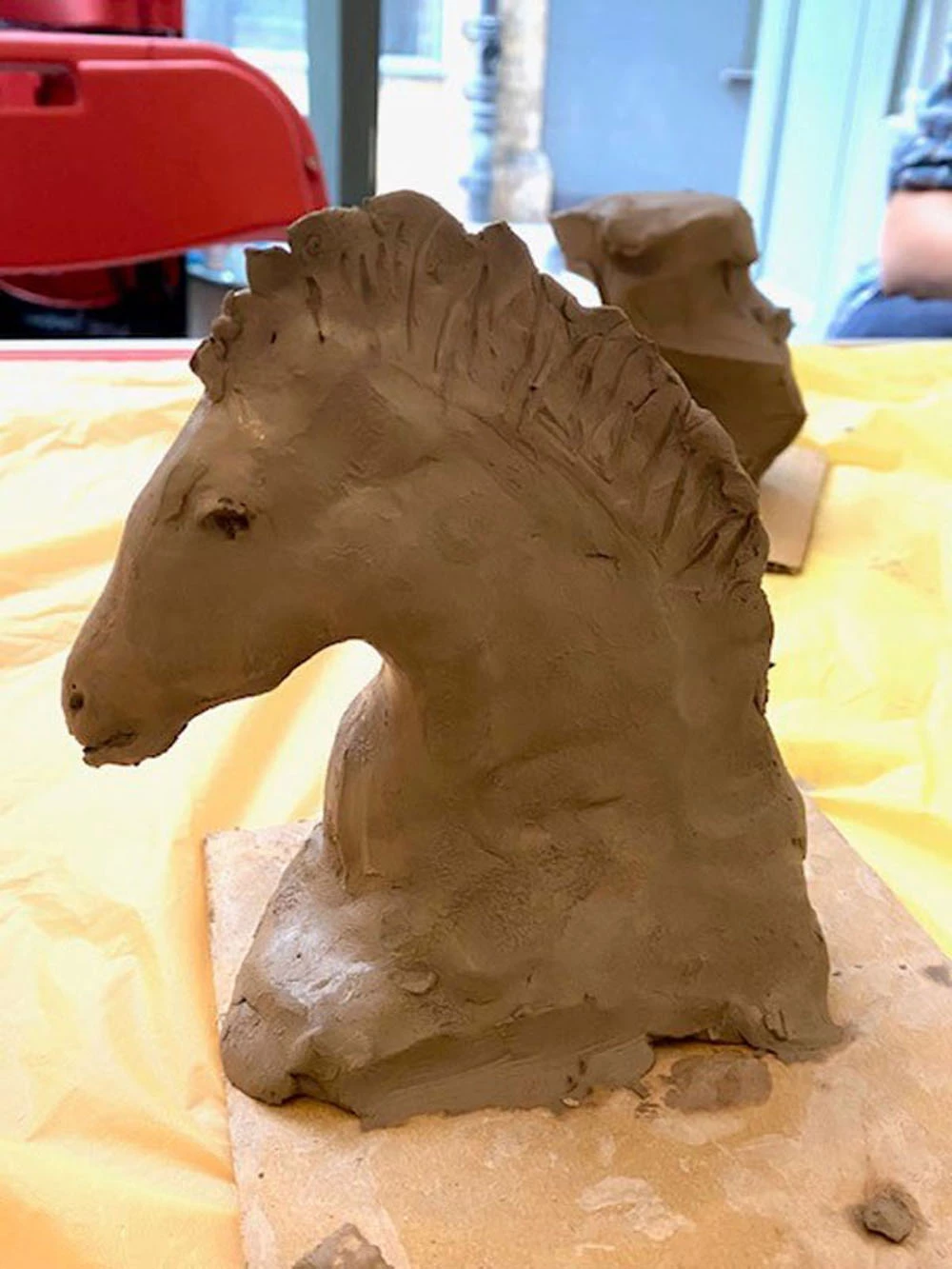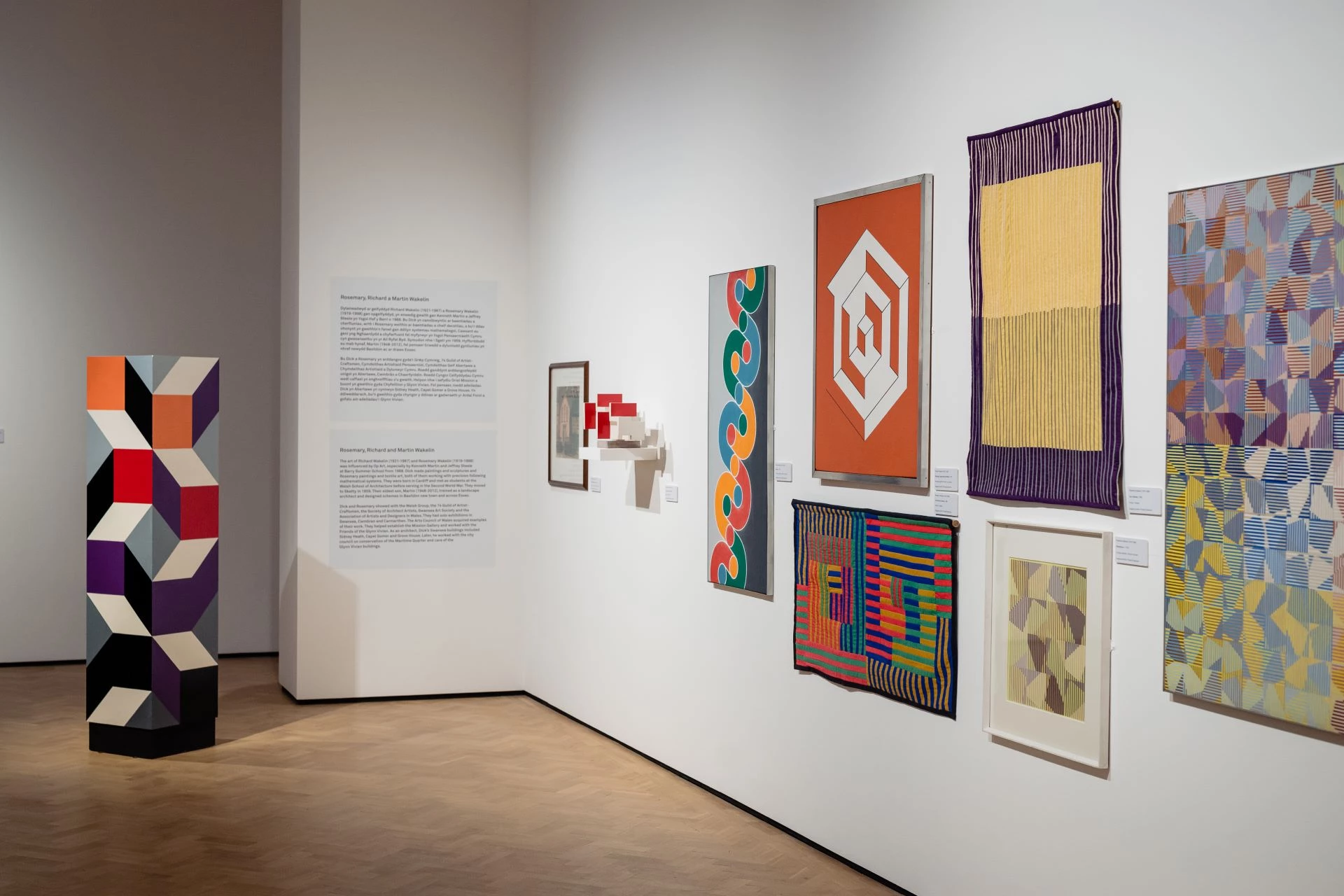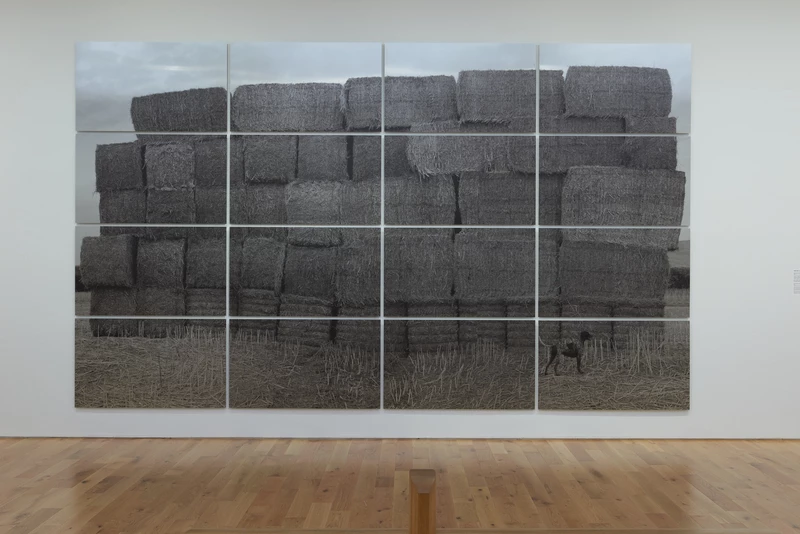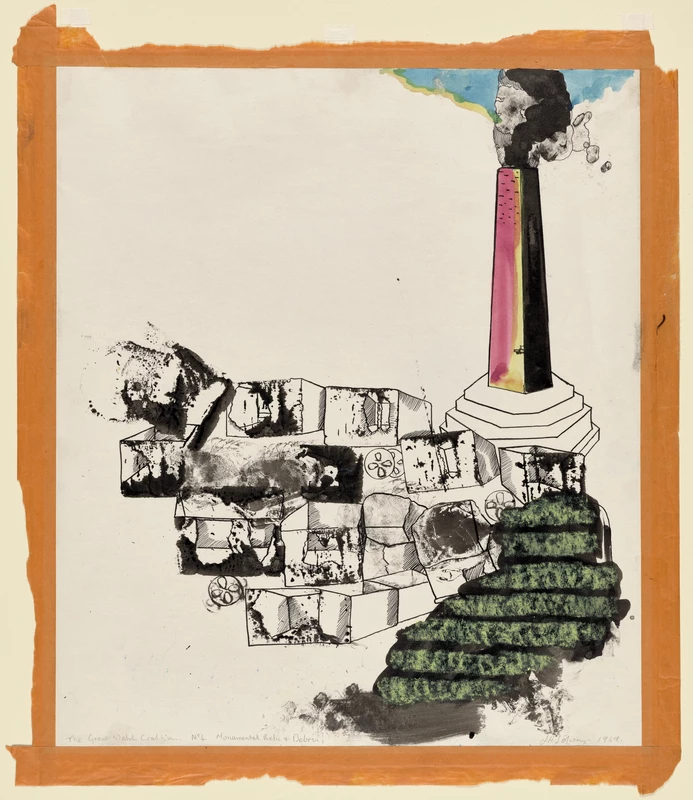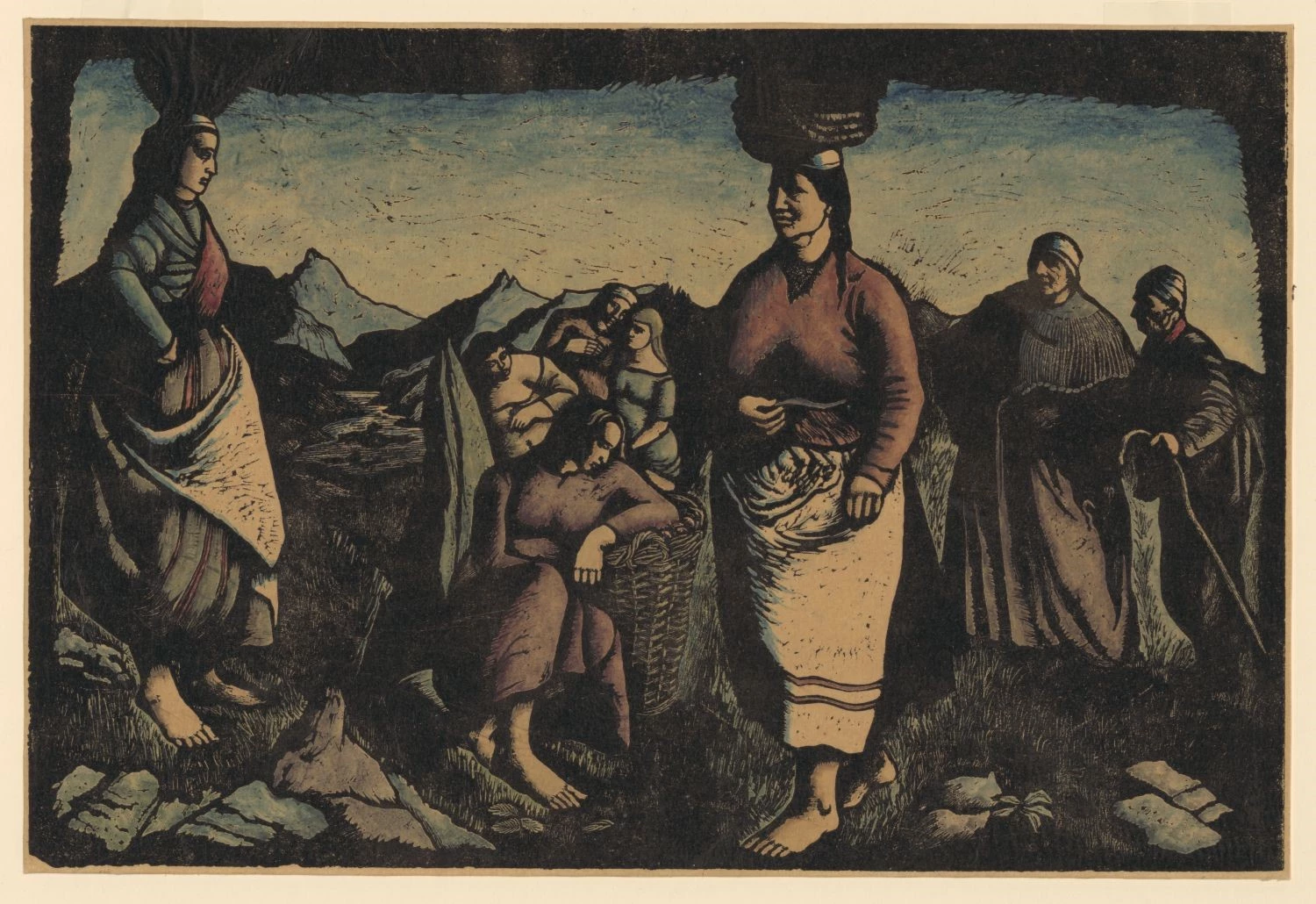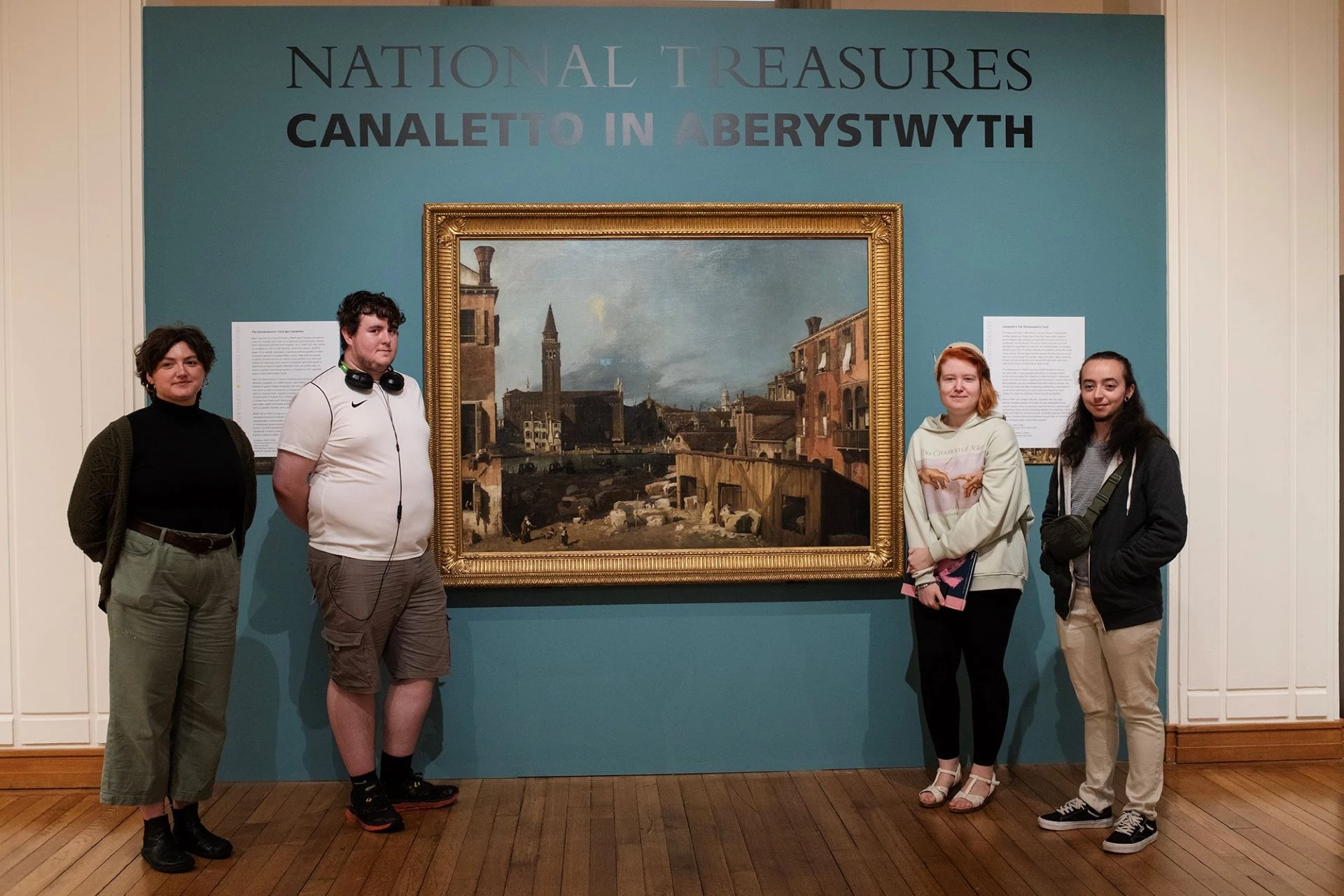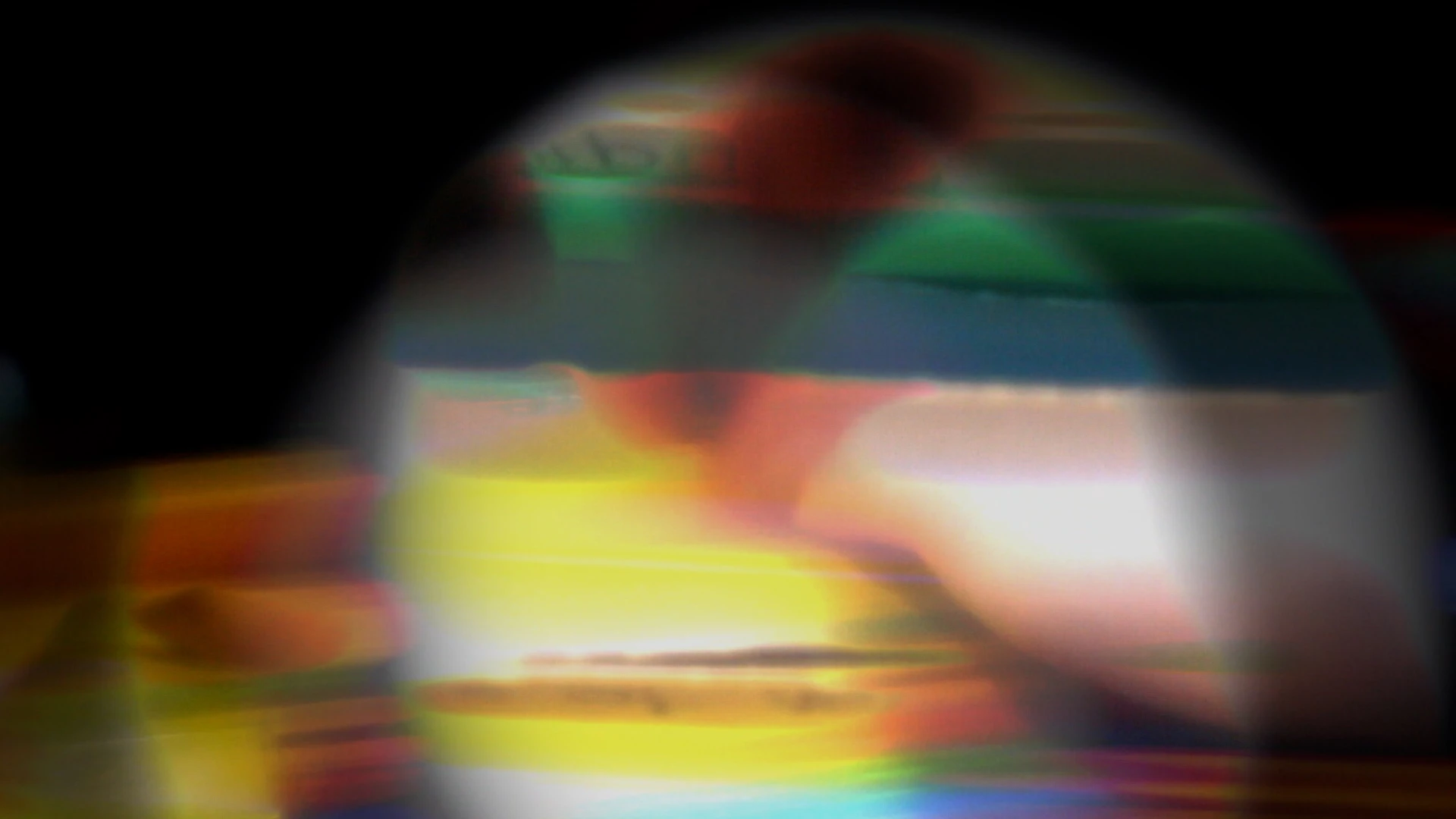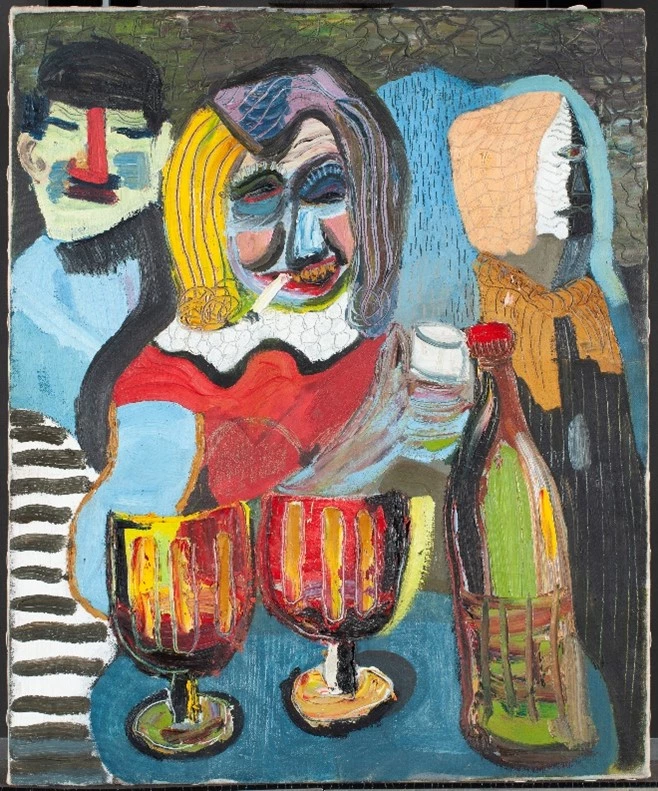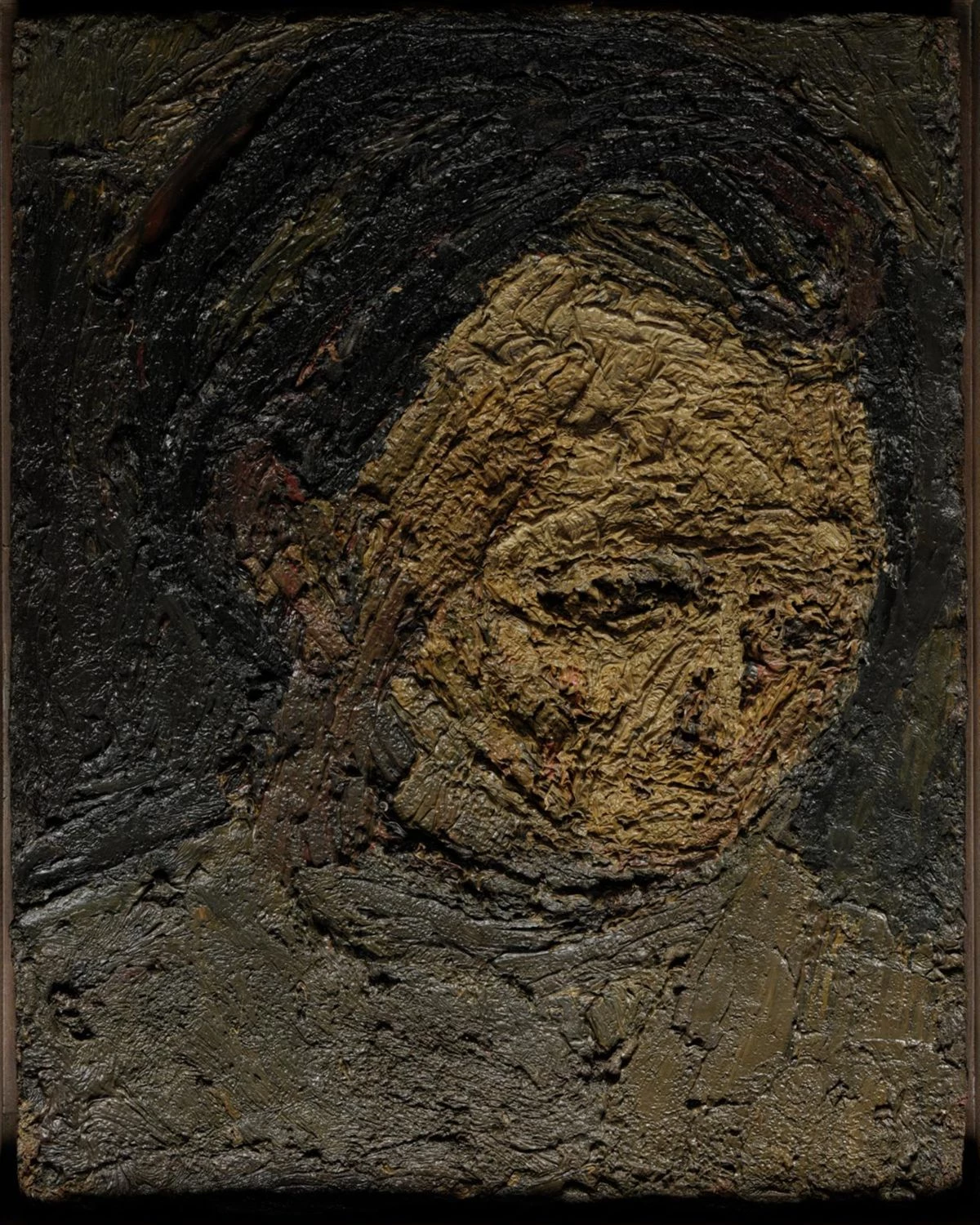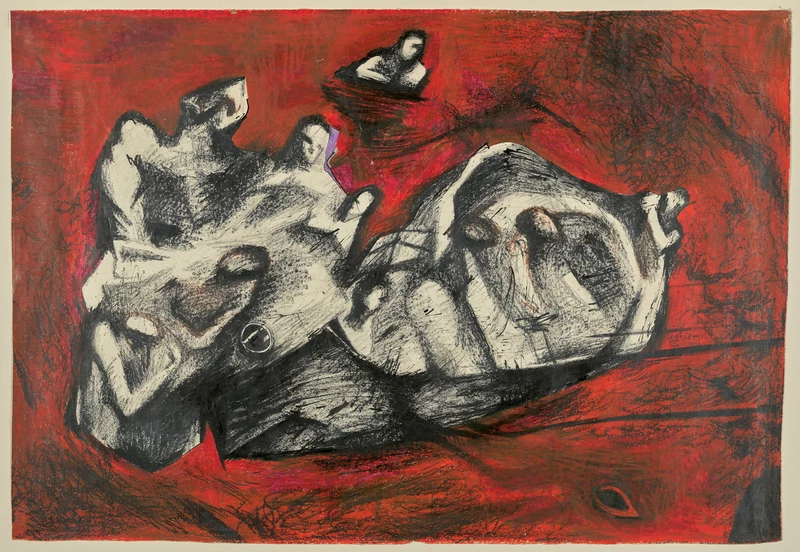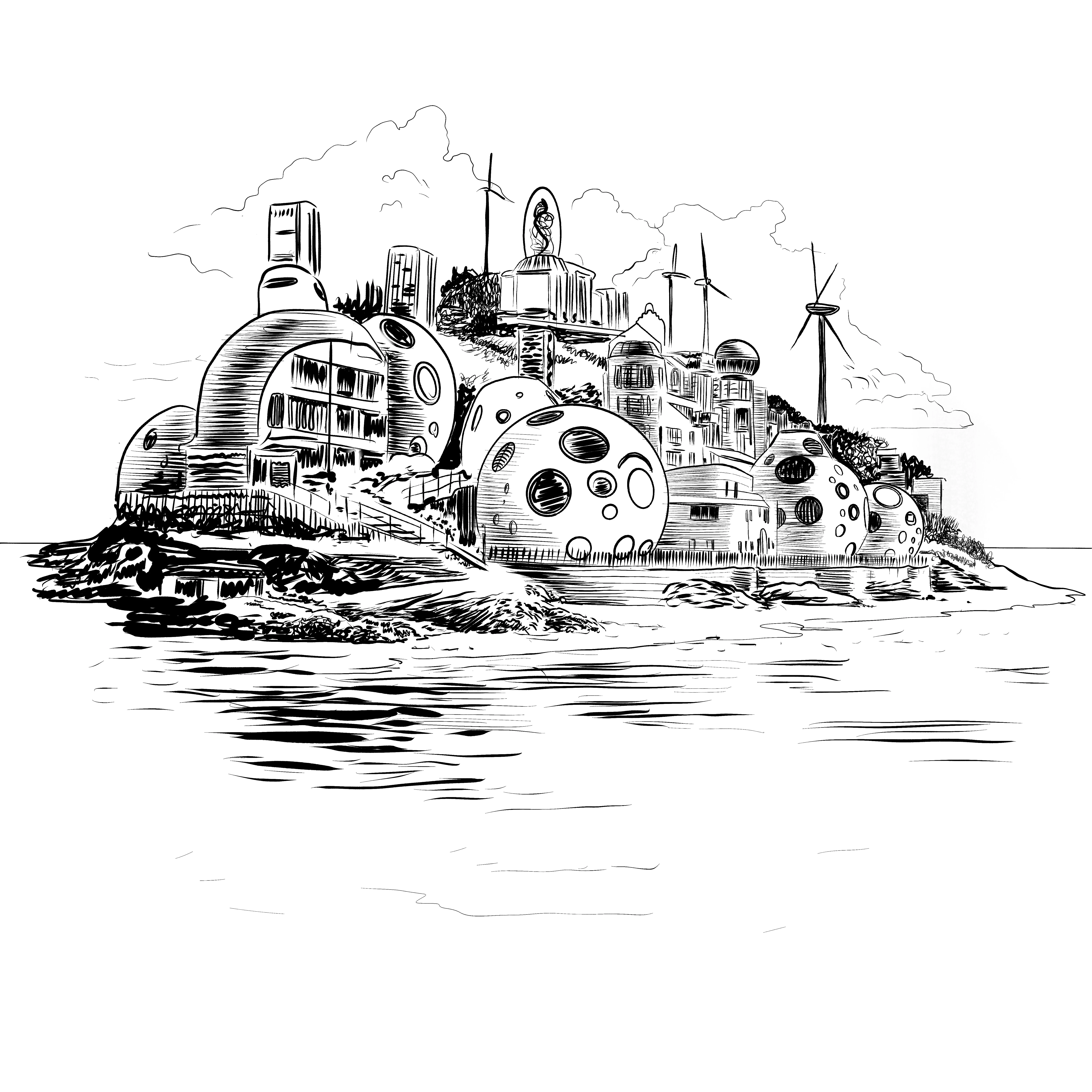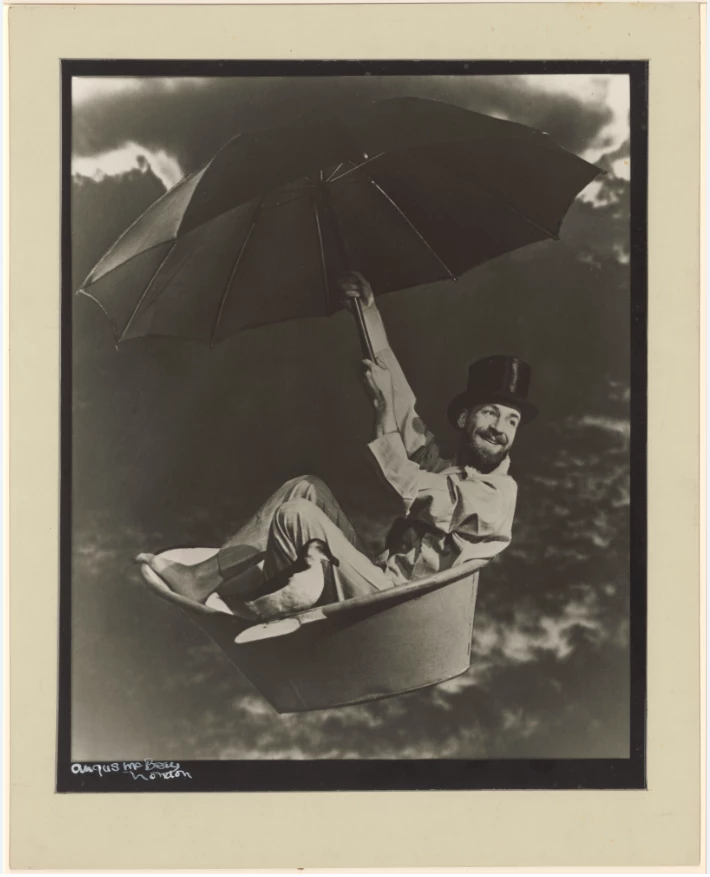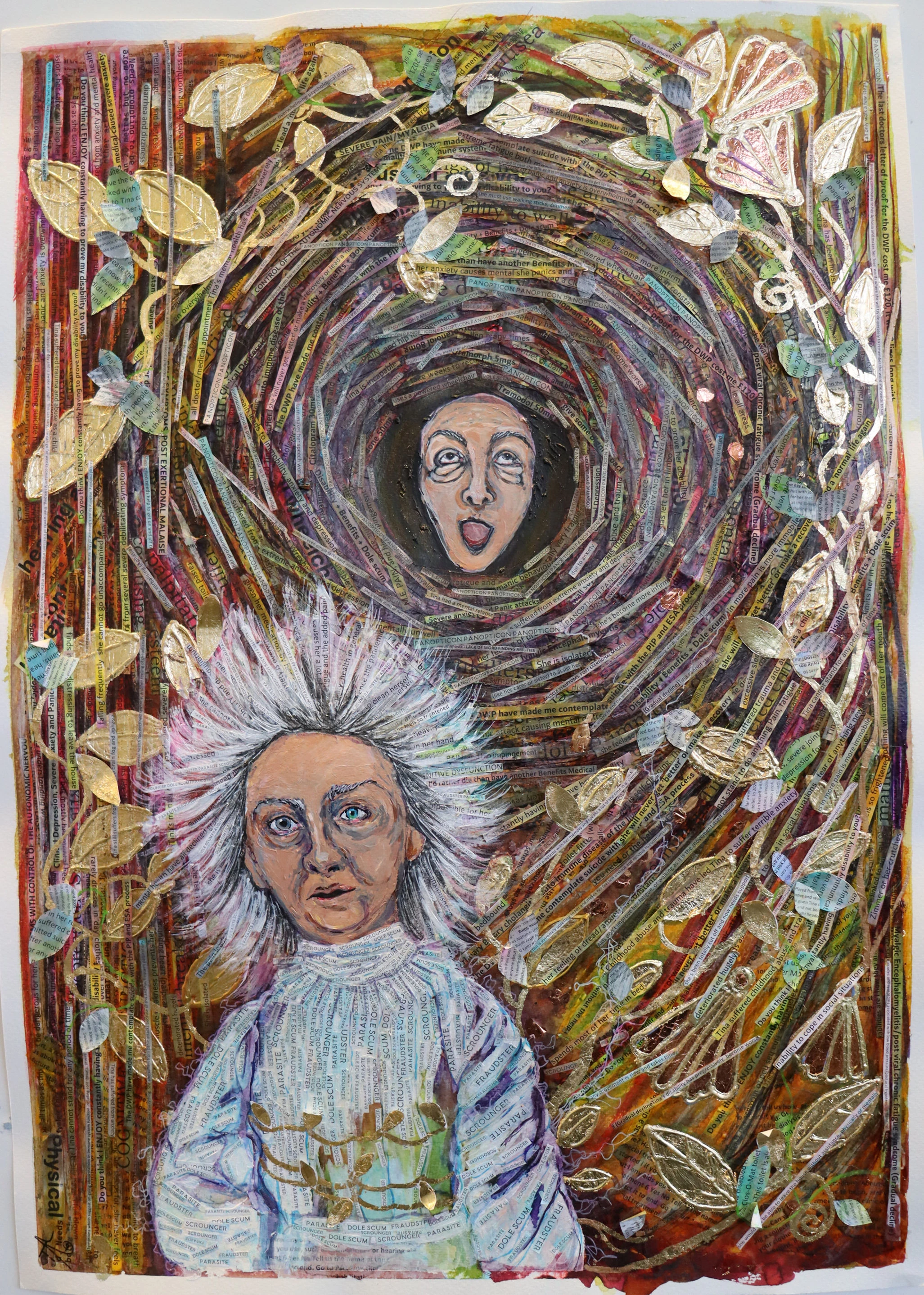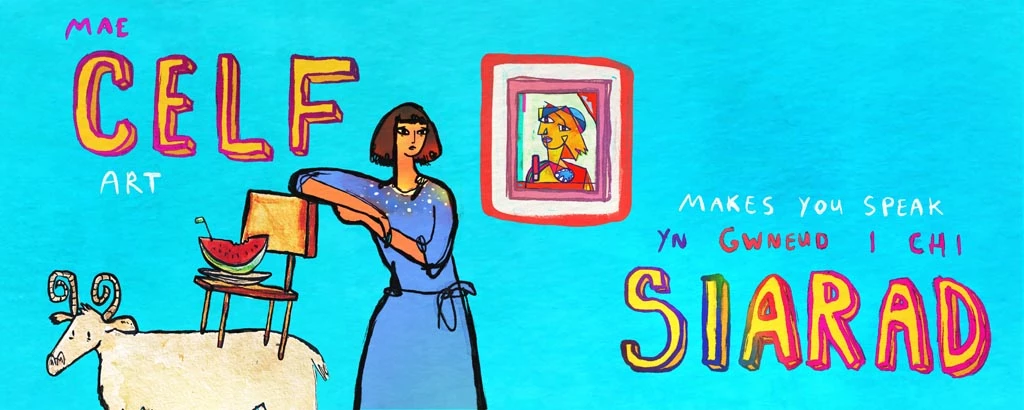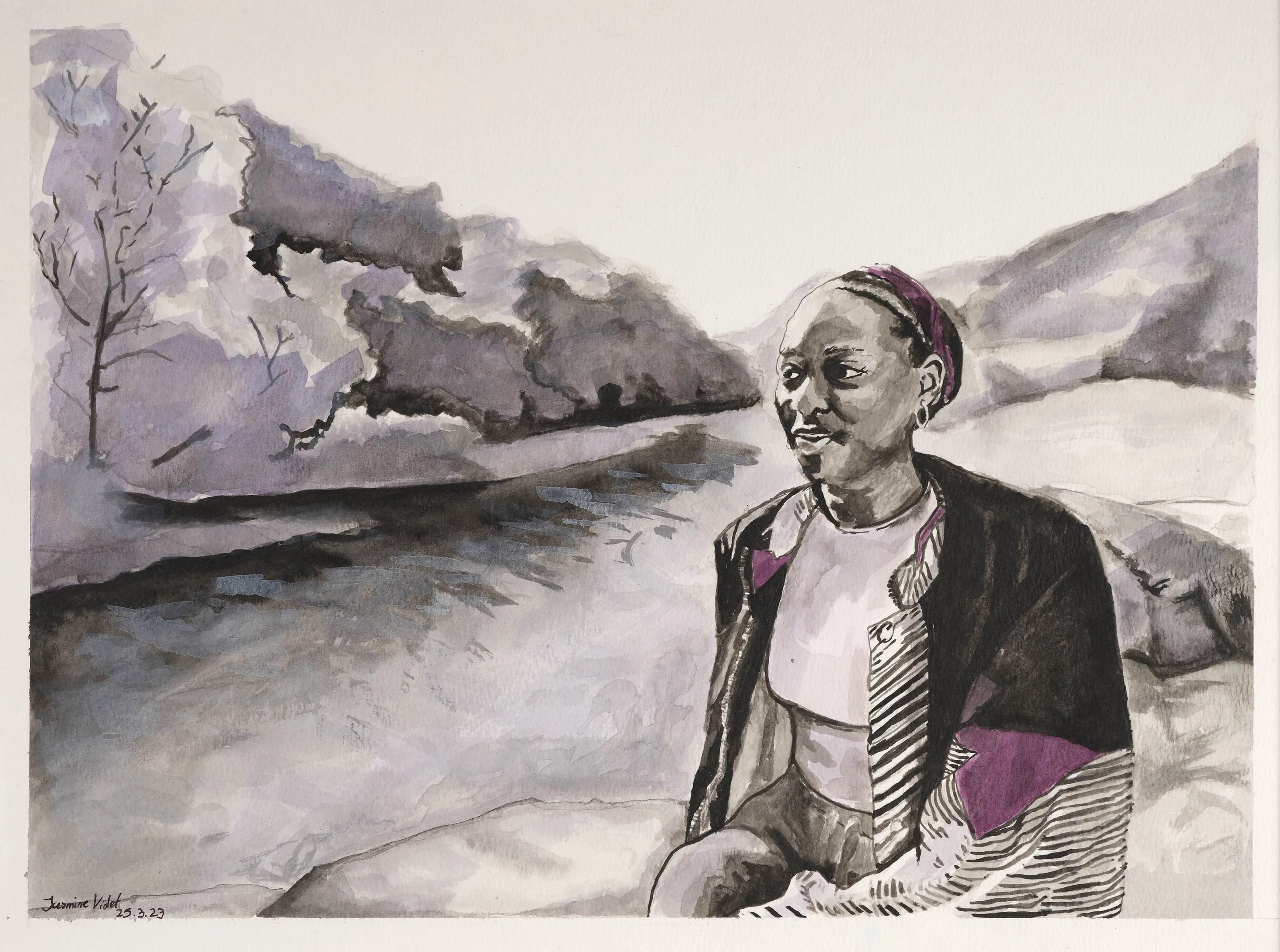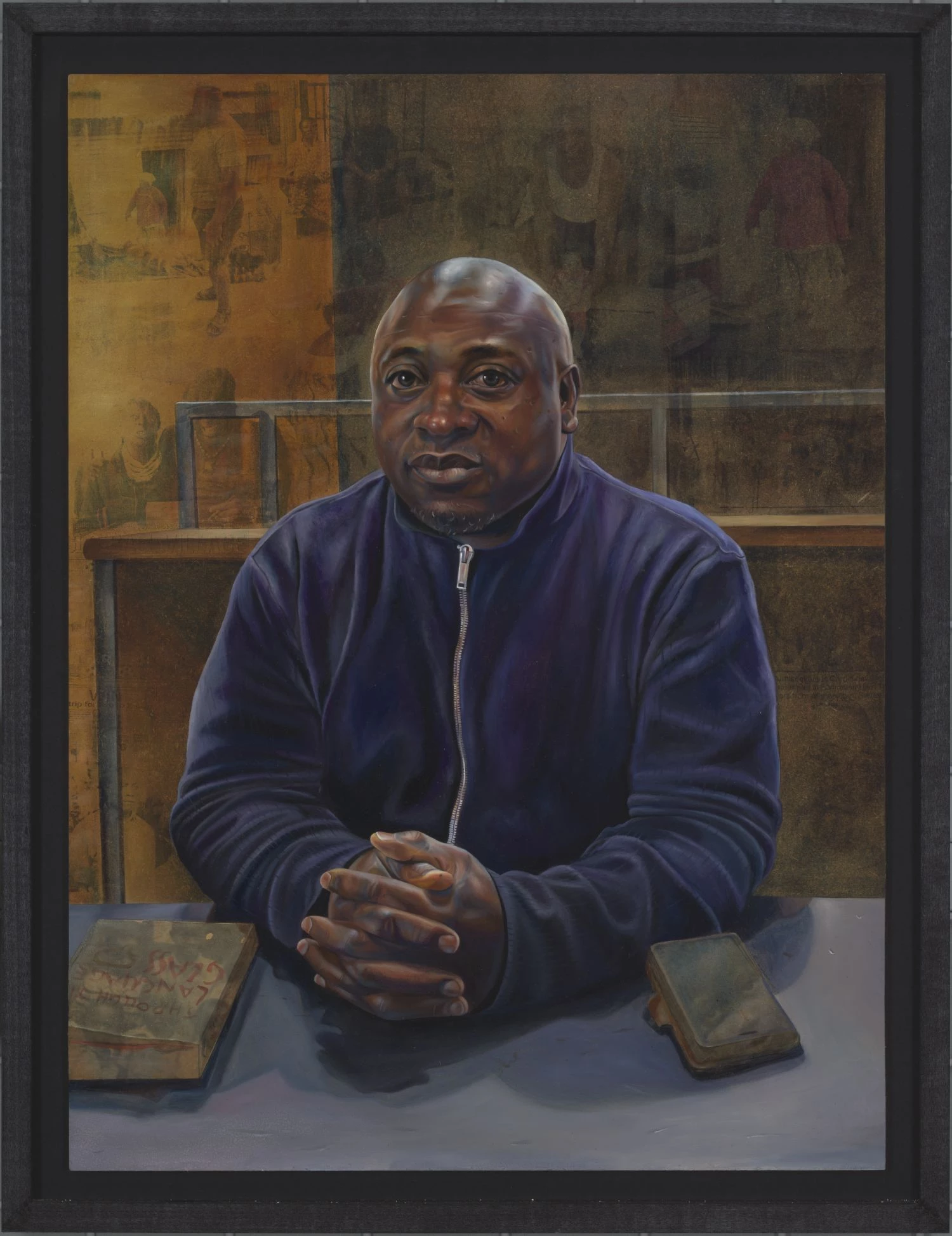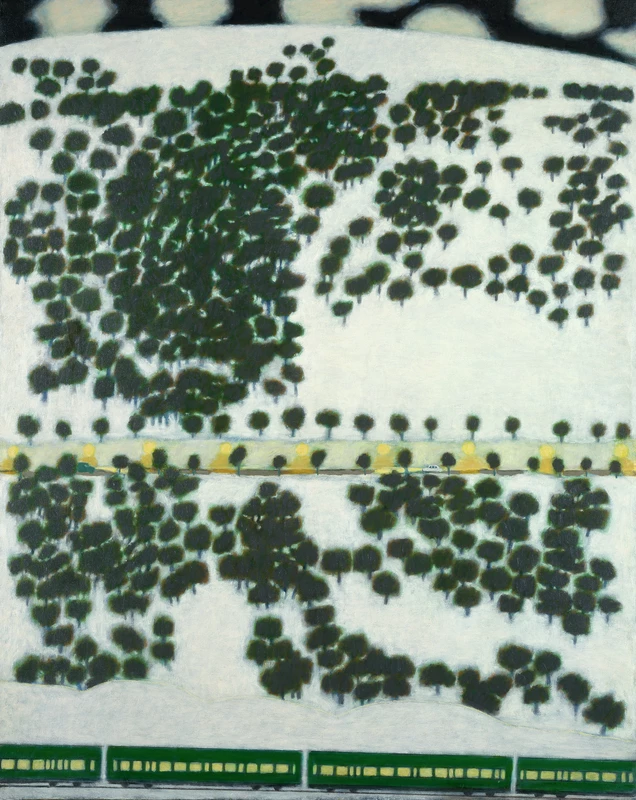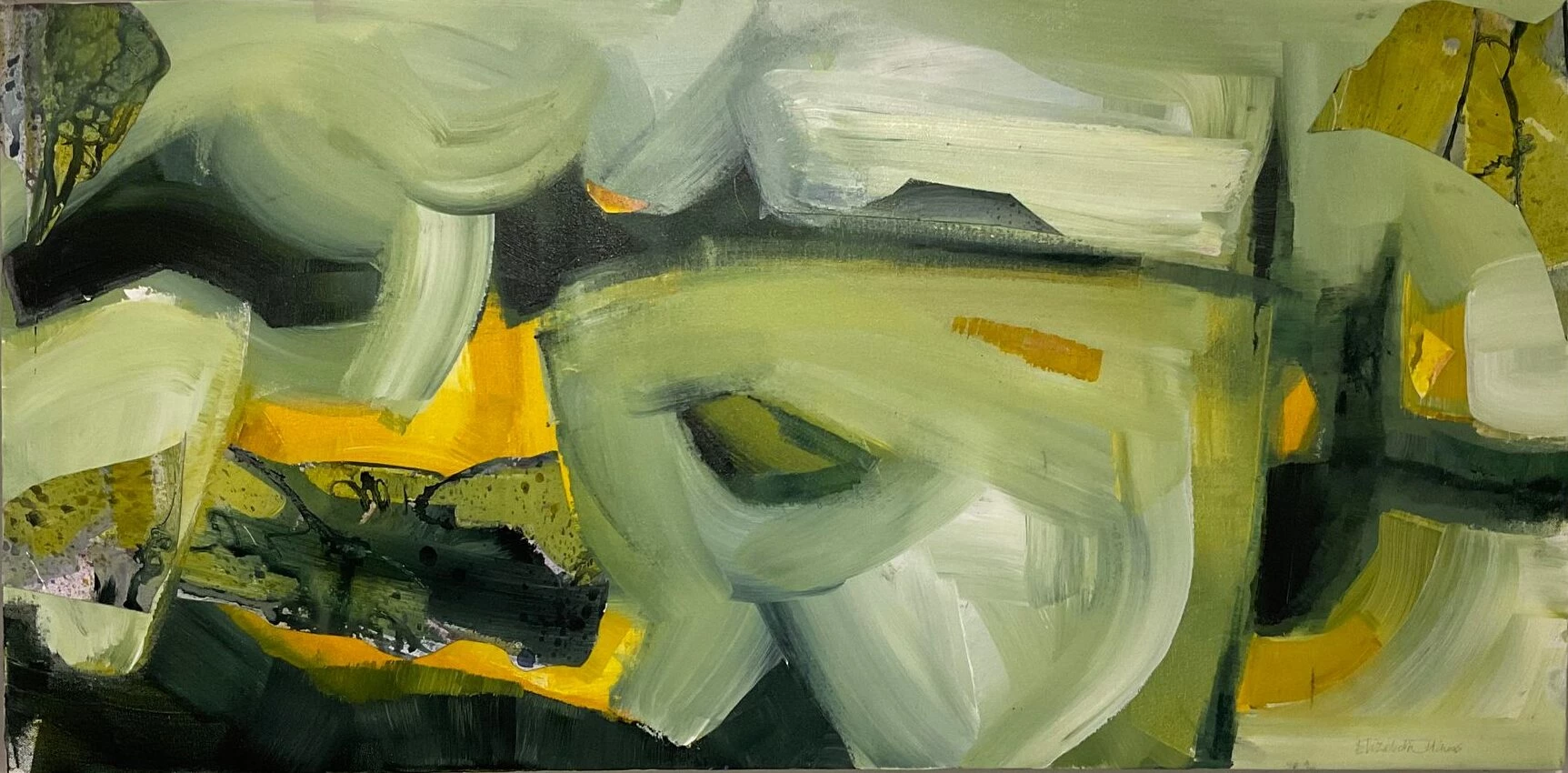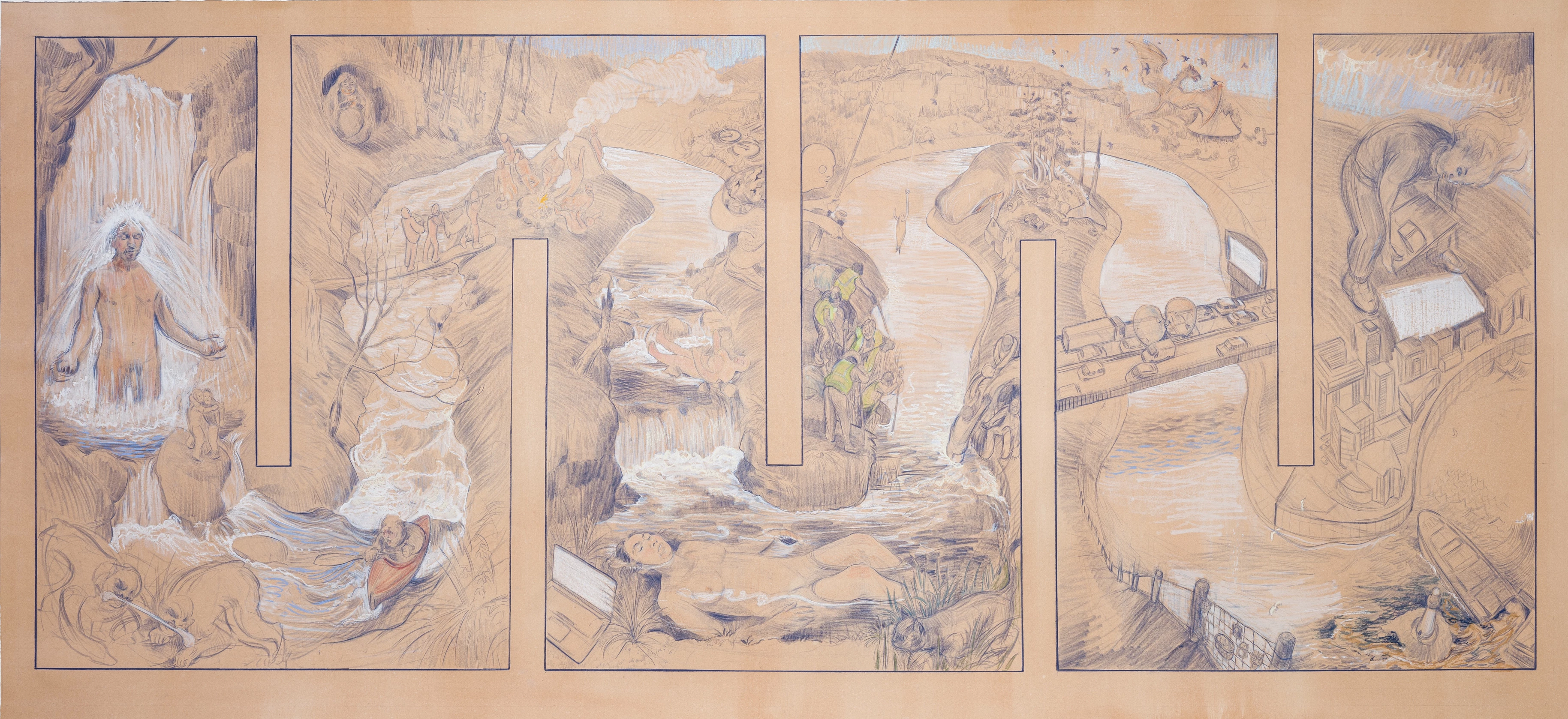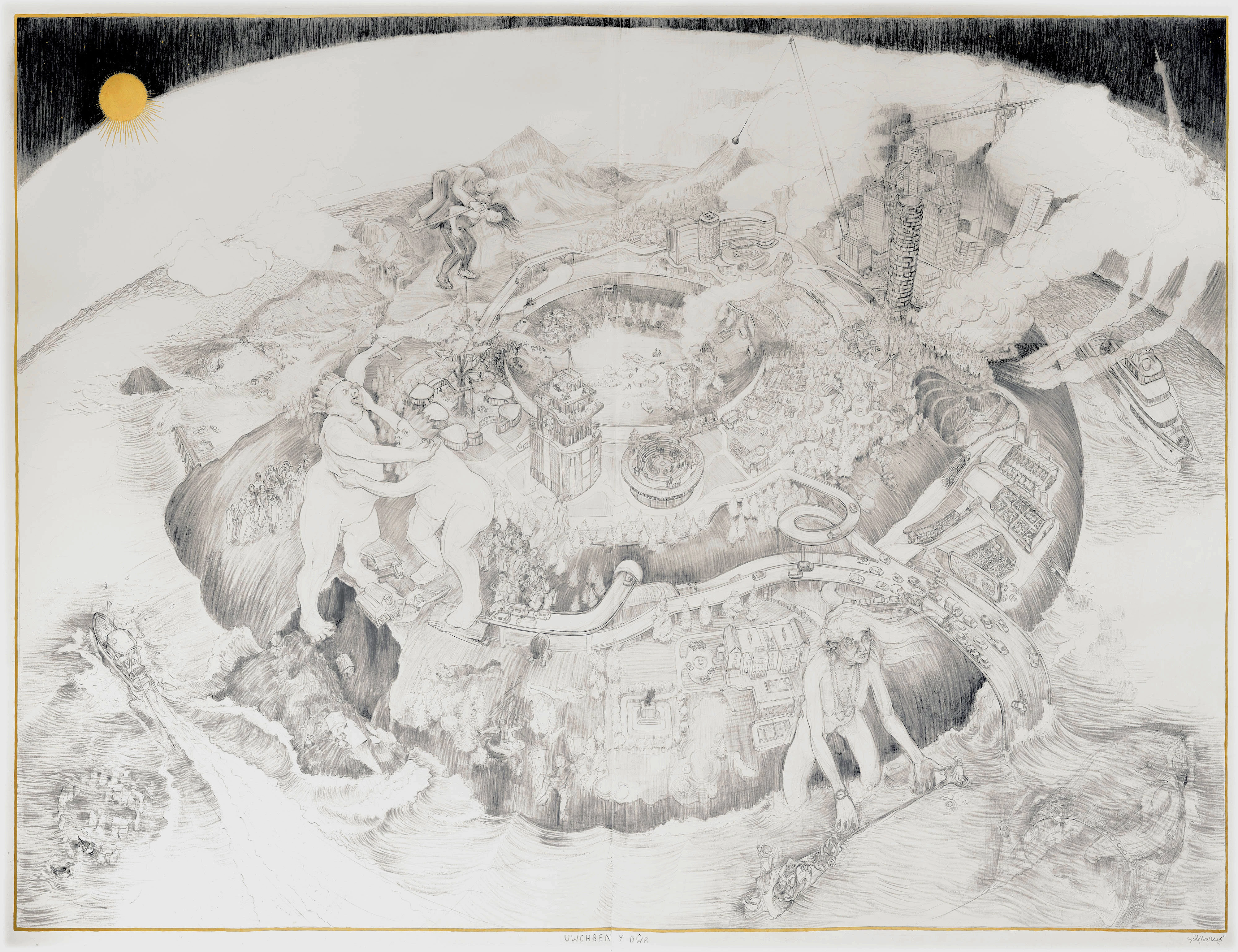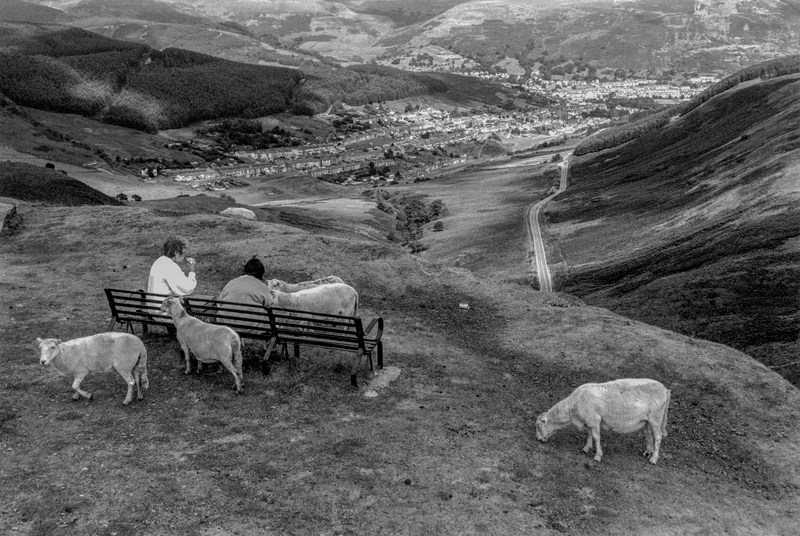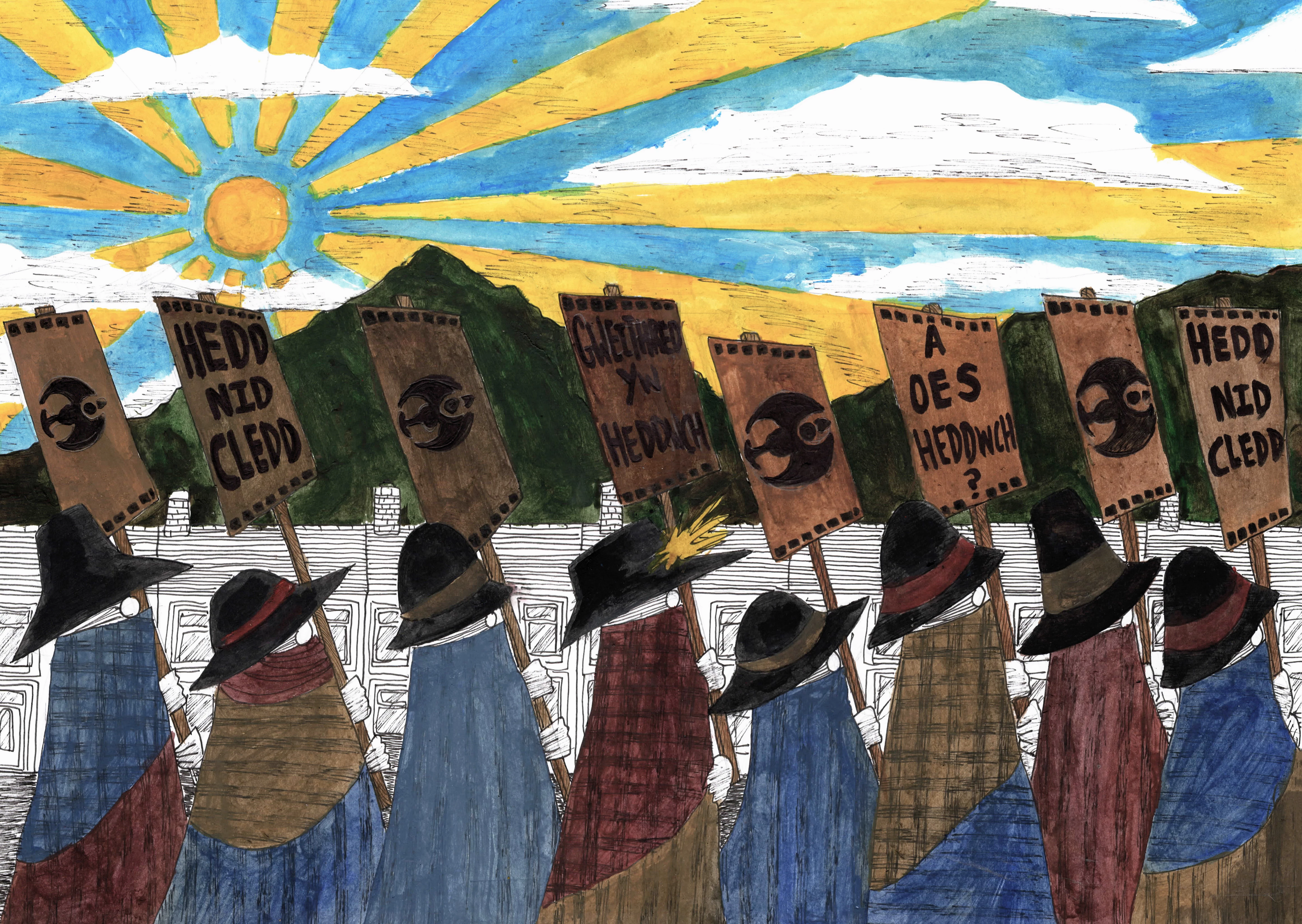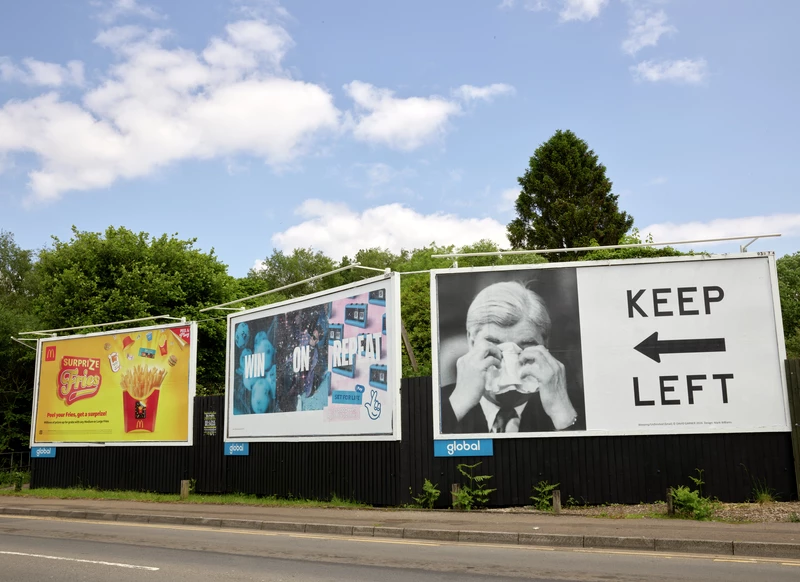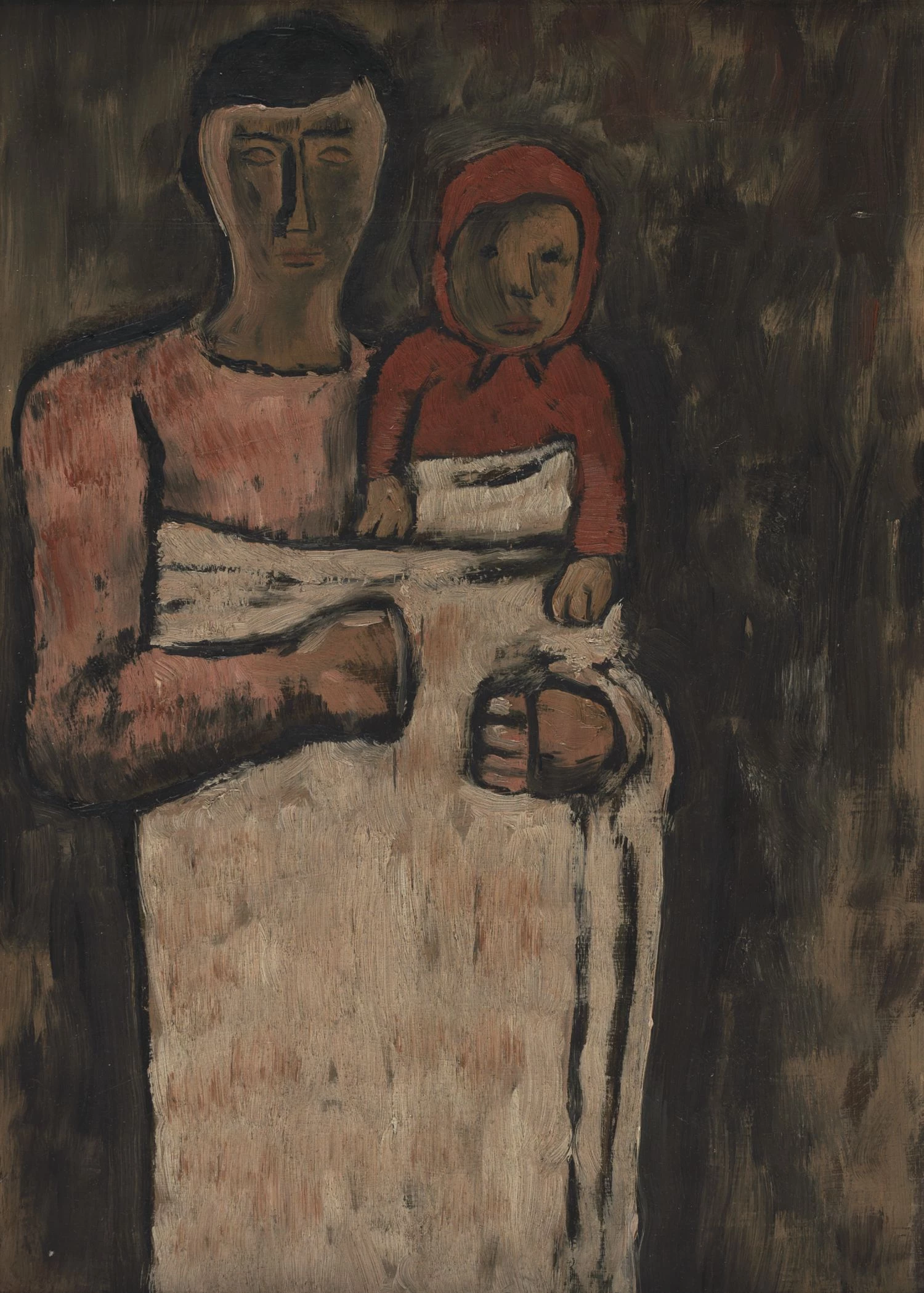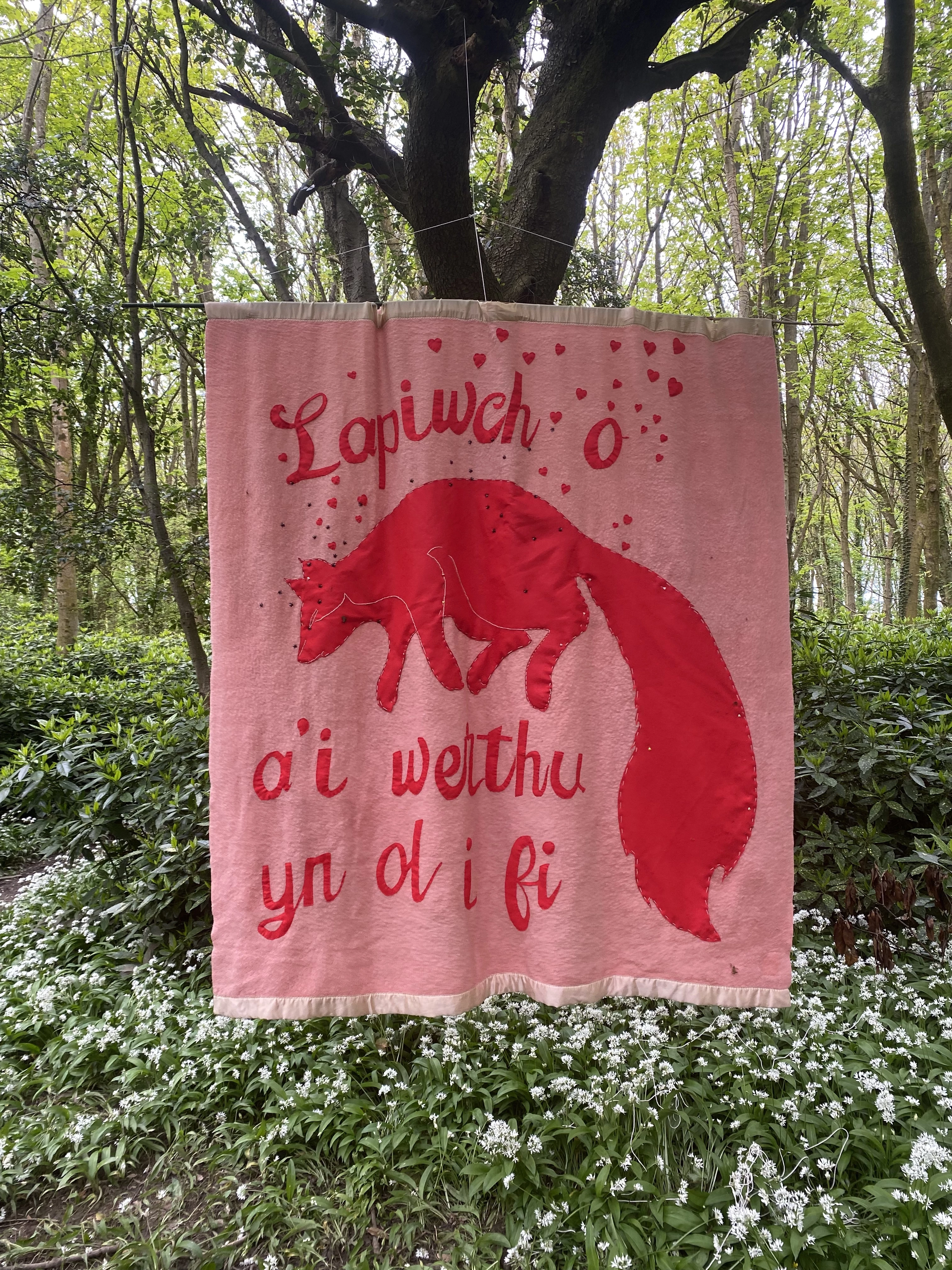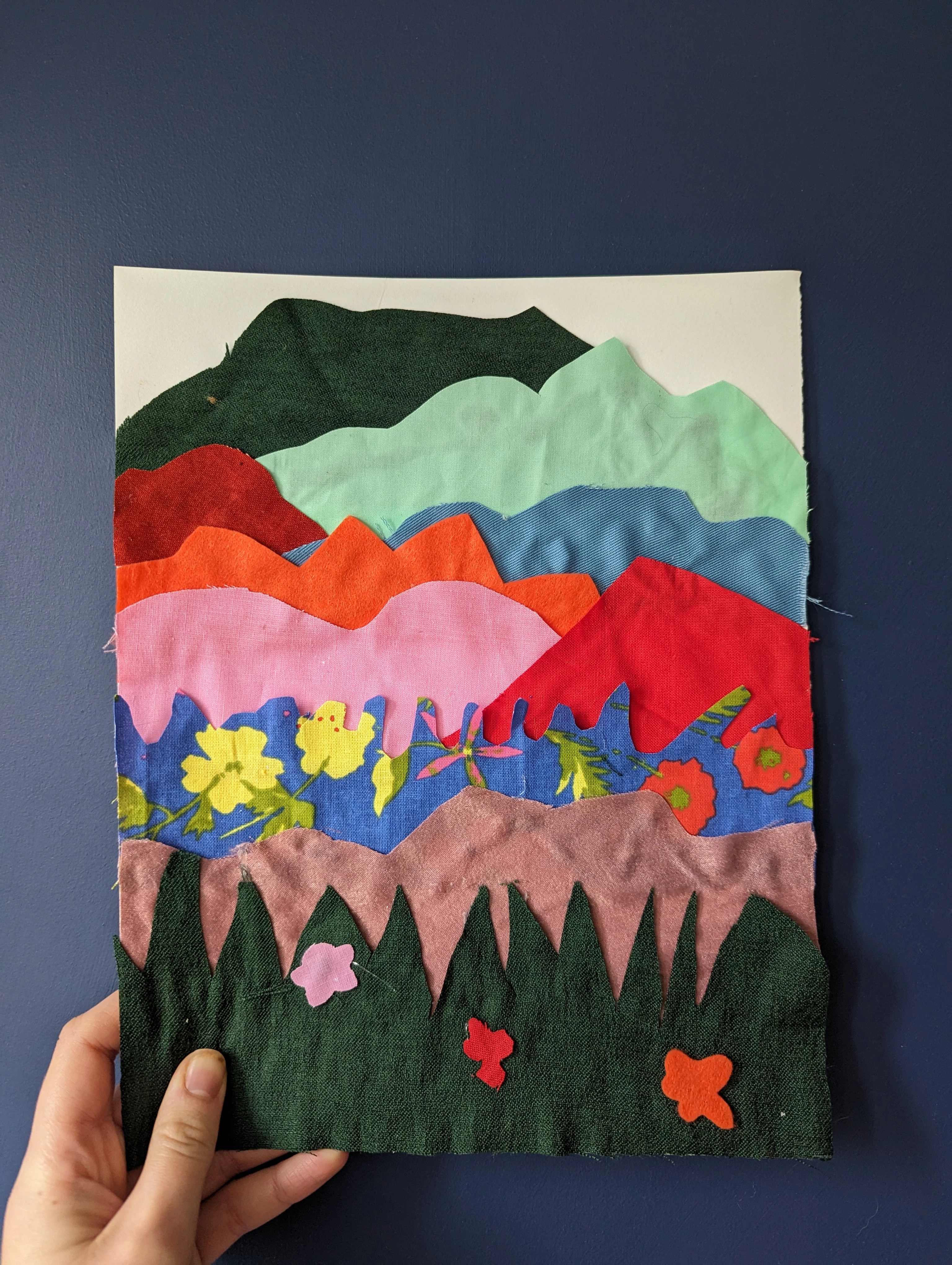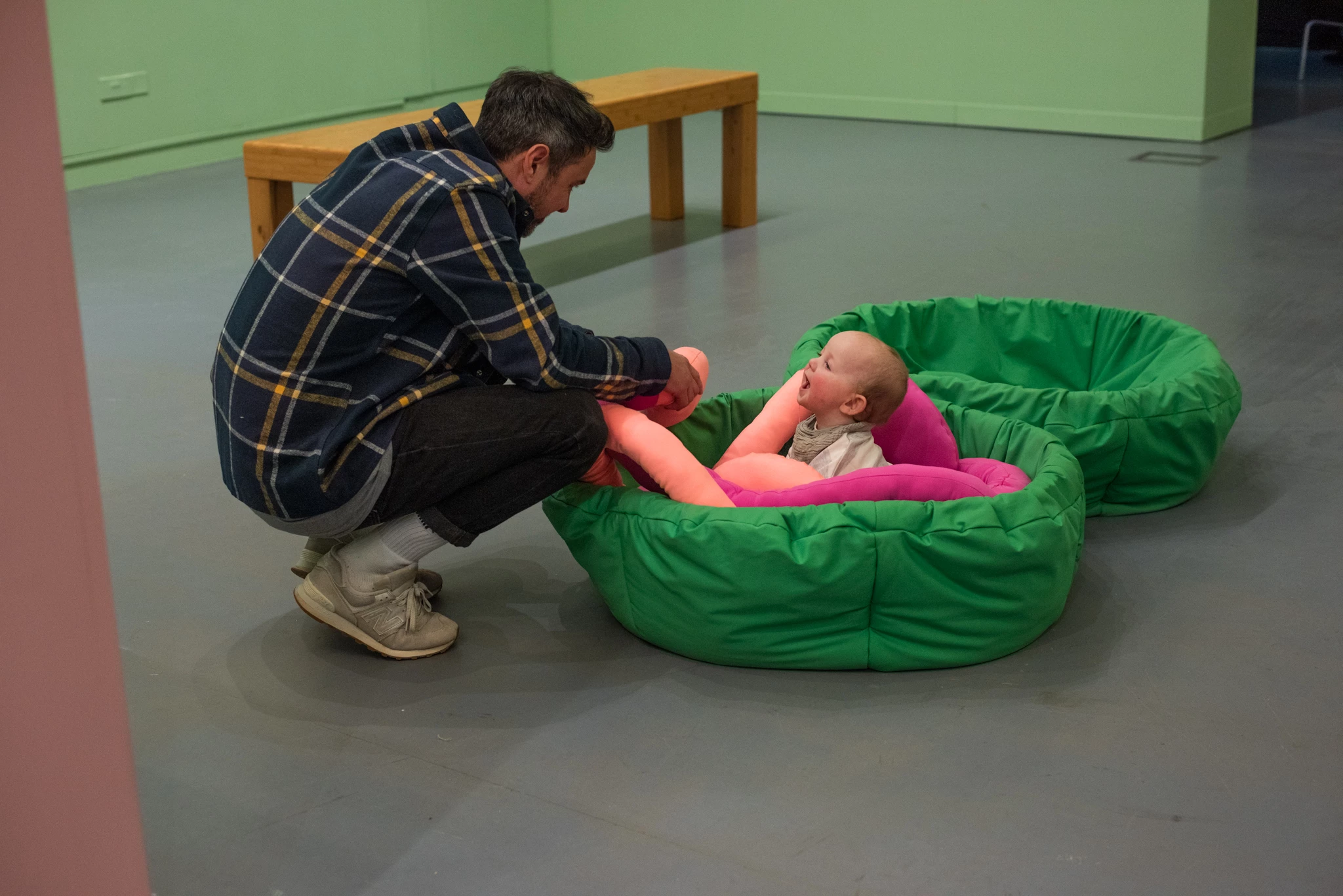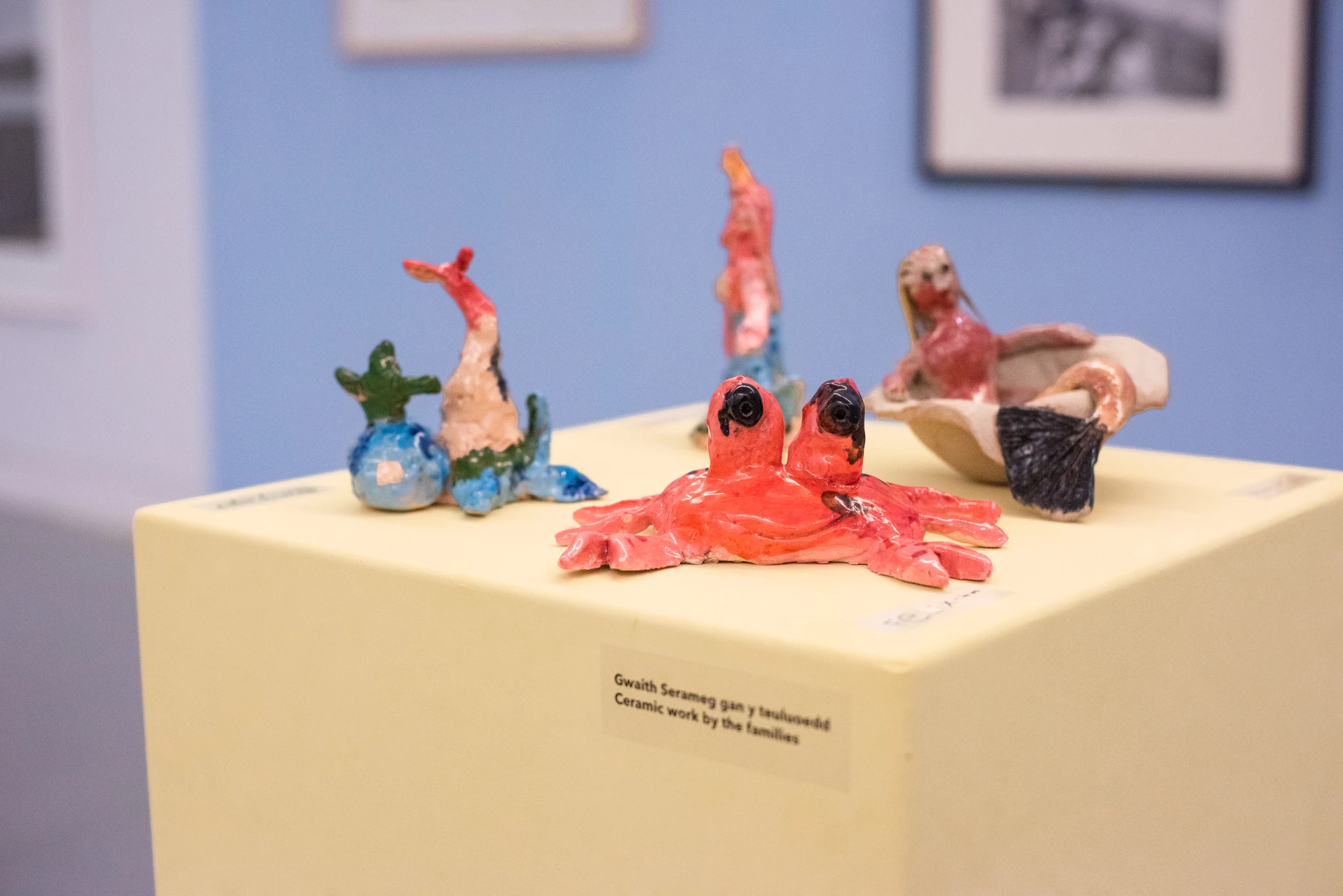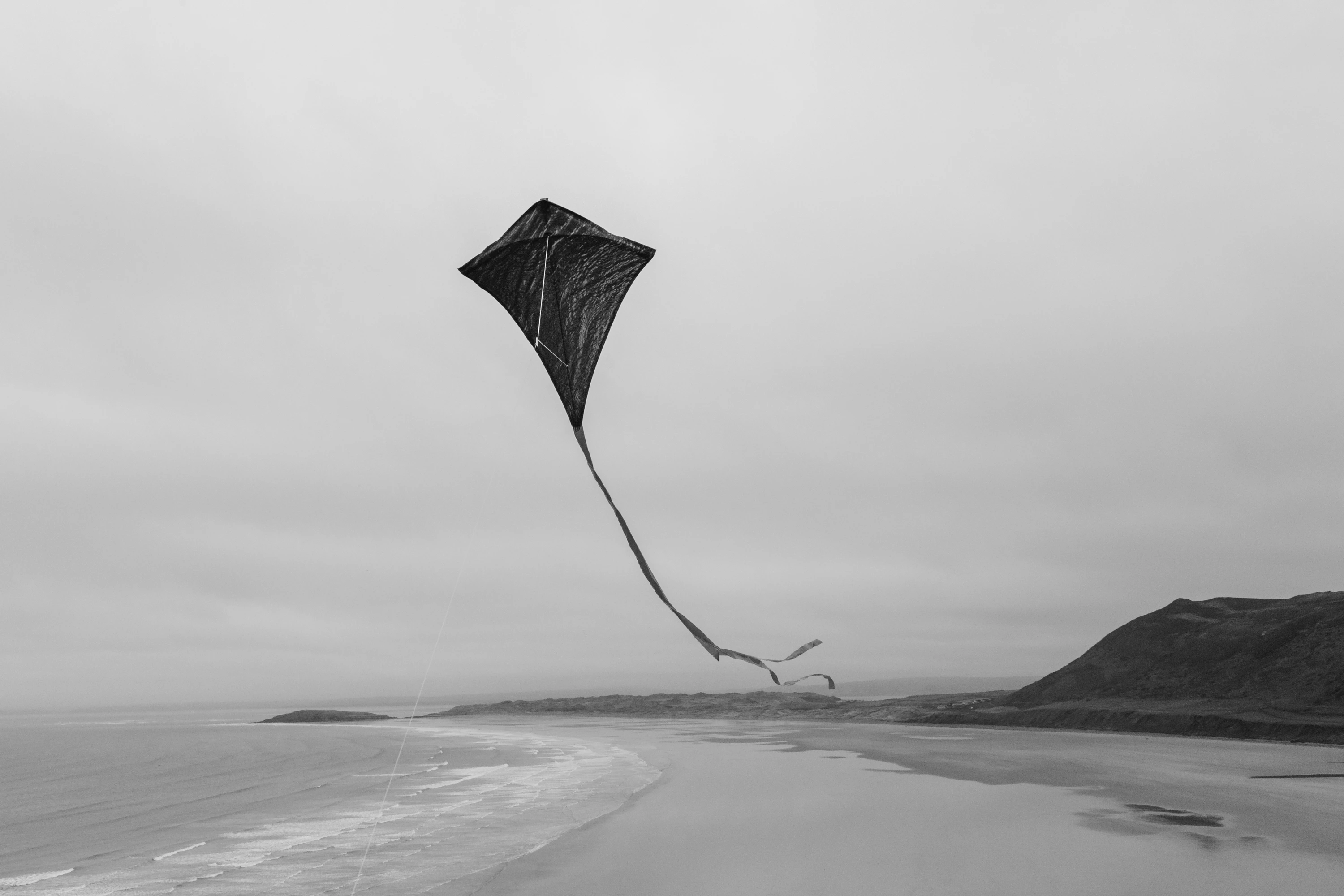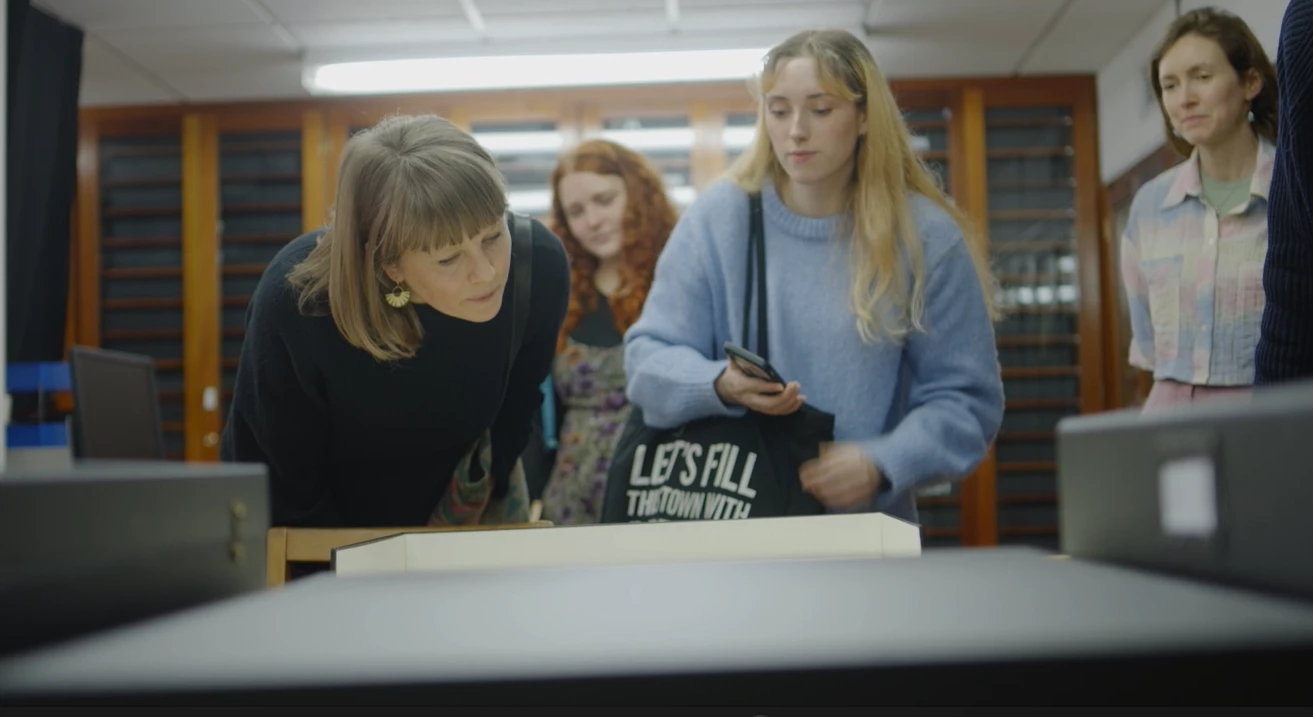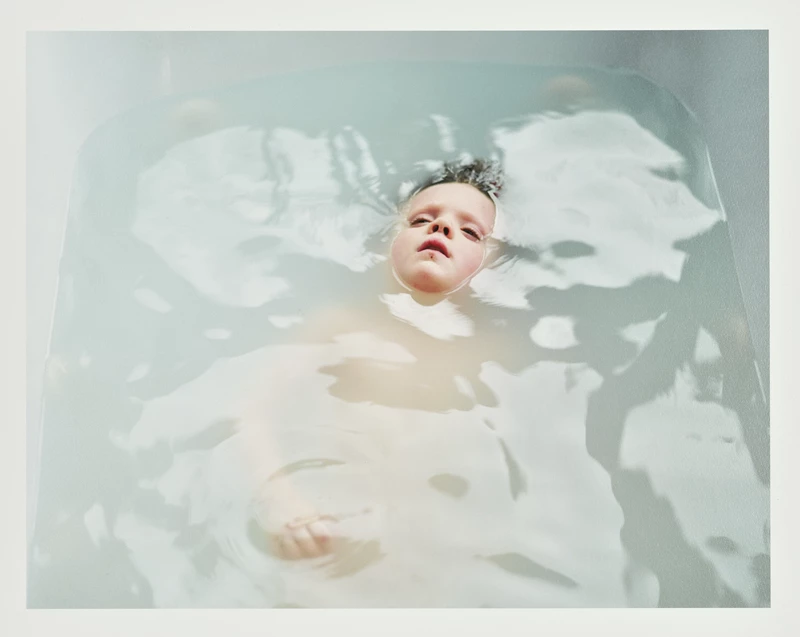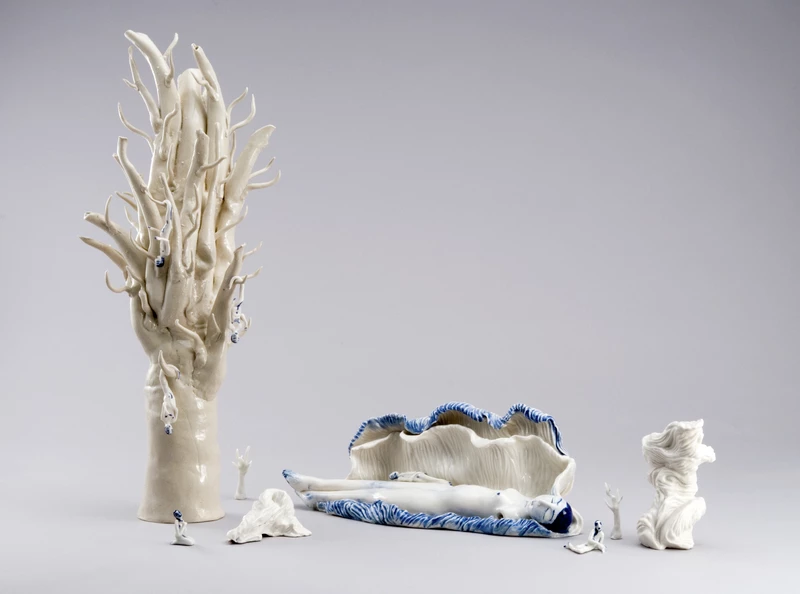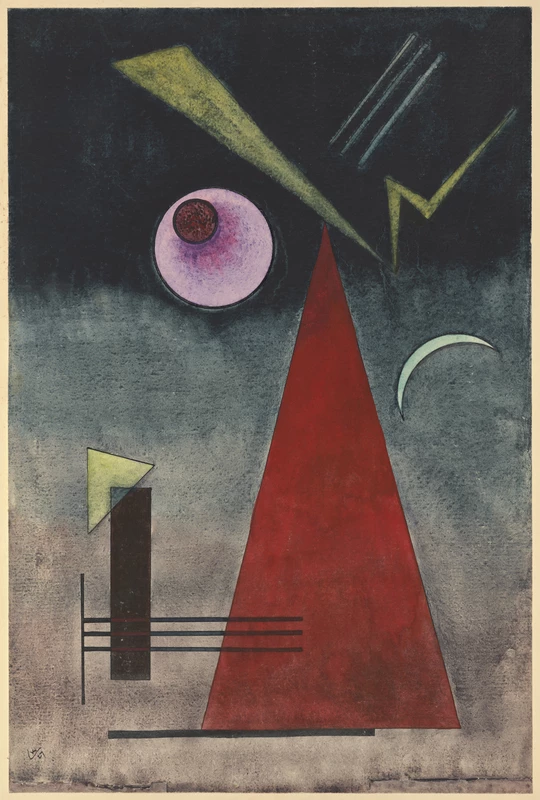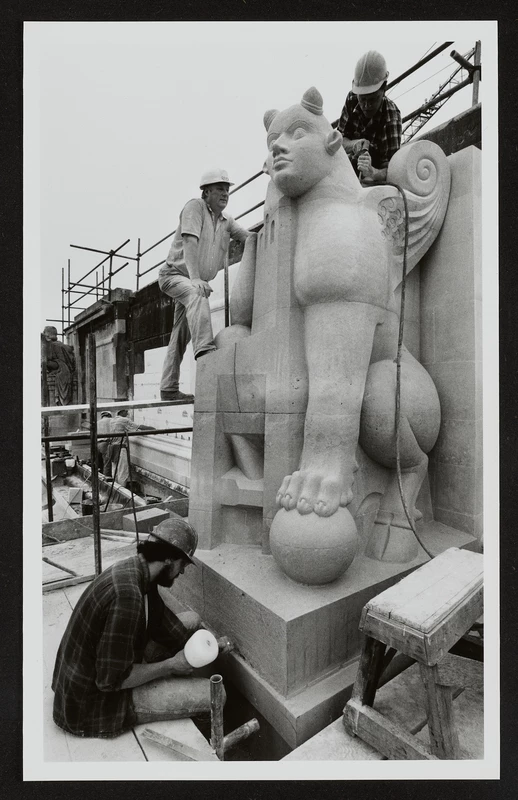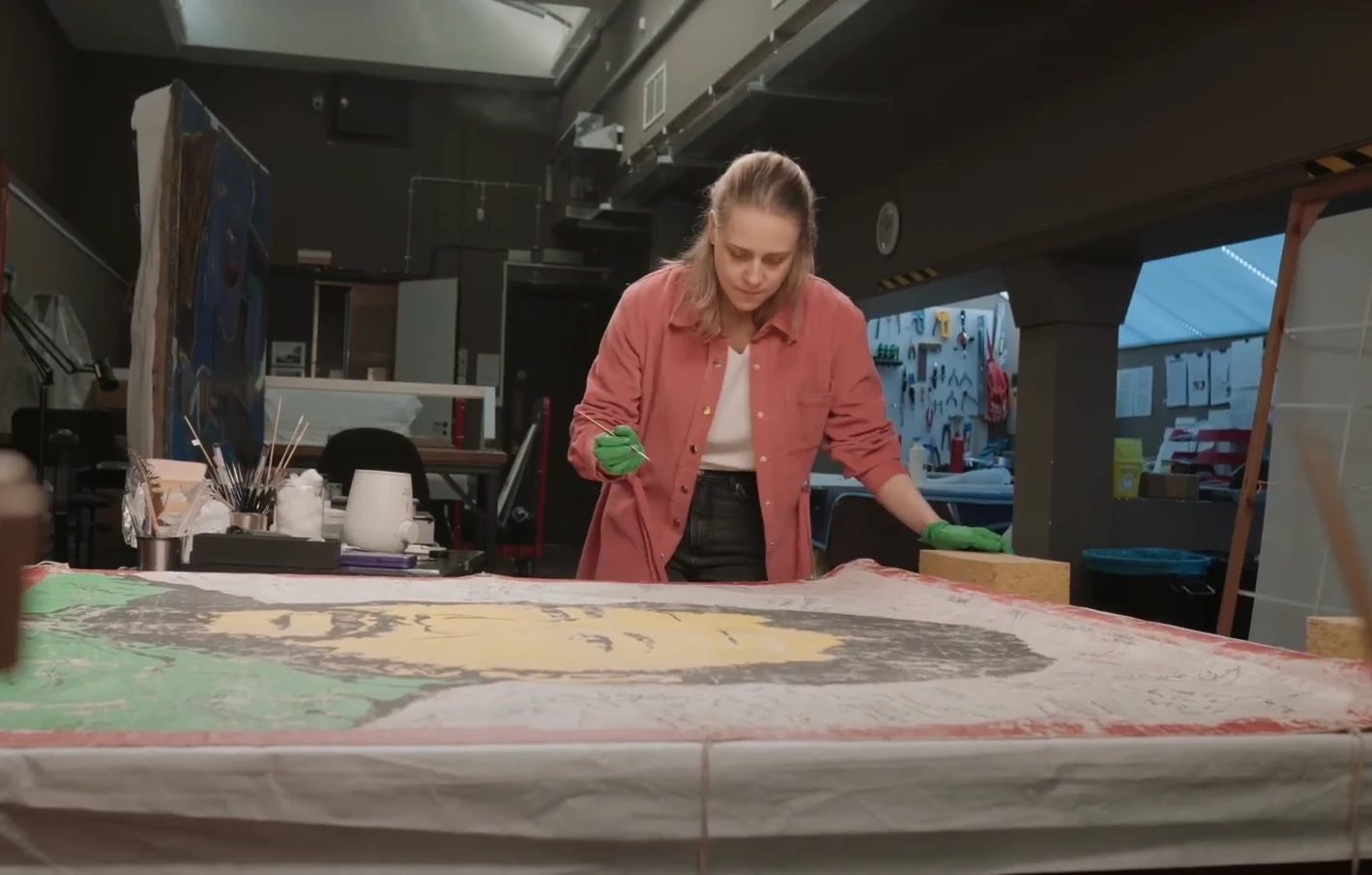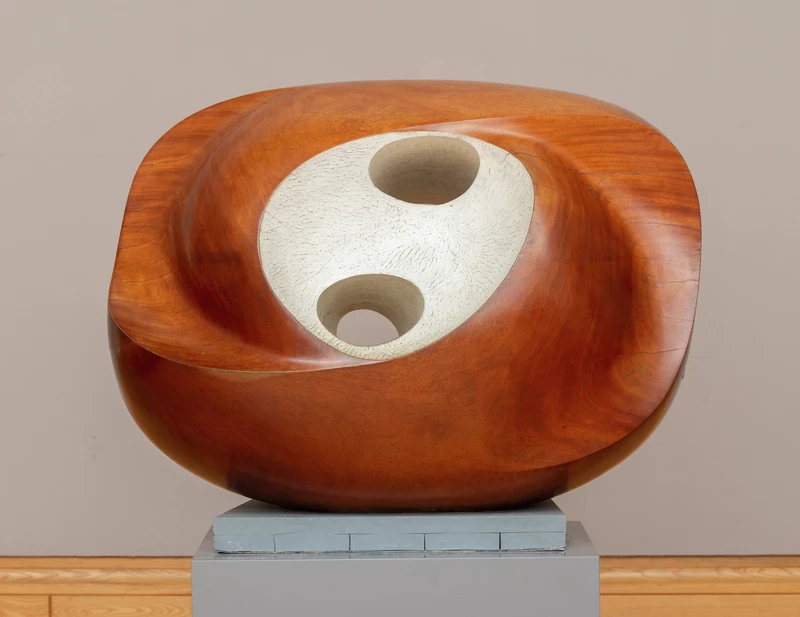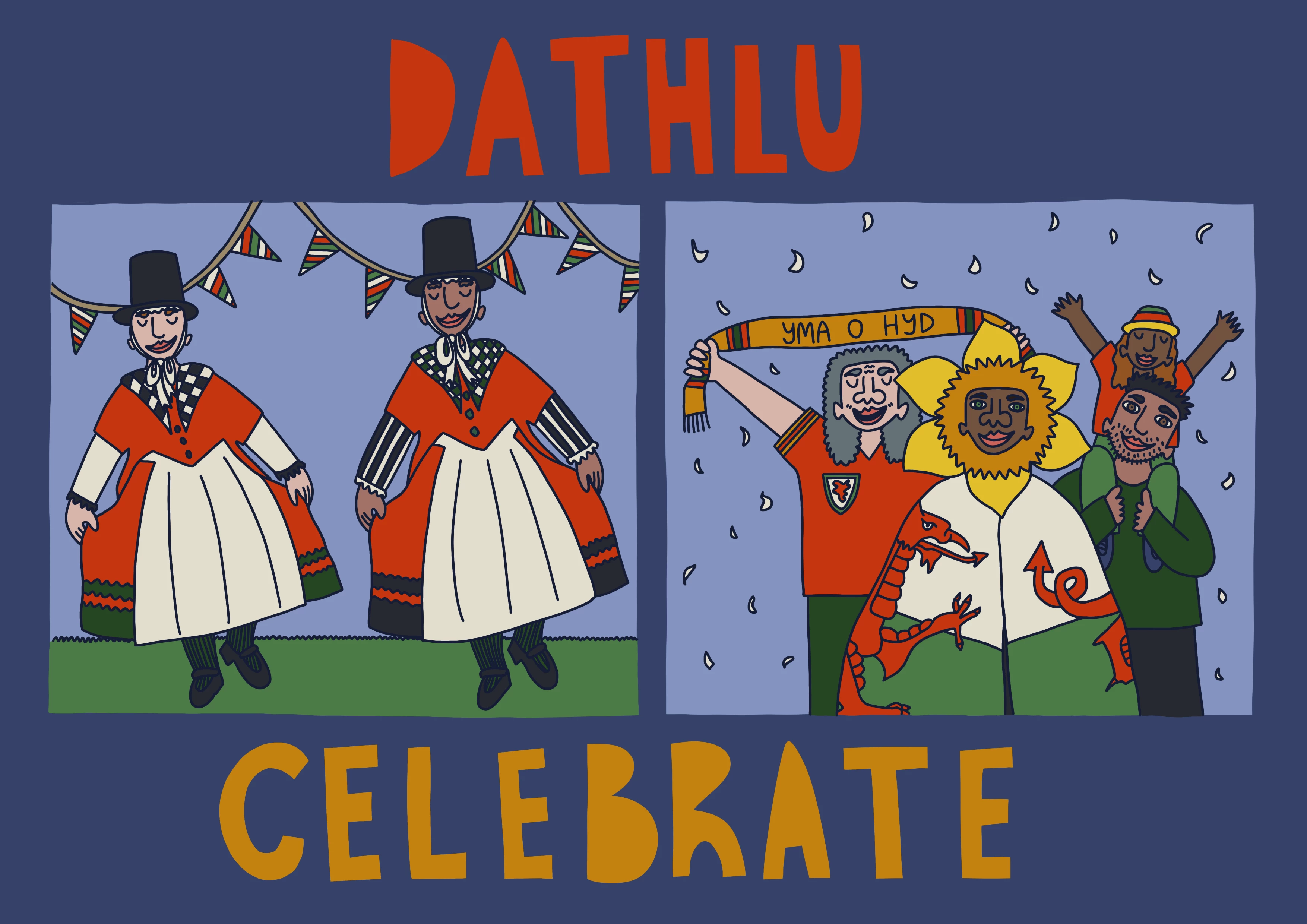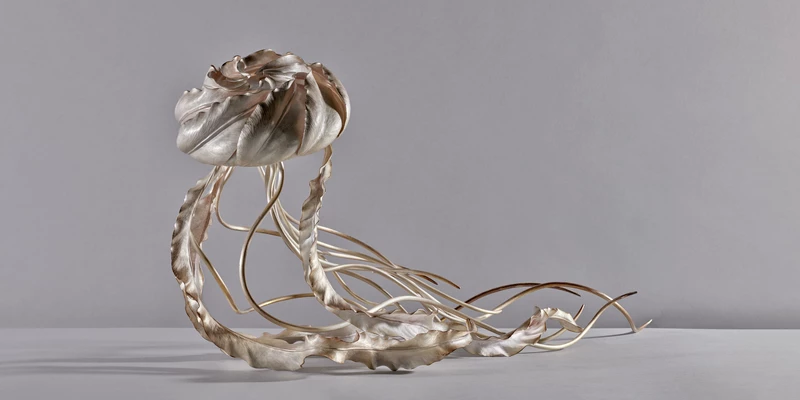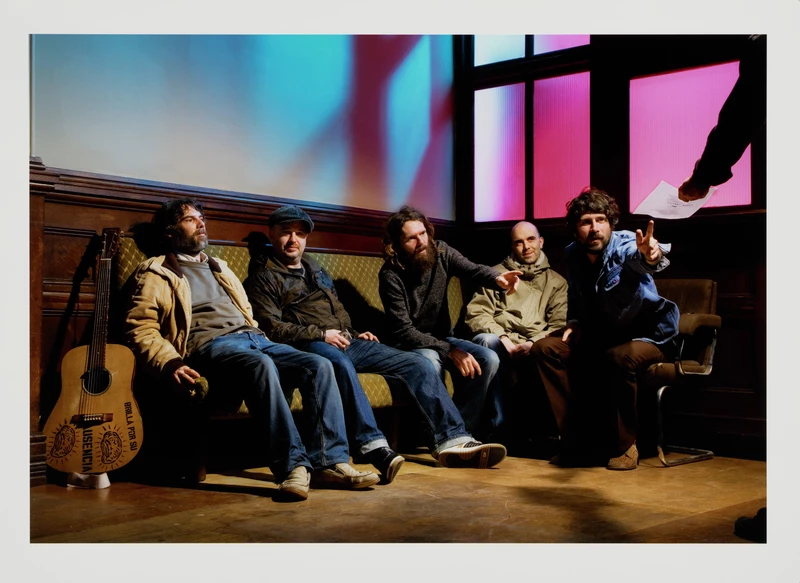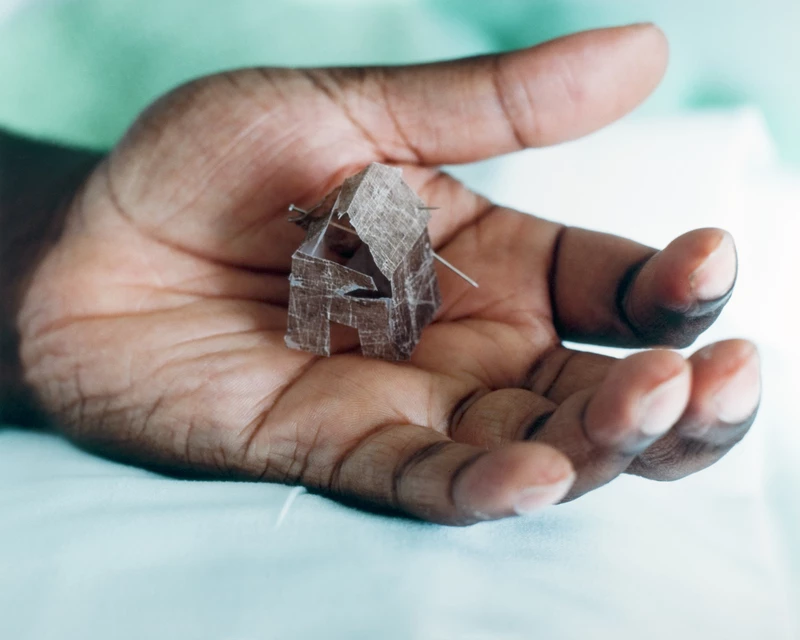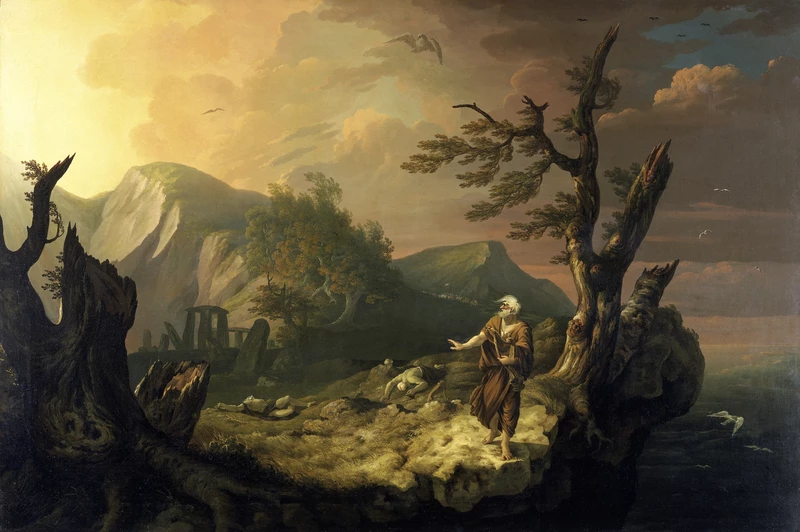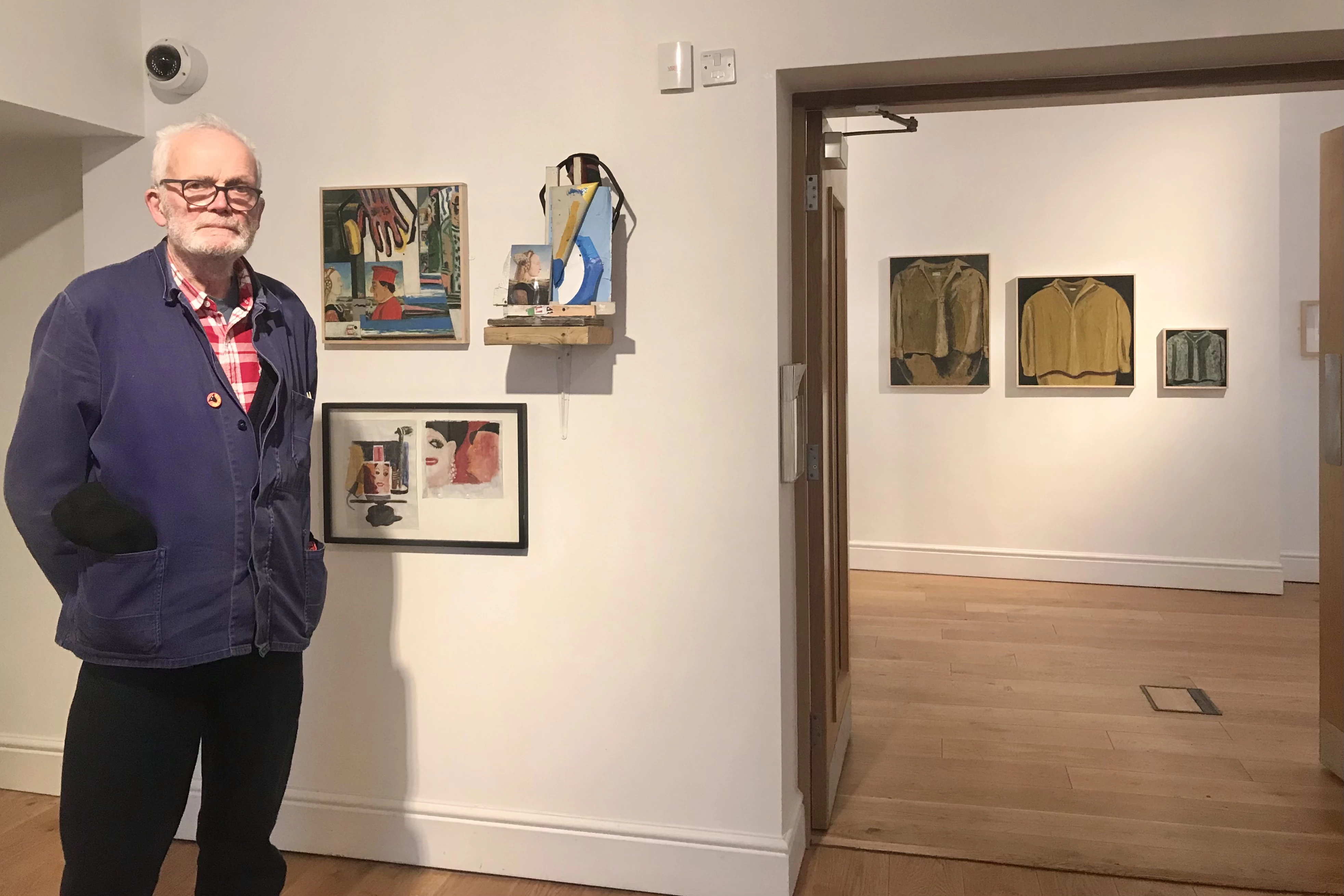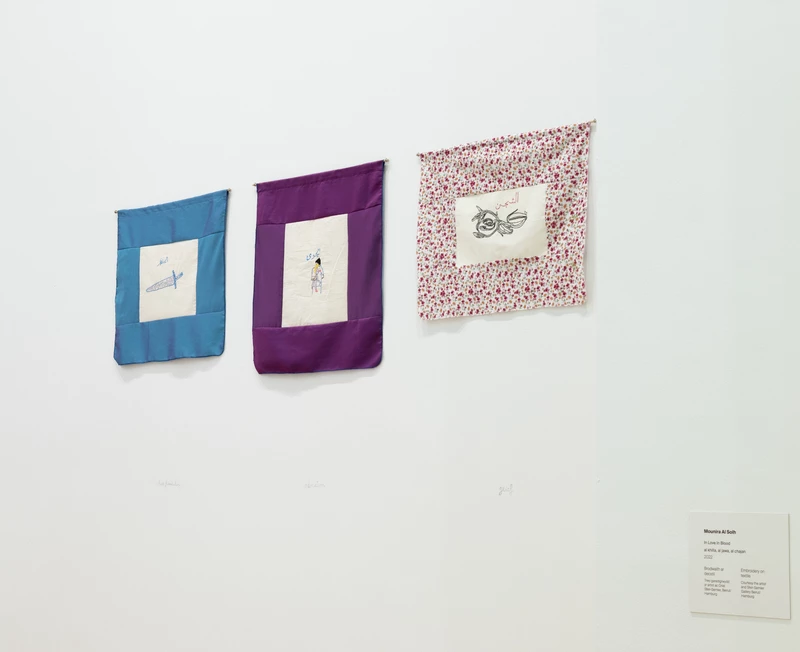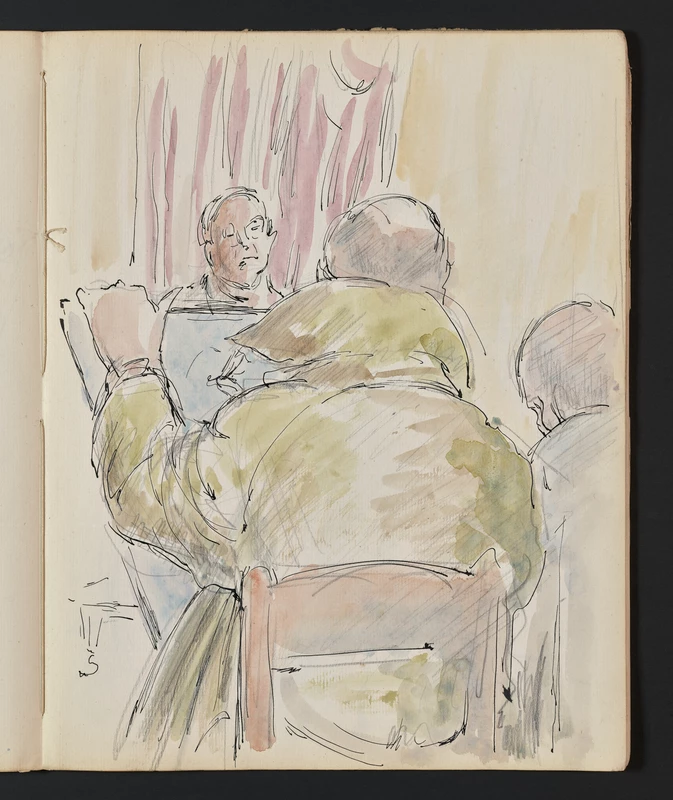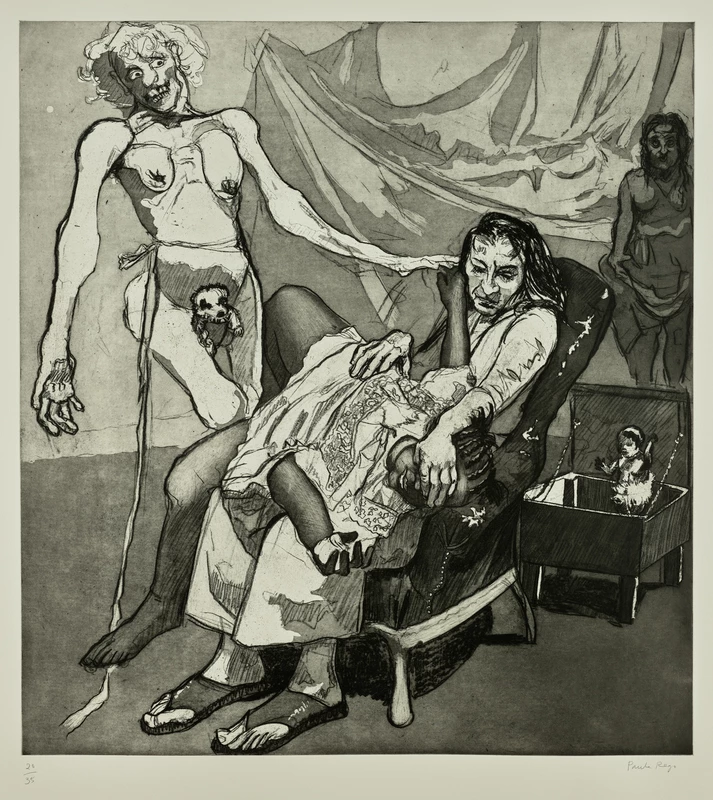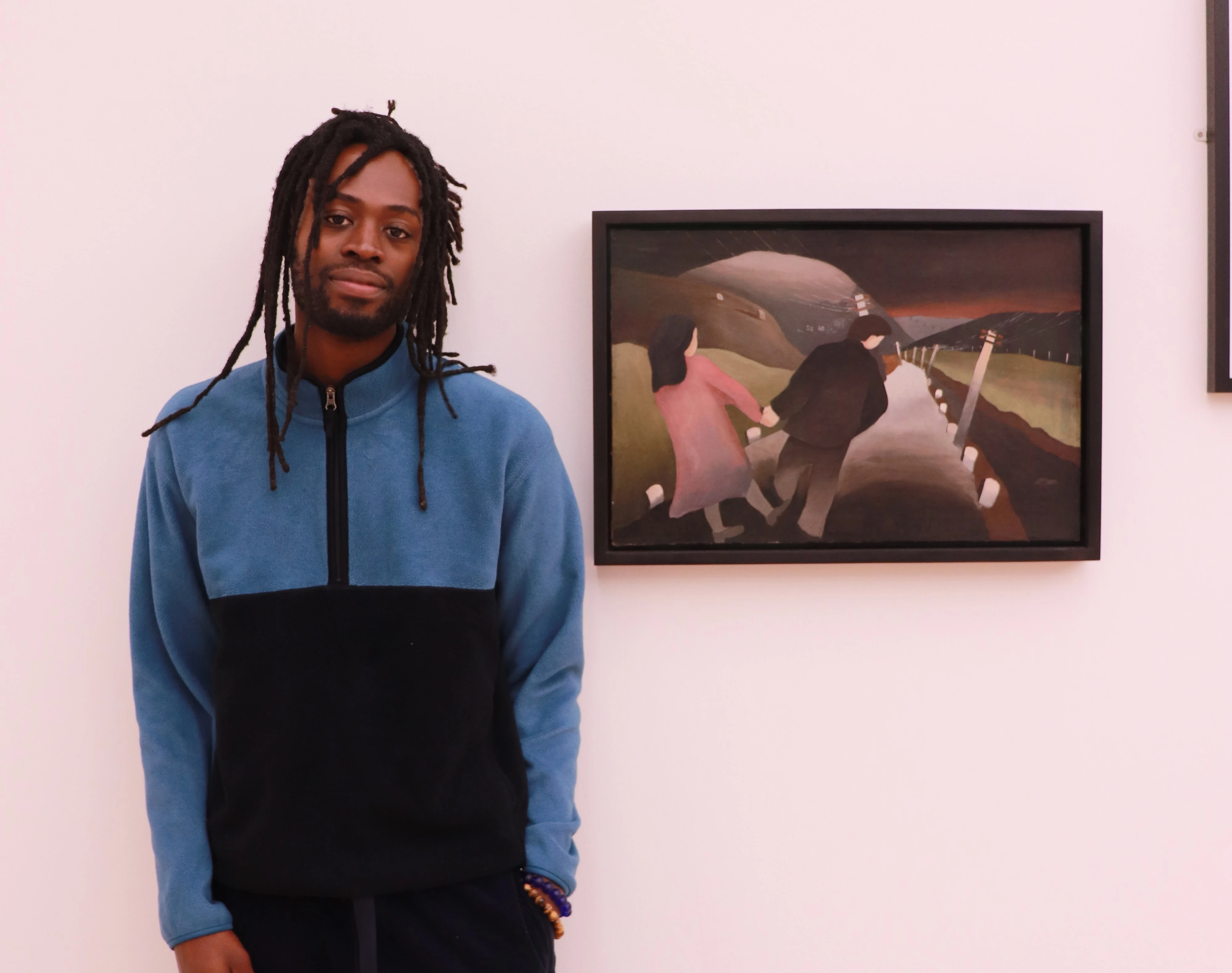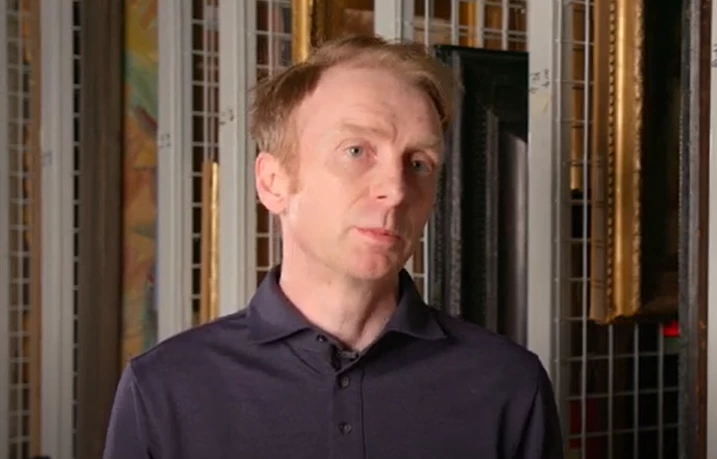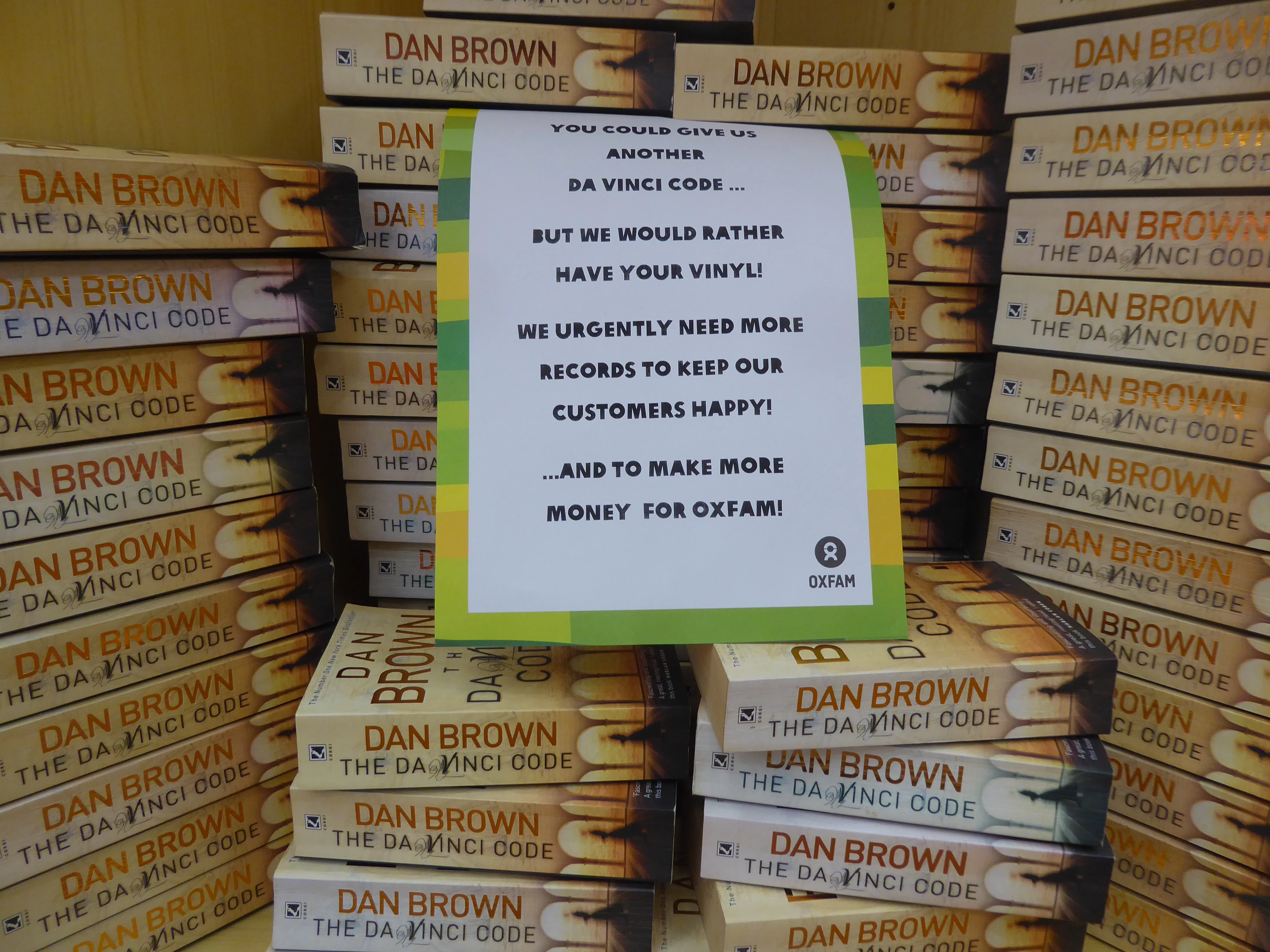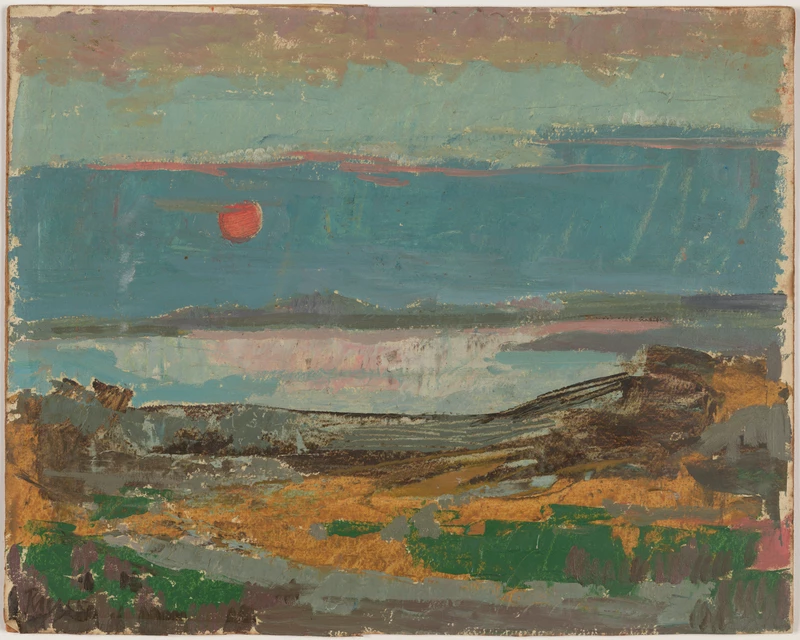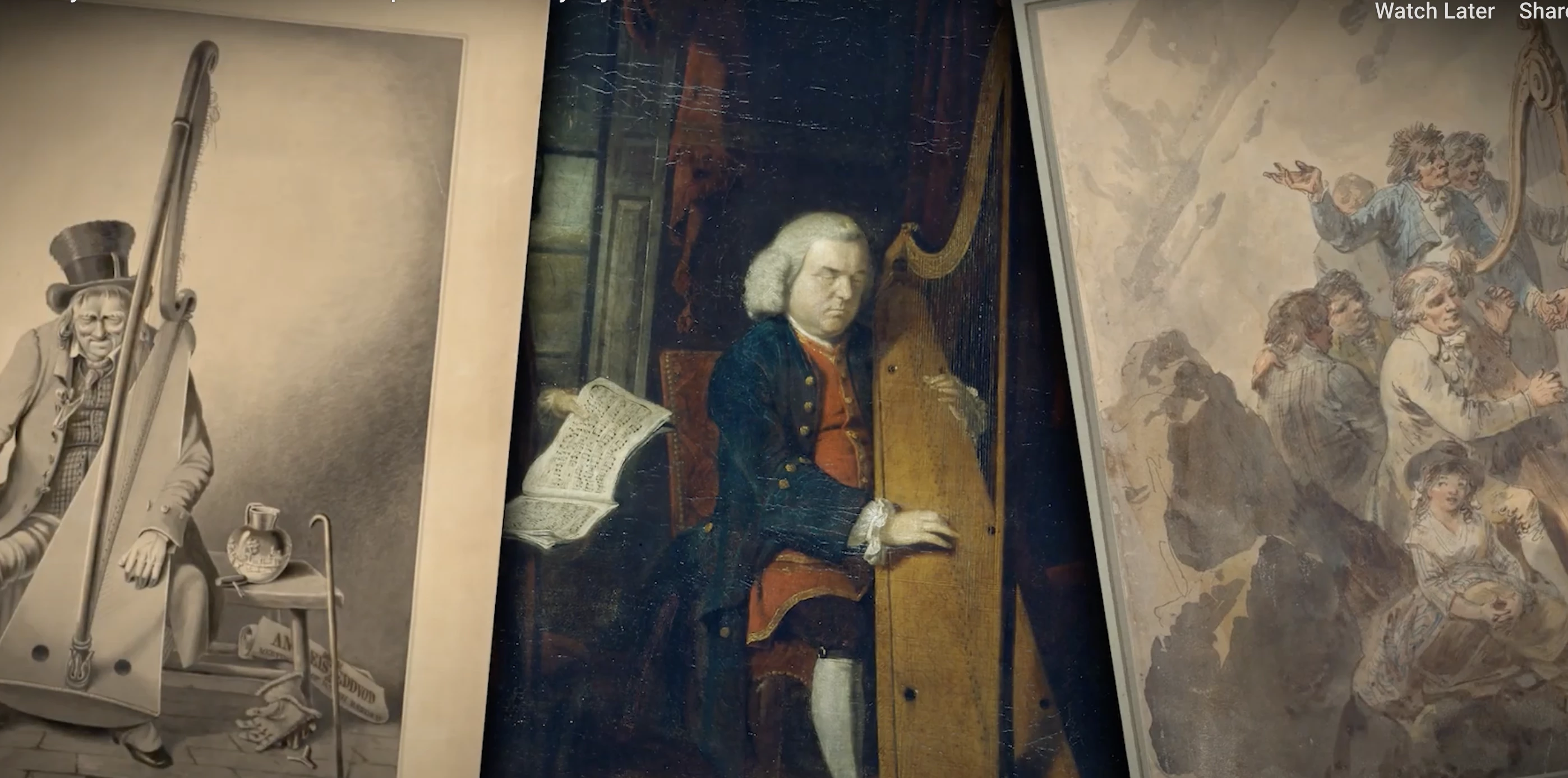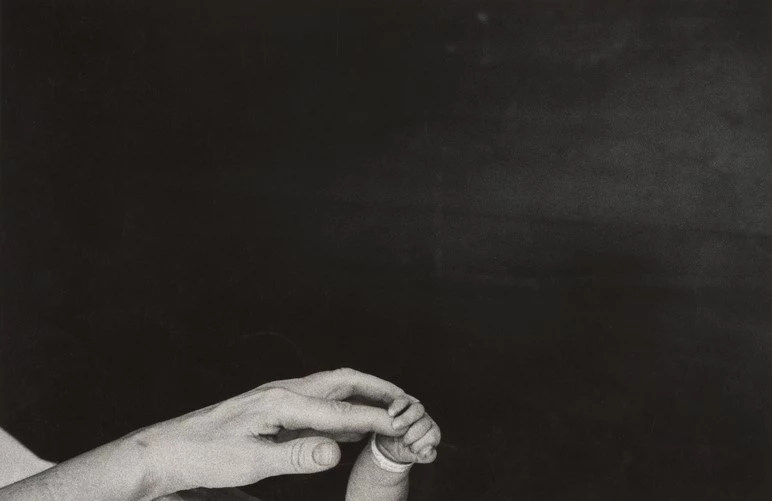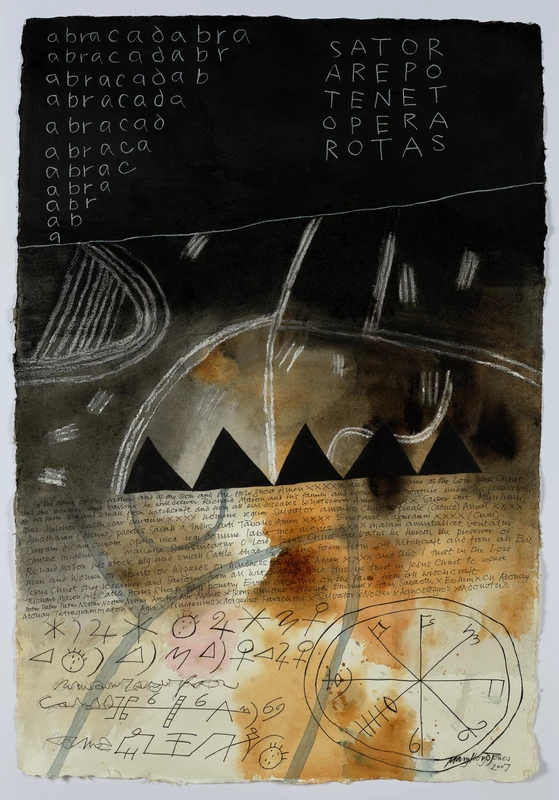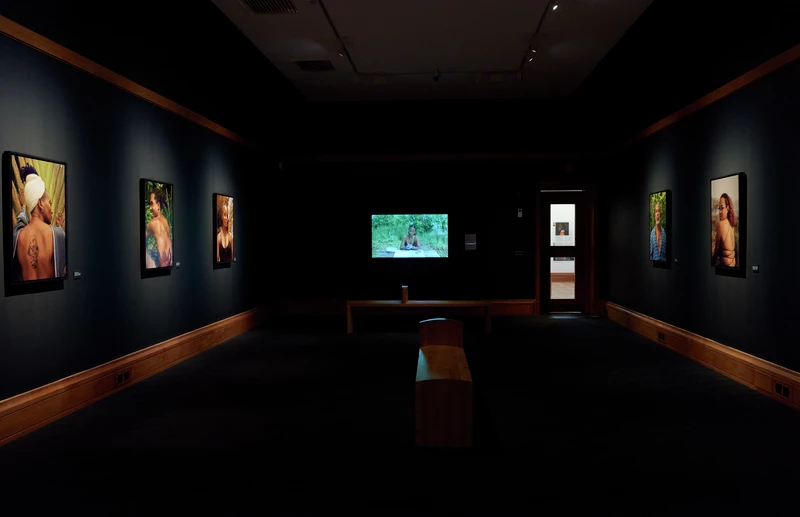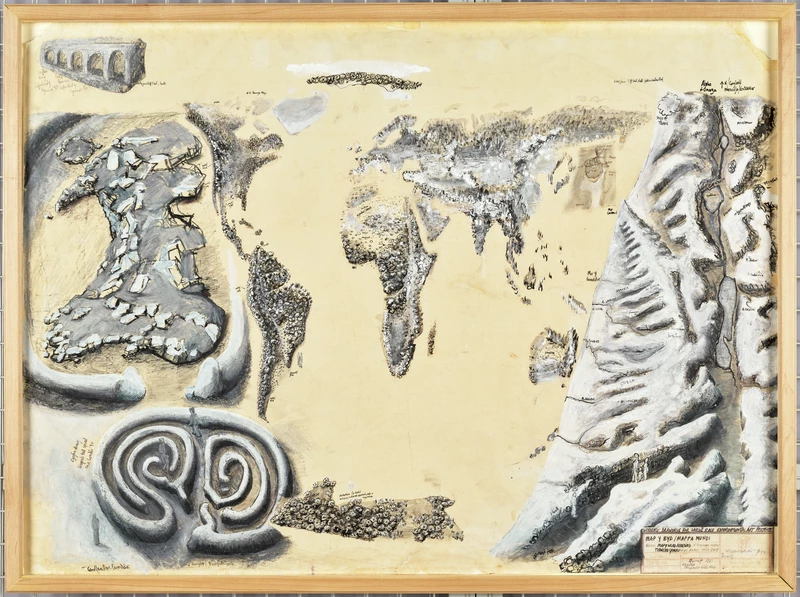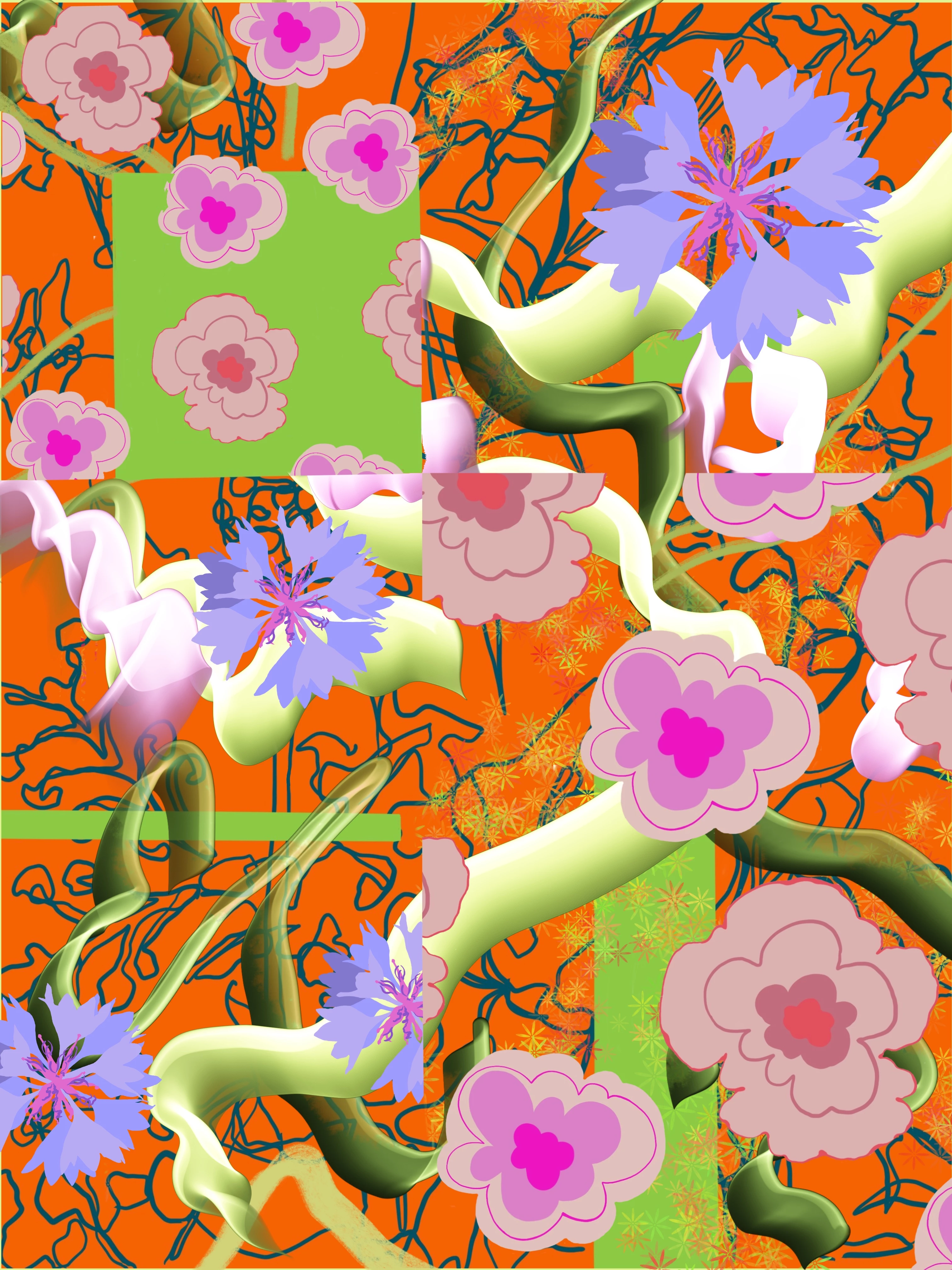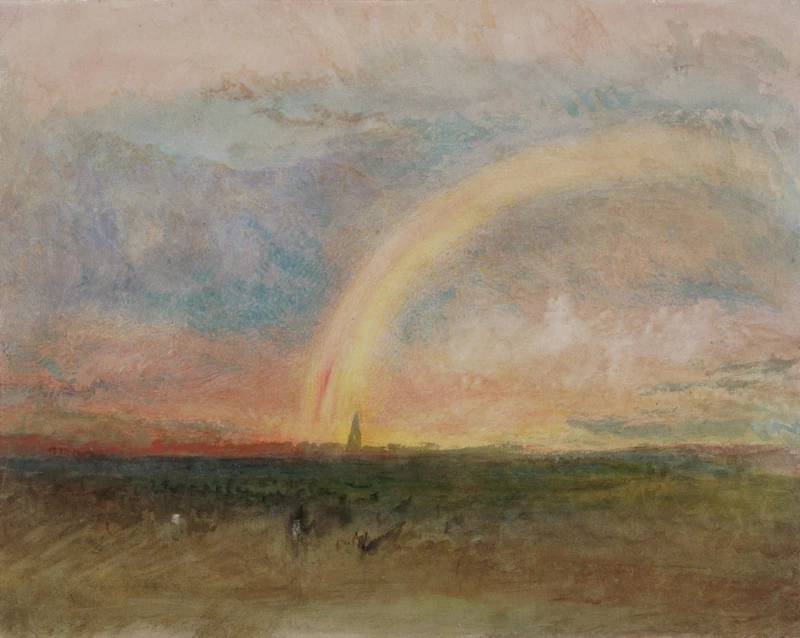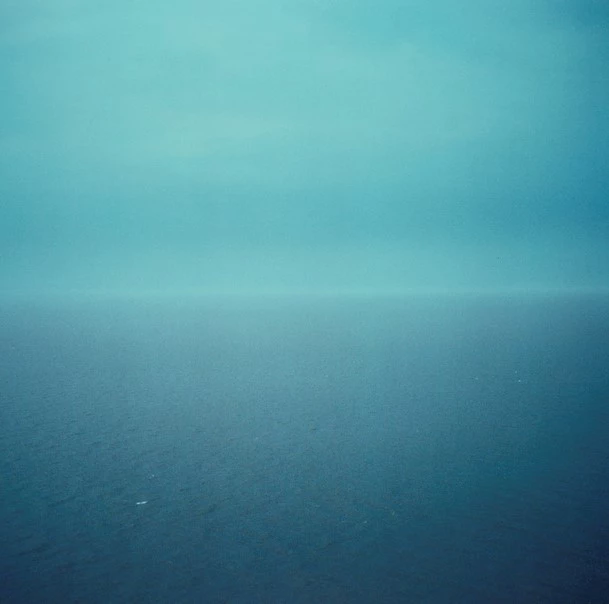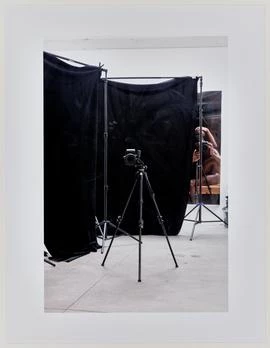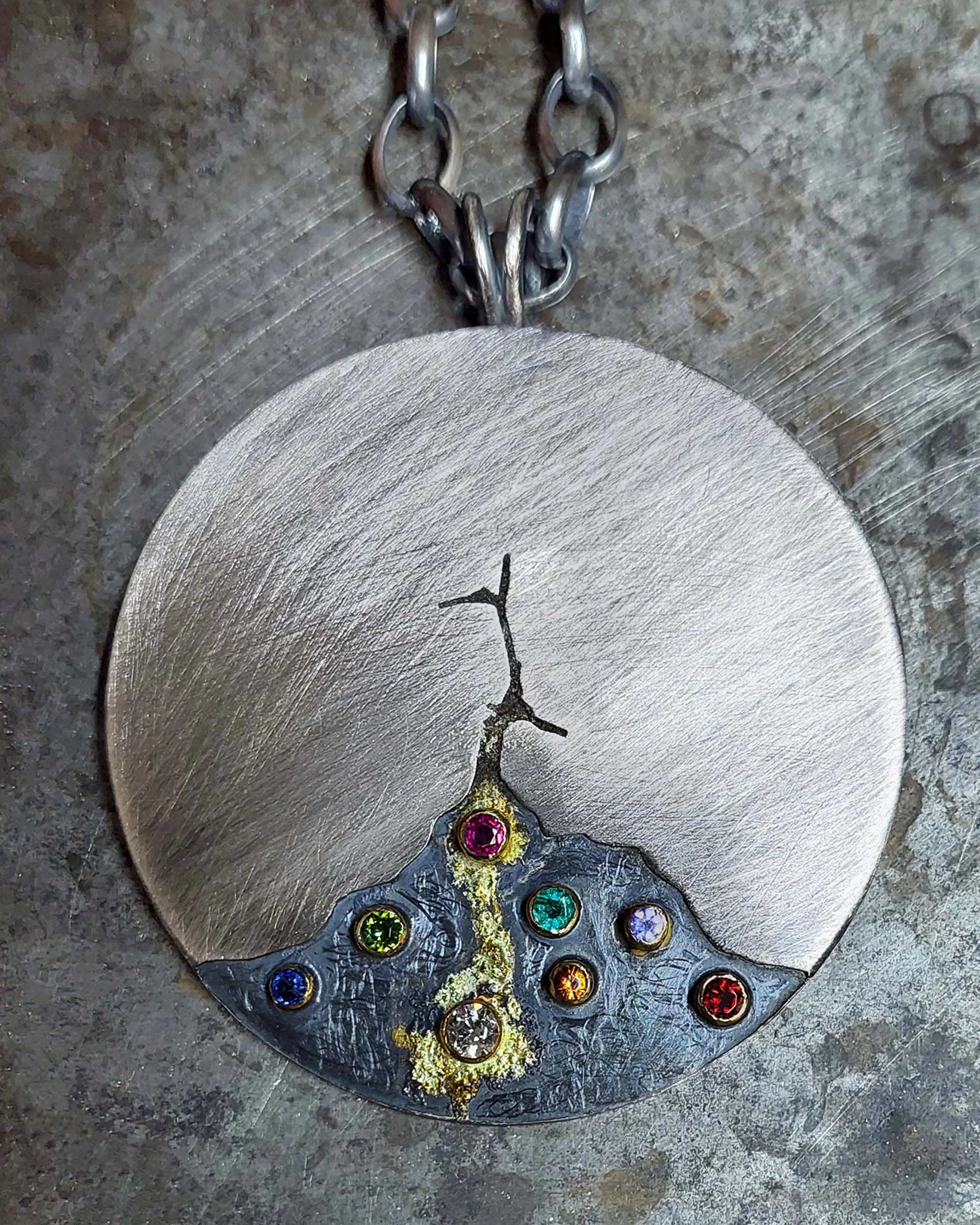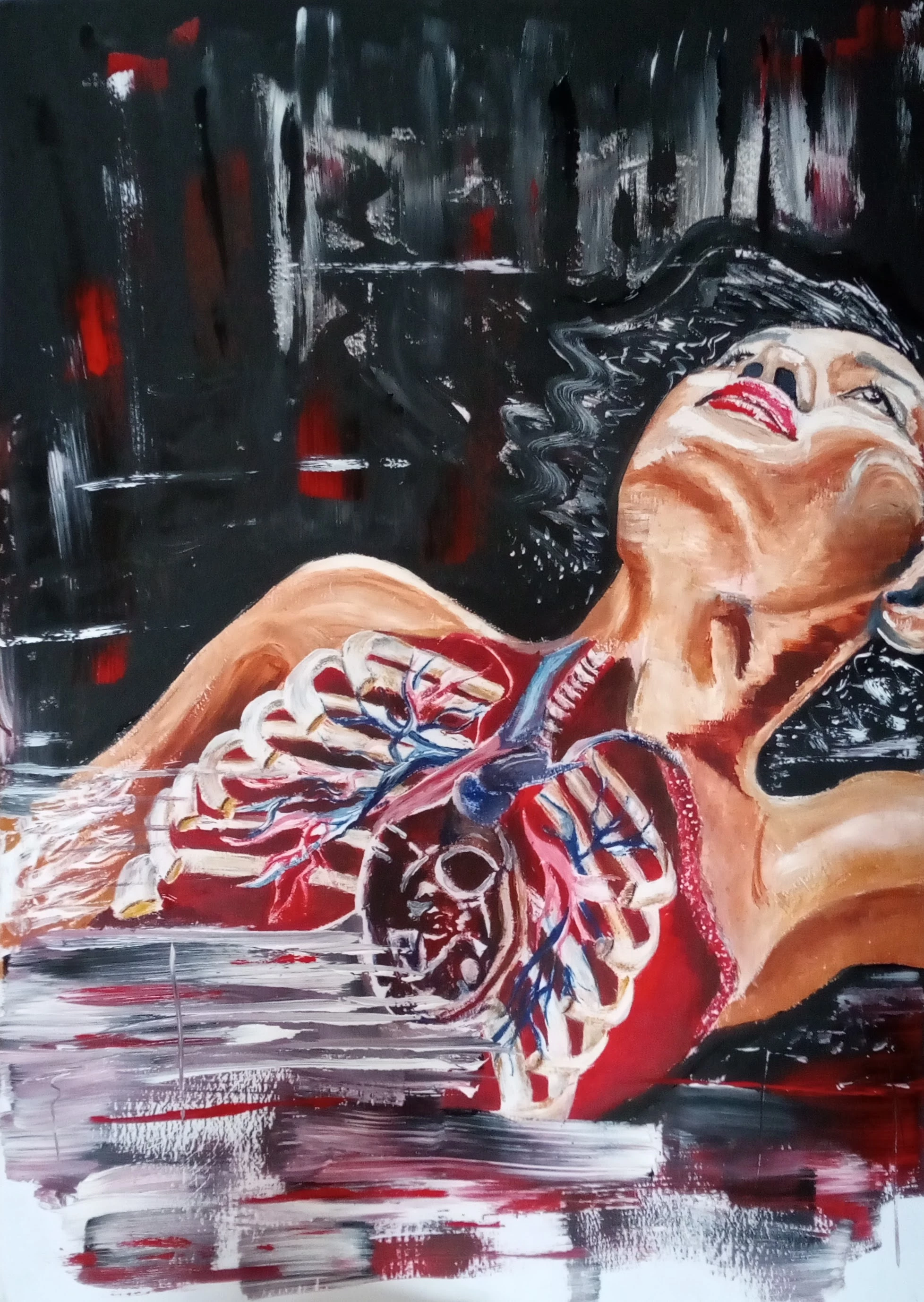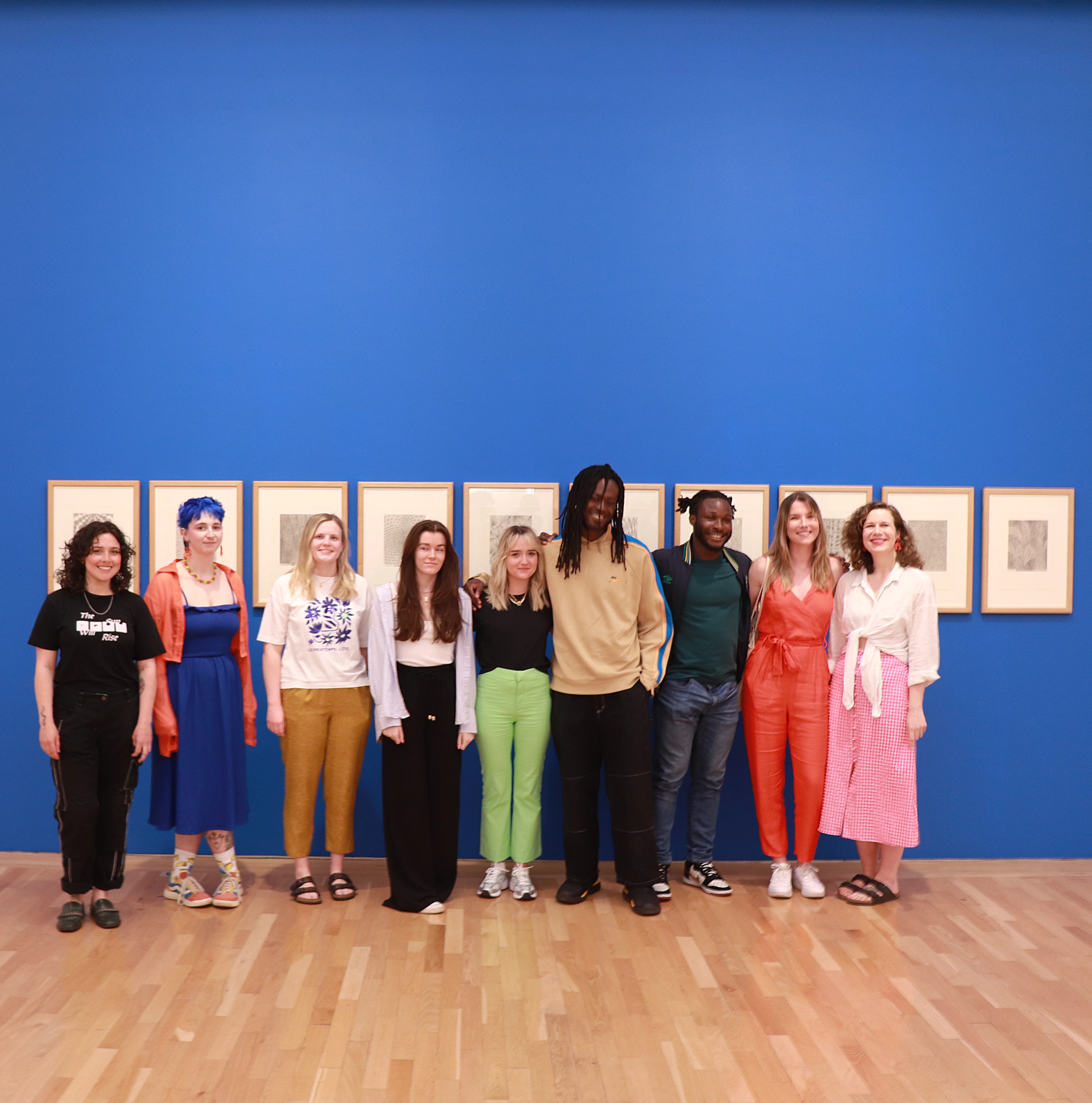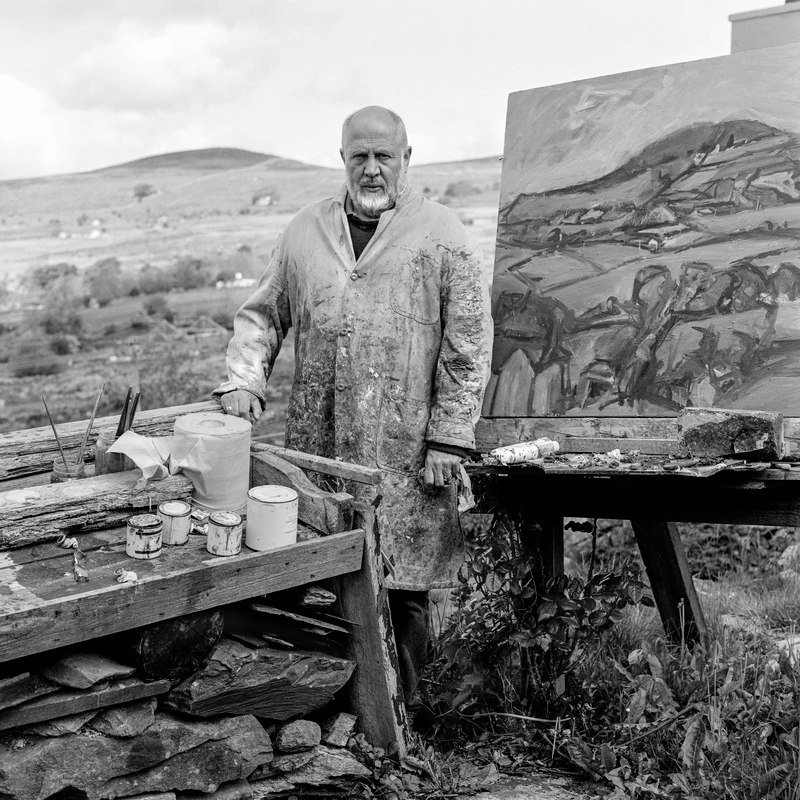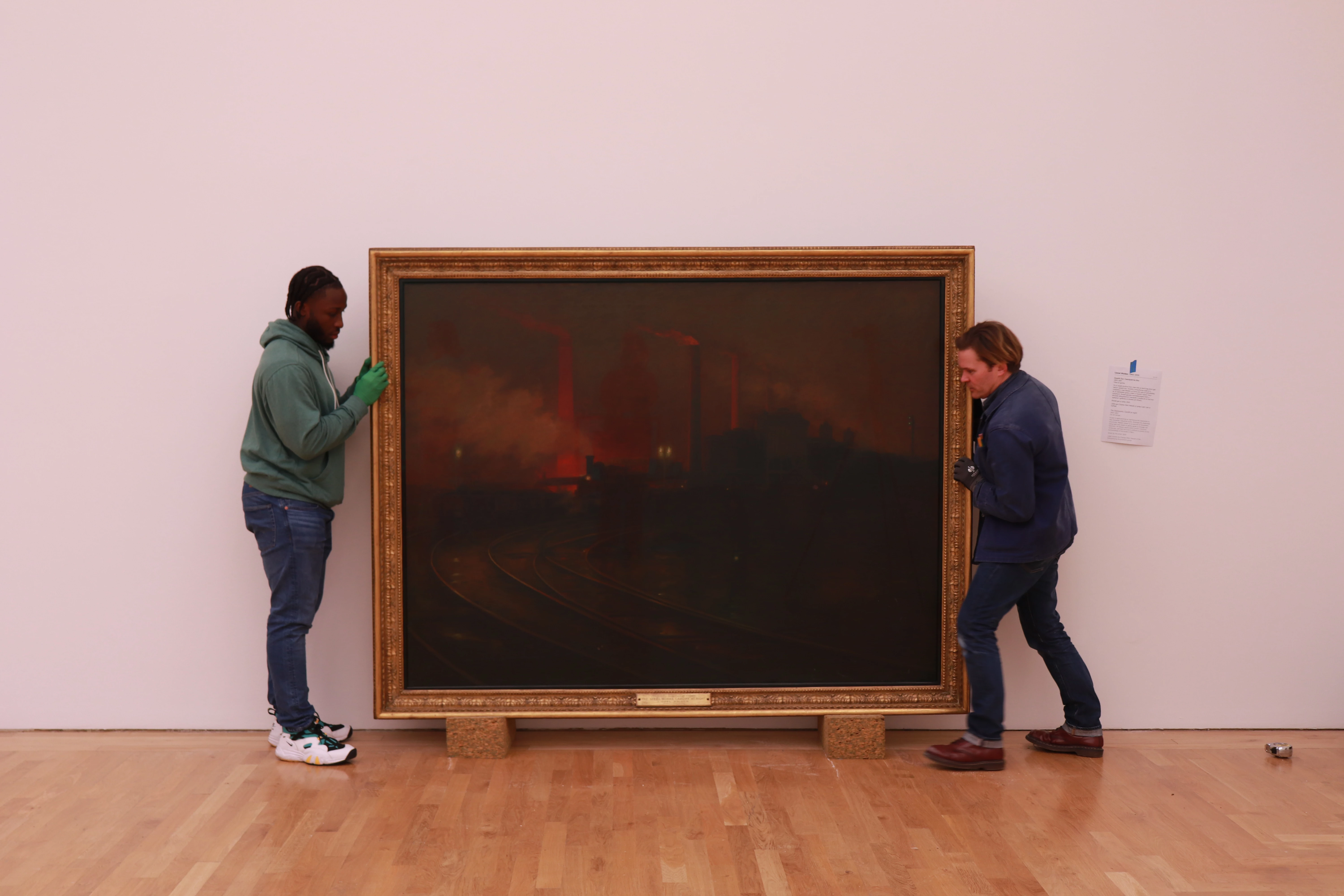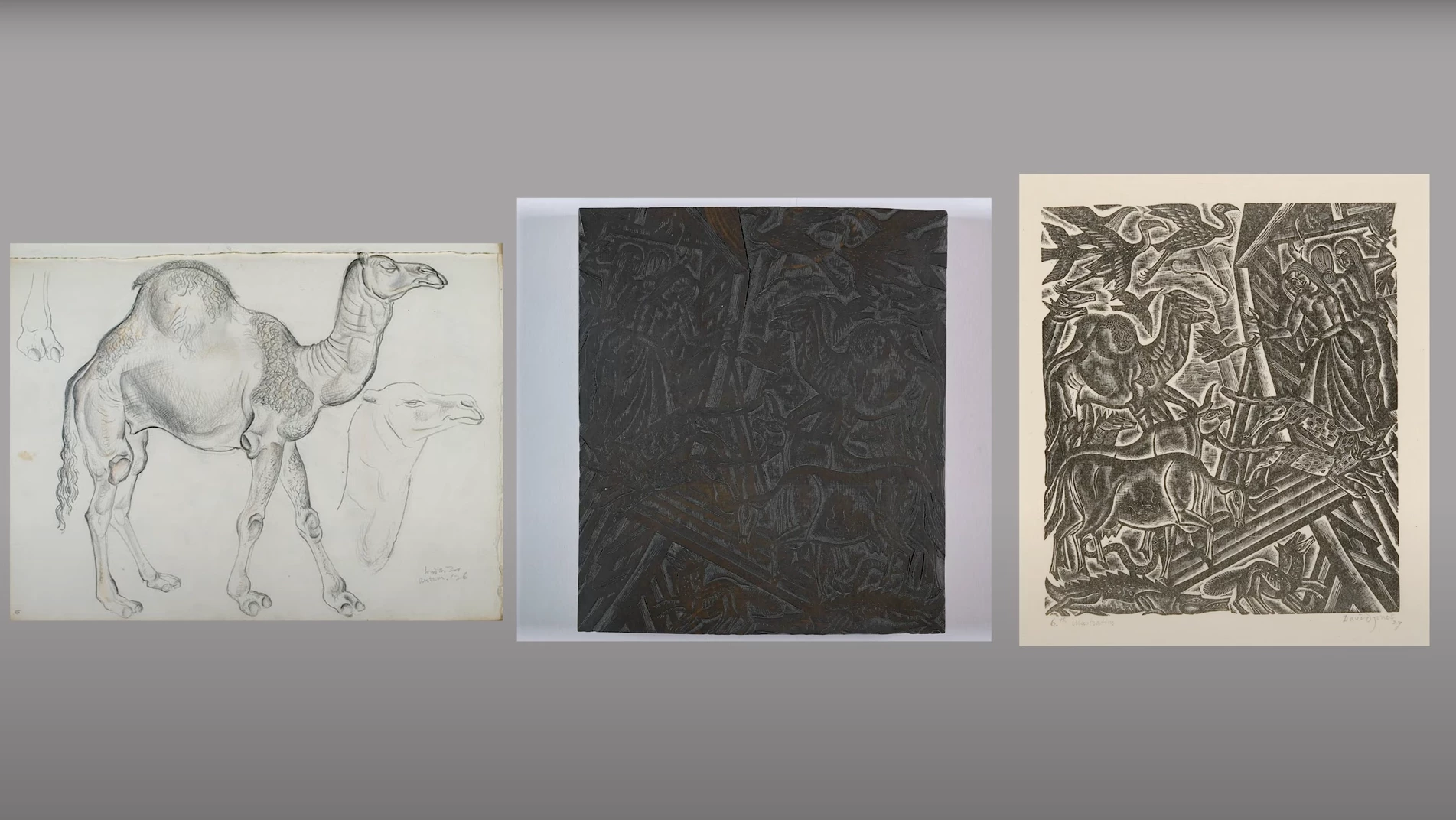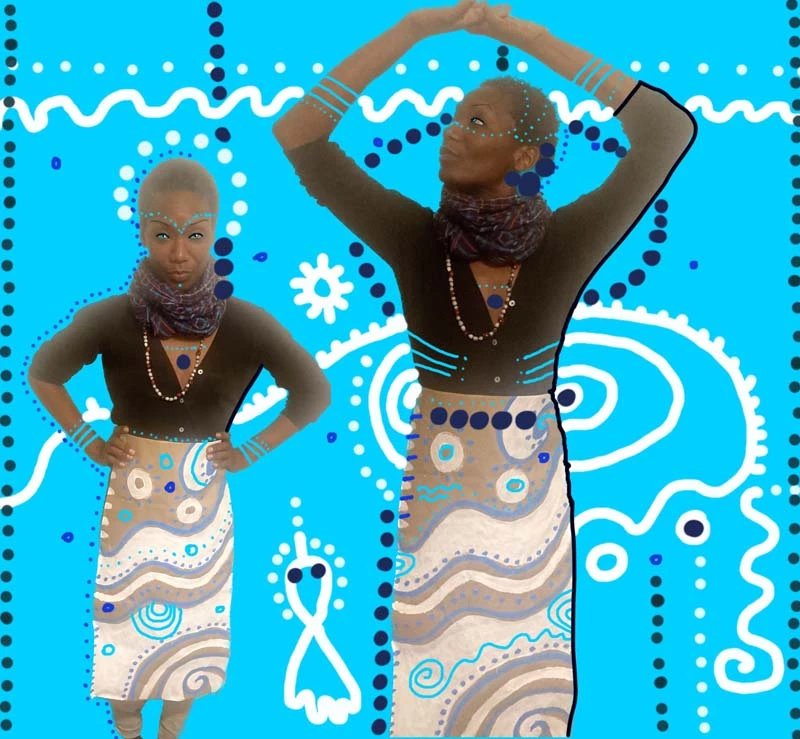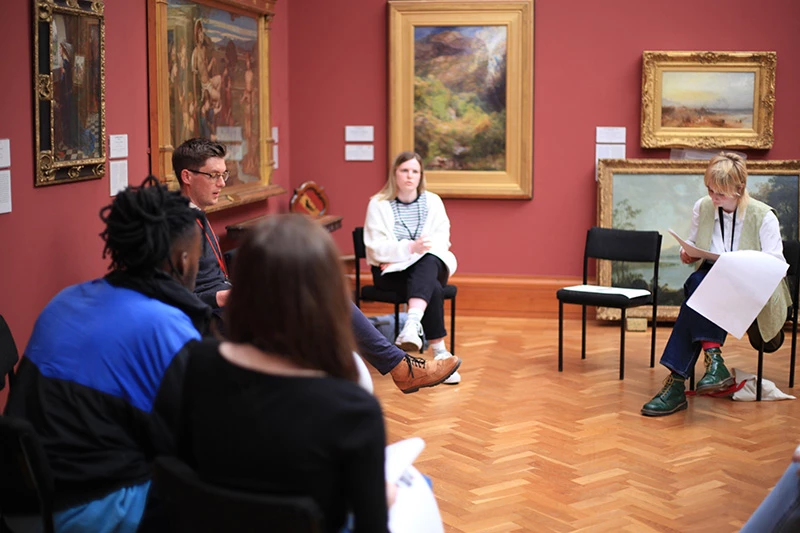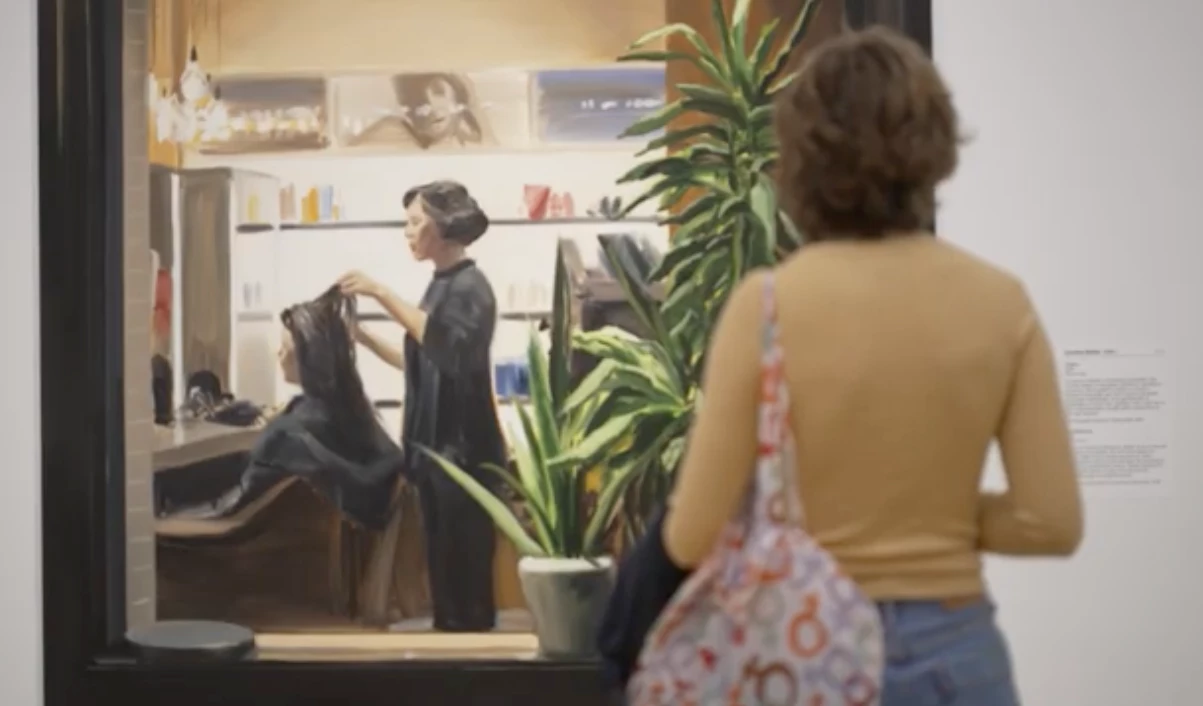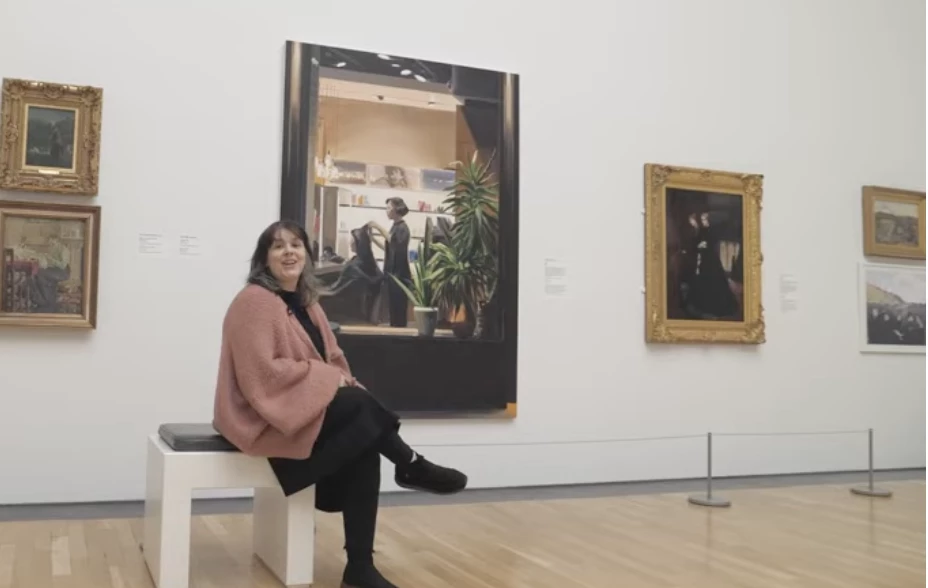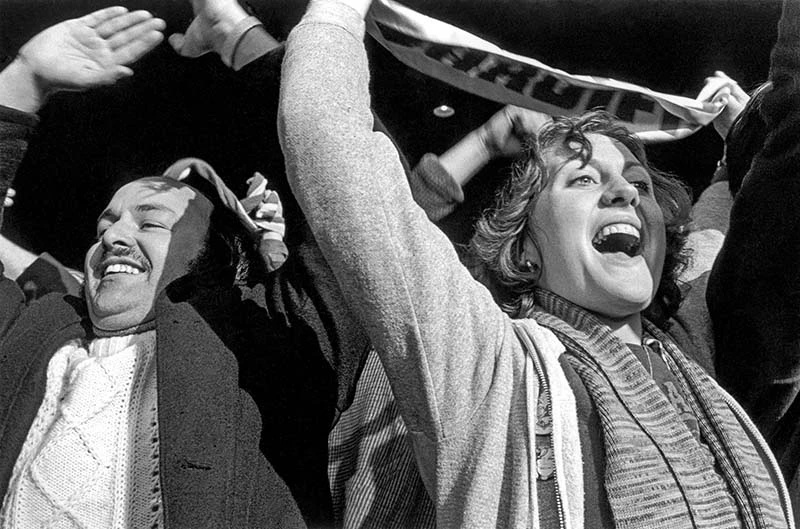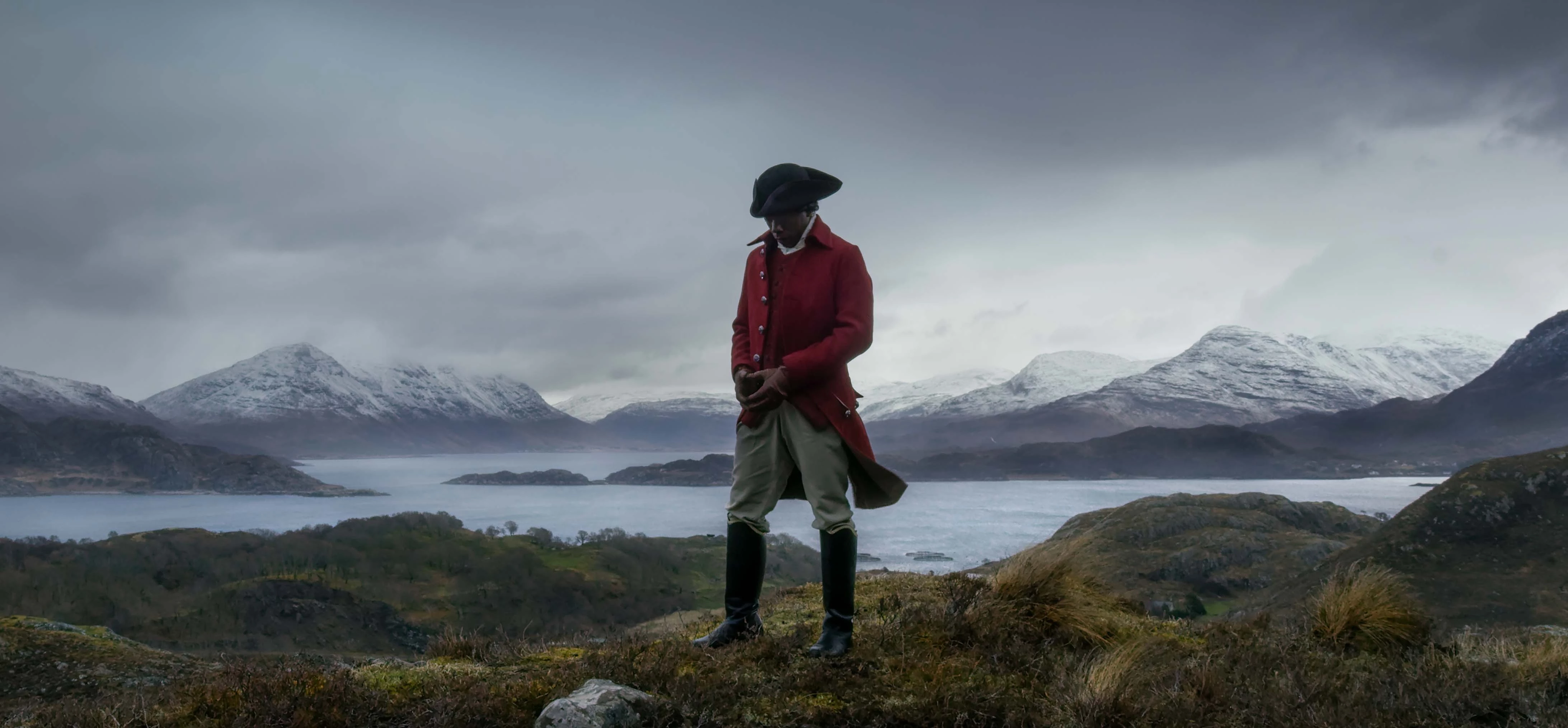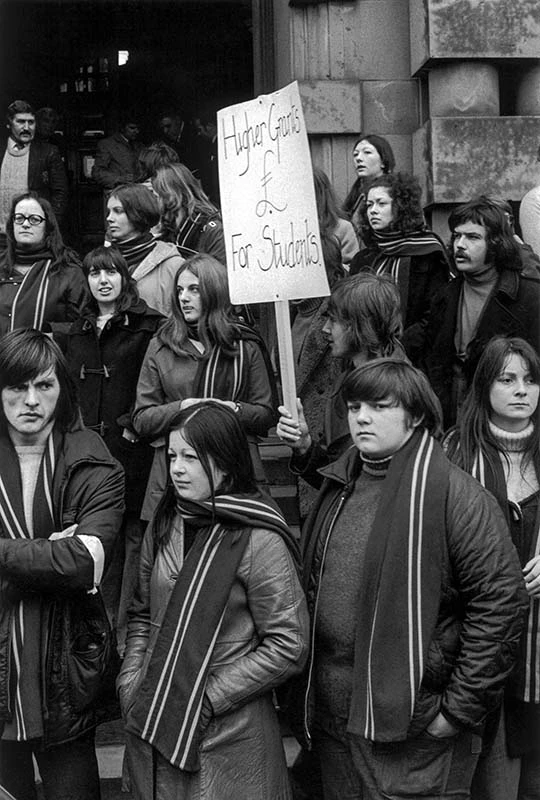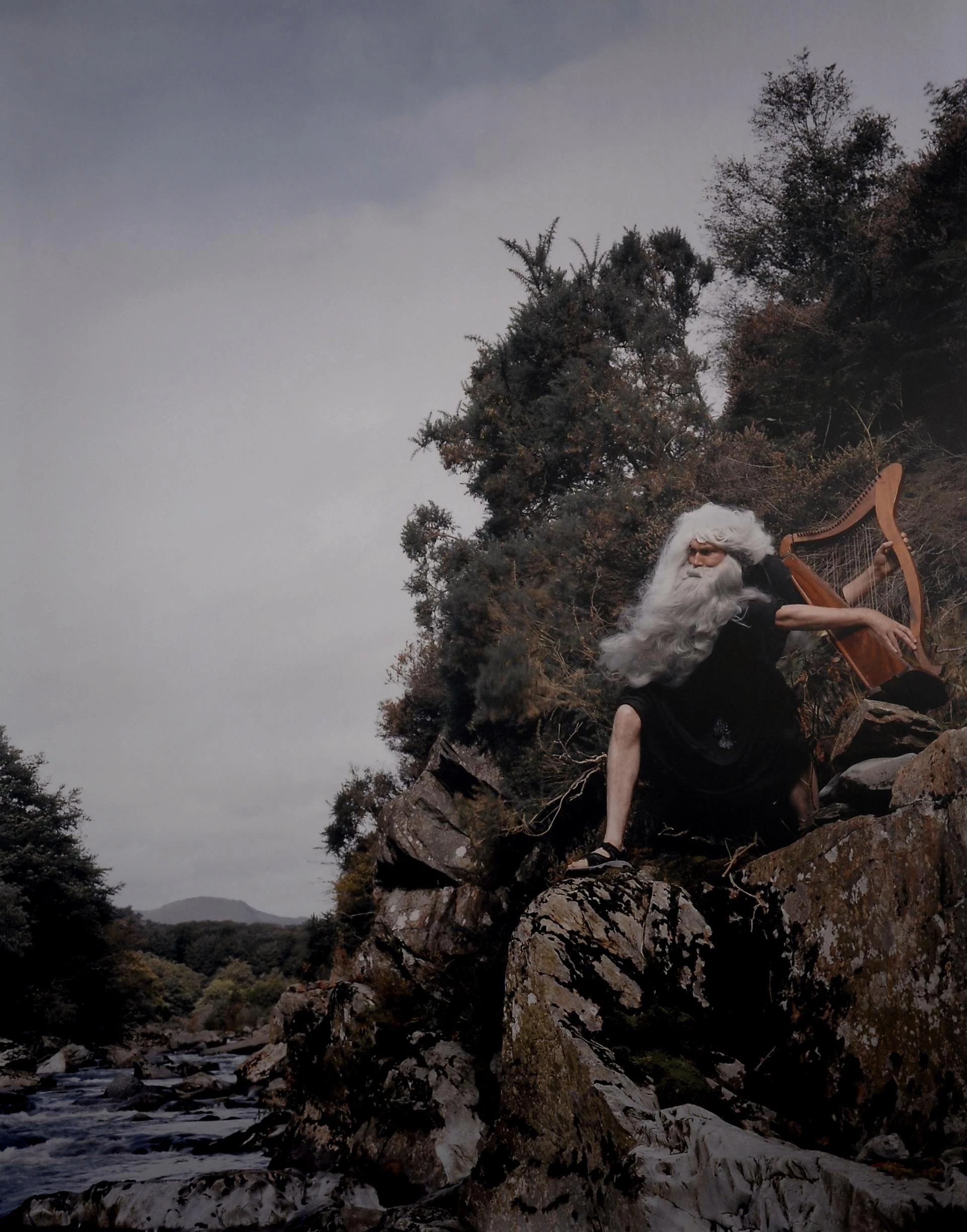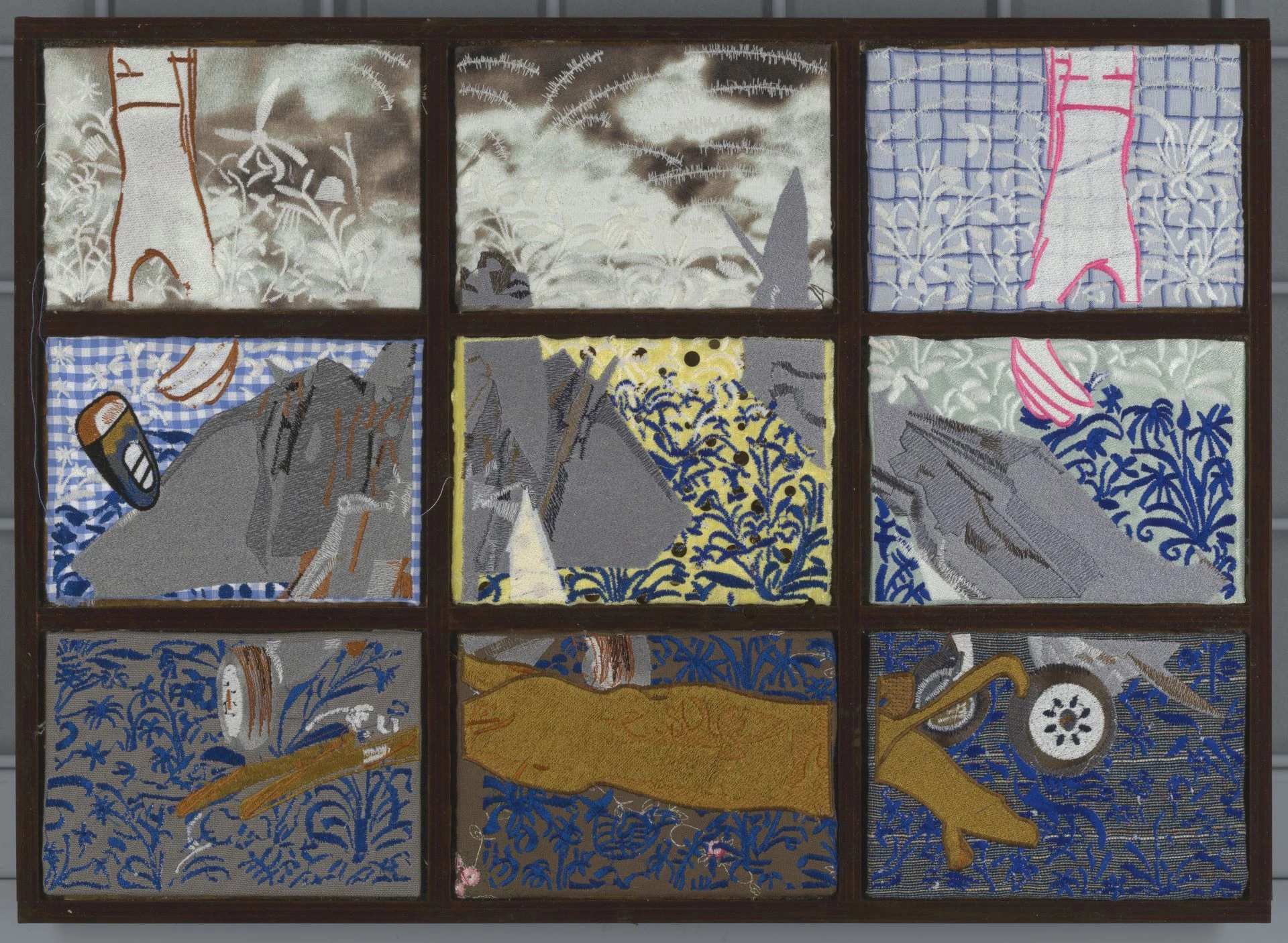Iolo Walker talks to Phoebe Murray-Hobbs about Yr Eryrod / The Eagles
WALKER, Iolo, Yr Eryrod / The Eagles © Iolo Walker
Textiles have historically been rarer in modern and contemporary art collections. With an emphasis on process, material and craft that’s at odds with modern art history’s prioritising of aesthetics and individual artists, textiles have often been sidelined and labelled as “decorative” and “domestic”.
To celebrate the skill, creativity and originality of textile artworks within the National Library’s Collection, we commissioned three textile artists working in Wales today to respond to pieces by artists Anya Paintsil and Eirian Short.
In the first of a series of three interviews, Iolo Walker talks about their digitally embroidered piece Yr Eryrod/ The Eagles, created in response to Eirian Short’s Y Brain/ The Crows. Read on for a discussion about the digital embroidery process and the relationship between craft and consumer culture.
Can you tell us more about what’s going on in your embroidery, Yr Eryrod?
Yr Eryrod are the Eagle fighter planes that plague the Dyfi Valley doing a training circuit called the “Mach loop”. They appear like birds here, vulture-like, poised to devour the deer lying on the ground. The two hands reaching down from above are the hands of second homeowners, so shocked by sight of the violent onslaught that their automatic car fob drops to the floor.
I was inspired by the uncanny quality of Eirian Short’s work, where the picturesque Pembrokeshire landscape is encircled by corvids. I also wanted to pick up on the darker side to the stereotype of the Welsh pastoral idyll. The scene represents the destructive threat of these omnipresent instruments of industrial war on the ecosystems which lie behind the natural landscape. The same landscape that is coveted by holidaymakers and second homeowners.
What draws you to digital embroidery? What is the significance of the technique in this piece?
I’m interested in processes of patternmaking, deconstructing and reassembling items, which drew me to 3D printing and digital knitting, sewing and embroidery techniques.
Digital embroidery is mostly associated with the capitalist aesthetics of logos and brands. Machine embroidery is a vehicle for appropriating these aesthetics while working from domestic setting.
In Yr Eryrod, consumer aesthetics are co-opted to create a tapestry-esque vision of a pastoral idyll, but it’s a vision where all isn’t as it seems.
What was the process for making the piece?
The process began with a hand drawing of the design, which I then re-drew onto a graphics tablet. I made 3D digital puppet models of the planes which I could move about to get their position right and then photographed them. I collaged the various elements onto photoshop, stylised the scene and then digitised the image as embroidery files which can be read by my machine. The machine will work on its own, but the threads need to be changed manually. Each panel took 2.5 hours to complete and consists of 50 000 stitches. These are constraints dictated by the machine, but also fitted the panel design I wanted for the piece inspired by the panels in Short’s Y Brain.
The pieces of wood for the box were laser cut, then sanded and stained. Each panel was attached to smaller pieces of wood and then mounted in the larger box. The sanding and assembling of the box were the only parts of the process that was done by hand, and in the end, I got my friend Sienna to do that part!
Eirian Short was a prolific maker of textile artwork and teacher of practices and techniques. How do you feel about the way textiles are represented in museums and galleries, and how these practices are taught and valued today?
Textiles are still a modest part of most collections. Fashion archives are relatively small, even in bigger museums. Maybe it’s because these items are harder to store and preserve, but also, they are just not valued or collected in the same way as paintings still.
In some ways, textiles provide a counter point to painting as a non-violence-orientated way of viewing history. Textile craft practices like weaving or quilting were often done collectively, it isn’t about the individual person and their achievements. Thinking about a National collection is interesting, because you can identify the art history narrative of nation through paintings, or through craft, and I think the latter provides a better time capsule of creative experience. Especially somewhere like Wales, where there is such a strong history of textile craft and production.
Consumerism has alienated people from material production in society and lots of techniques are being lost to fast fashion. There’s a danger that craft becomes a parody of itself, reduced to twee aesthetics. Re-engaging in these processes of making – textiles and other craft forms - can provide connection to the past, so I think teaching these processes needs to be taken much more seriously.
Iolo Walker is a multi-disciplinary artist based in Machynlleth. Their practice includes film making, performance art, 3D printing, and creating textile artworks using digital techniques.
Yr Eryrod/ The Eagles is a digitally embroidered artwork, made in response to Eirian Short’s Y Brain/ The Crows in the National Library of Wales’ collection. It consists of nine digitally embroidered panels measuring 16.5 x 11.5 cm each, placed in a laser-cut frame.
Thanks to Sienna Holmes, Caroline Goodbrand, Safia Siddique and Phoebe Murray-Hobbs for their support.

